

Experiences
There's something for everyone.

Discover the area
Discovering the Seven Hills of Rome • Rome's surrounding area: the best destinations for art and food • The Lazio coast south of Rome •

Our activities
Rome by night tour • Rome Walking Tour • Tour of Pompeii and Naples •

The 10 most beautiful churches to visit in Rome • Things to see in Rome • Where to shop in the capital •
Especially at Fabulous village

Castel Porziano Natural Reserve

Discover Caravaggio in Rome for free

Discovering the Seven Hills of Rome
The seven hills are an...
.jpg)
Journey on the Via Appia Antica

Roman amusement parks
Hu newsletter, sign up for our newsletter, we promise not to send you too many emails :).
Check-in - Check-out
Travel with pets?
Services of property
Gli ospiti vanno pazzi per..., restaurants.
- Entertainment
Sports fields
Food & drink.
- Central bar
- Ice cream shop
Equipped bathroom
- Private bathroom in mobile home
- Public bathrooms
Cleaning services
- Laundry - Additional charge
Pet friendly
- Pets are allowed. Charges may be applicable
Swimming pool area & facilities
- Laguna pool
- Swimming pools
- Jacuzzi pools
- Free! Free public parking is possible on site (reservation is not needed).
- Accessible parking
- Soccer court
- Beach volley court
- Tennis court
- Table tennis
Reception services
- Check-in and check-out
- Customer care
- Linen rental
- Luggage storage
- Reporting technical problems and maintenance
- Map of the village
- Return of identification bracelet
- Car parking pass
- Lost property
- Airport shuttle reservation
Languages spoken
Entertainment and family services.
- Fitness courses
- Special events
- Free! Wi-fi is available in the commercial areas
- Shuttle service
- Air conditioning
- Mobile home for disabled guests
Important info
The reception is open 24/7. Check-in from 16:00 onwards for all accommodation, or from 12:00 for the pitches.
The tourist tax must to be paid locally
Check-out by 10:00 for all accommodation, or by 12:00 for the pitches. Please note that failure to respect departure times will result in an additional night being charged
Refund of the penalty for stay cancellation also in case of cancellation due to positivity to the virus.
Children and beds
Children of any age are welcome. To see the correct price and availability information, please add the number of children and their ages to the search.
Age restriction
The minimum age for check-in is 18
Pets are allowed. Charges may be applicable.
For group reservations please contact [email protected] for a quote
Cards accepted at this hotel
Fabulous village accepts credit cards and reserves the right to temporarily hold an amount prior to arrival
Number of guests
Who is traveling with you?
Find the date of your next stay

The perfect place for a green holiday, just outside Rome
Over 5.280 Google reviews
Plan your holiday
Find the date of your next stay.

Just 5 km from the Vatican
Pool area for the hottest hours of the day, restaurant with italian and roman specialities, excursions and tours in the city and beyond, relaxation and fun in the countryside, hu roma camping in town.
Just a stone’s throw from hu Roma Camping in Town, what awaits you is the breathtaking discovery of the capital of Italy : the Rome of La Dolce Vita, a leap into its ancient glory, admiring the most beautiful monuments, all to be found scattered around this stunning art city. But Rome also means fun, tradition and food! You can enjoy the spectacle and liveliness of the Eternal City, all whilst staying in an eco-friendly oasis of relaxation just outside Rome.
Main details
Camping opening dates.
Open all year round
Nearest airports
Fiumicino: 25 km Ciampino: 31 km
Nearest cities
Rome centre: 8 km Fregene: 25 km Ostia: 30 km Bracciano: 41 km
Guaranteed coverage in the common areas
Pet friendly
Four-legged friends are welcome

Show more photos
Explore our accommodation.
Our accommodation

The kitchen with everything you need to start the day with the smell of fresh coffee and the chirping of the birds. A space all of your own where y...

Dome or ridge tents, mini caravans or over-cab motorhomes. Whatever your style, you’ll find the right pitch for you and your family.

Glamping combines the authenticity of camping with all the comforts of a holiday home: the comfort of a shower in your room and air conditioner. Ge...

Just outside the Eternal City
A green oasis, just a few kilometres from the Vatican and Rome's historic centre. Your base for exploring one of the most beautiful cities in the world. Via Aurelia, 831, 00165 Roma (RM)
Services and entertainment

Food and Market

Sport and Fun

HU NEWSLETTER
Sign up for our newsletter, we promise not to send you too many emails :), your next adventure starts here.

Discover the area
Sacred spots to see • The Lazio coast north of Rome • The Seven Hills of the Eternal City •

Our activities
Rome by night tour • Rome Walking tour • Tour of Pompeii and Naples •

Shopping centres and outlets in Rome • Theme parks around Rome: where to go with friends and family •
All the services you will find
Guests are crazy about..., restaurants, sports fields, food & drink.
- Rione Bar and Restaurant
- Pool bar (high season)
- Disco bar (high season)
Equipped bathroom
- Private bathroom in mobile home
- Public bathrooms
Cleaning services
- Laundry - Additional charge
- Pets are allowed. Charges may be applicable
Swimming pool area & facilities
- Swimming pool
- Jacuzzi pools
- Free! Free public parking is possible on site (reservation is not needed).
- Accessible parking
- Table tennis
- Basketball court
Reception services
- Check-in and check-out
- Accommodation reservations
- Customer care
- Touristic informations
- Linen rental
- Luggage storage
- Public transport ticket selling
- Reporting technical problems and maintenance
- Map of the village
- Car parking pass
- Lost property
- Taxi reservation
- Table tennis rackets and basketball rental
Languages spoken
Entertainment and family services.
- Pool fitness courses (high season)
- Free! Wi-fi is available in the common areas
- Shuttle service
- Air conditioning
Camping rules
The reception is open 24 hours a day. Check-in is available for all accommodation from 14:00 onwards.
The tourist tax must to be paid locally
Check-out for all accommodation by 10:00. If you plan to check out later, payment will be required the evening before departure.
Cancellation and prepayment policies vary according to accommodation type. Please enter the dates of your stay and check the conditions of your required room.
Children and beds
Age restriction.
The minimum age for check-in is 18
Pets are allowed. Charges may be applicable.
For group reservations please contact [email protected] for a quote
Cards accepted at this hotel
hu Roma camping in town accepts credit cards and reserves the right to temporarily hold an amount prior to arrival
Discover the other structures in Italy
Lussemburgo.
- Fabulous village | Rome
Check-in - Check-out
Travel with pets?
Services of property
Gli ospiti vanno pazzi per..., important info, number of guests.
Who is traveling with you?

A fabulous place for your family holiday
Over 4.500 Google reviews
Plan your holiday
Find the date of your next stay.

Water park for children and grown-ups
Insurance with cancellation coverage, entertainment for all ages, excursions and city of art, just 12 km from the beach, fabulous village.
Located at the crossroads between the city of Rome and the coast of Lazio, every morning Fabulous village gives you the choice between the sunkissed beach and the capital, the original art city. Here, you can find swimming pools to cool off on hotter days, a shop, a restaurant where you can relax and have a bite to eat, but also places dedicated to sports, entertainment for the kids and guided tours of the centre of Rome.
Main details
Village opening dates.
Open all year round
Available in the shopping areas
Nearest airports
Fiumicino: 22 km Ciampino: 20 km
Pet friendly
Four-legged friends are permitted on the site and mobile homes (not in the bungalows).
Nearest cities
Rome: 19 km Ostia: 12 km Bracciano: 54 km
Open every day in high season

Show more photos
🌺 spring promo 🌺, huniverse card, explore our accommodation.
Our accommodation

The kitchen with everything you need to start the day with the smell of fresh coffee and the chirping of the birds. A space all of your own where y...

Glamping combines the authenticity of camping with all the comforts of a holiday home: the comfort of a shower in your room and a kitchenette in th...

Dome or ridge tents, mini caravans or over-cab motorhomes. Whatever your style, you’ll find the right pitch for you and your family.

Halfway between the city and the sea
Surrounded by the Roman Coast Park, at the foot of a centuries-old pine forest, just outside the city of Rome. A strategic location to enjoy both the coast and capital. Via di Malafede, 205, 00125 Roma (RM)
Services and entertainment

- Entertainment

Food and Market

Sport and Fun

HU NEWSLETTER
Sign up for our newsletter, we promise not to send you too many emails :), your next adventure starts here.

Discover the area
Discovering the Seven Hills of Rome • Rome's surrounding area: the best destinations for art and food • The Lazio coast south of Rome •

Our activities
Rome by night tour • Rome Walking Tour • Tour of Pompeii and Naples •

The 10 most beautiful churches to visit in Rome • Things to see in Rome • Where to shop in the capital •
All the services you will find
Guests are crazy about..., restaurants, sports fields, food & drink.
- Central bar
- Ice cream shop
Equipped bathroom
- Private bathroom in mobile home
- Public bathrooms
Cleaning services
- Laundry - Additional charge
- Pets are allowed. Charges may be applicable
Swimming pool area & facilities
- Laguna pool
- Swimming pools
- Jacuzzi pools
- Free! Free public parking is possible on site (reservation is not needed).
- Accessible parking
- Soccer court
- Beach volley court
- Tennis court
- Table tennis
Reception services
- Check-in and check-out
- Customer care
- Linen rental
- Luggage storage
- Reporting technical problems and maintenance
- Map of the village
- Return of identification bracelet
- Car parking pass
- Lost property
- Airport shuttle reservation
Languages spoken
Entertainment and family services.
- Fitness courses
- Special events
- Free! Wi-fi is available in the commercial areas
- Shuttle service
- Air conditioning
- Mobile home for disabled guests
Village rules
The reception is open 24/7. Check-in from 16:00 onwards for all accommodation, or from 12:00 for the pitches.
The tourist tax must to be paid locally
Check-out by 10:00 for all accommodation, or by 12:00 for the pitches. Please note that failure to respect departure times will result in an additional night being charged
Refund of the penalty for stay cancellation also in case of cancellation due to positivity to the virus.
Children and beds
Children of any age are welcome. To see the correct price and availability information, please add the number of children and their ages to the search.
Age restriction
The minimum age for check-in is 18
Pets are allowed. Charges may be applicable.
For group reservations please contact [email protected] for a quote
Cards accepted at this hotel
Fabulous village accepts credit cards and reserves the right to temporarily hold an amount prior to arrival
Discover the other structures in Italy
Lussemburgo.
- Fabulous village | Rome
Check-in - Check-out
Travel with pets?
Services of property
Gli ospiti vanno pazzi per..., important info, number of guests.
Who is traveling with you?
- History & Ownership
- Core Values
hu open air
- PLUS Hostel & Hotel
- Il Mercato Centrale
- Sustainability
- Investments
- Observatory
News & Press
Human Company offer is based on fundamental values such as innovation, quality, sustainability, familiarity and relevance of the territory. You can find all these values in our villages, camping in town, hostels and country resorts

Destinations

From the villages , entirely pedestrianised and particularly suitable for families with children, passing from the camping in town , outdoor accommodation facilities to the gates of the Italian art cities, hu open air can create adventures inside and outside its facilities, which can be experienced through all their services and not just as a simple "accommodation".
In a perfect alternation between green areas and stretches of water (from swimming pools to shallow lagoons for children, from play areas to shops, from restaurants to sports facilities), the outdoor facilities are designed to offer every kind of service , yet are nestled in beautiful natural surroundings or in the vicinity of art cities . In addition to different types of accommodation, including mobile homes and bungalows of different categories and pitches for tents, campers and caravans, hu open air 's outdoor facilities boast high quality standards in terms of service and comfort, partly due to direct management by each business.
With the aim of improving the holiday experience year after year, the Group is always creating new areas and services ( such as swimming pools, restaurants and shops ) and progressively introducing new types of accommodation, the most innovative being the use of recycled materials with low environmental impact for a sustainable and high added value holiday.
In terms of restaurants , the facilities offer a food & beverage package focused on quality and local products, creating synergies with the Central Market experience, focused on the perfect marriage of craftsmanship and raw materials.
The outdoor facilities, nine in all, are located in Veneto, Tuscany and Lazio (Italy)
- hu Venezia camping in town, Marghera, VENICE
- hu Altomincio village, Valeggio sul Mincio, VERONA
- hu Firenze camping in town, FLORENCE
- hu Norcenni Girasole village, Figline Valdarno, FLORENCE
- hu Park Albatros village, San Vincenzo, LIVORNO
- hu Montescudaio village, PISA
- hu Roma camping in town, ROME
- Fabulous village, ROME
- hu I Pini village, Fiano Romano, ROME
- hu Birkelt village, LUXEMBOURG

hu Altomincio village , Garda Lake

hu Norcenni Girasole village, Chianti - Tuscany

hu Park Albatros village, Tuscan Coast
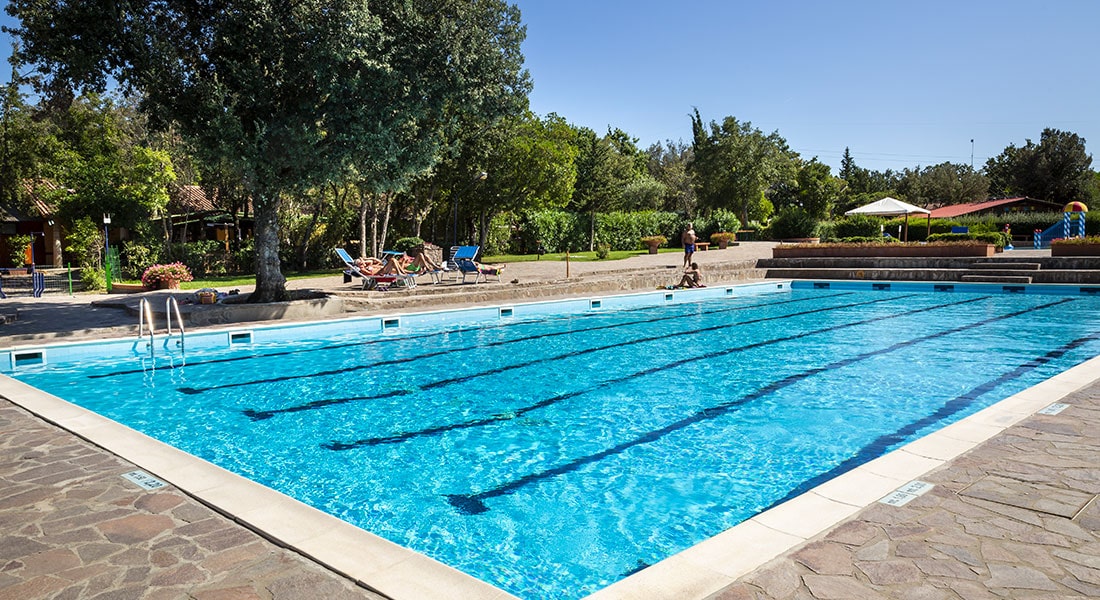
hu Montescudaio village , Tuscan Coast
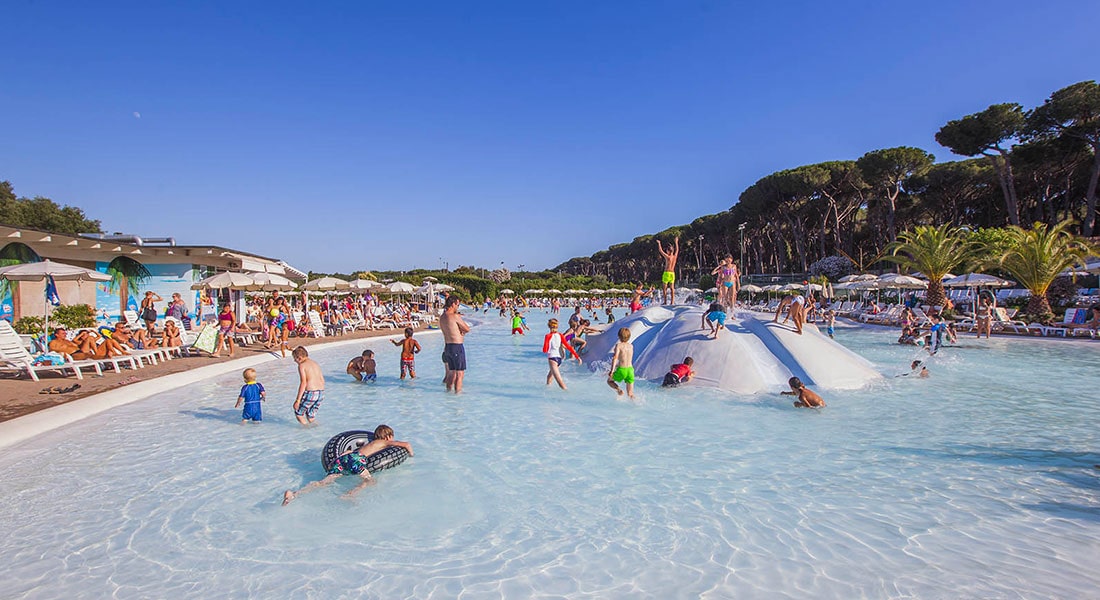
Fabulous village, Rome
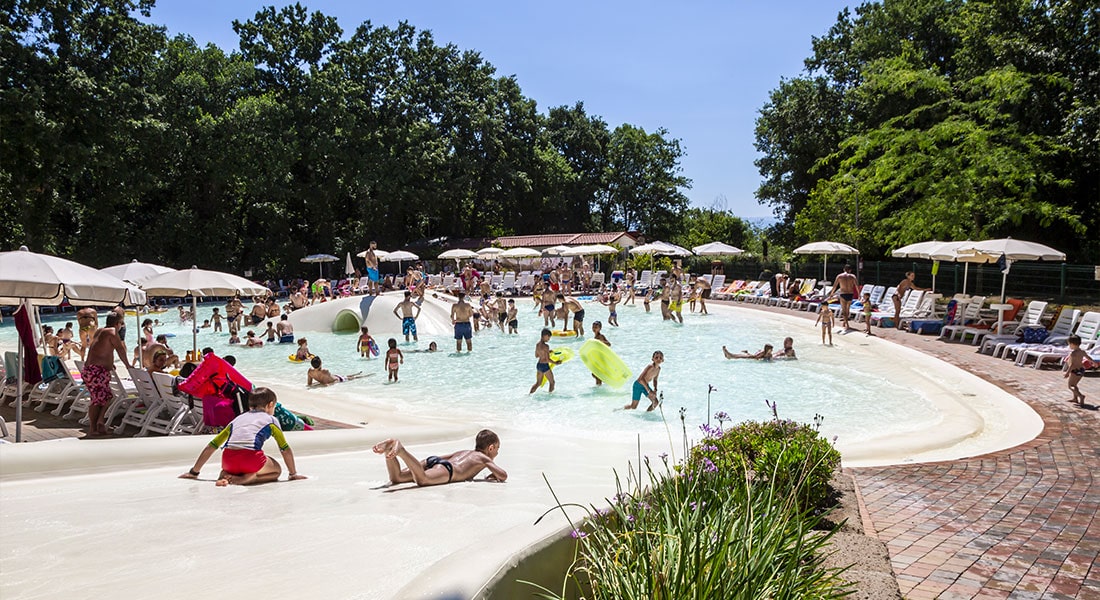
hu I Pini village , Rome
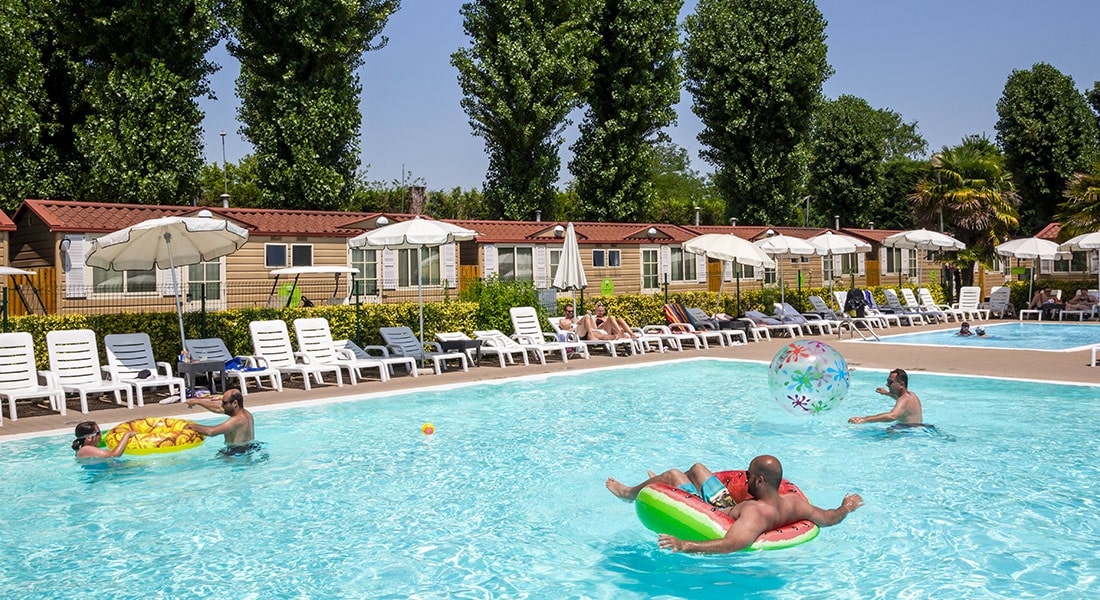
hu Venezia camping in town, Venice
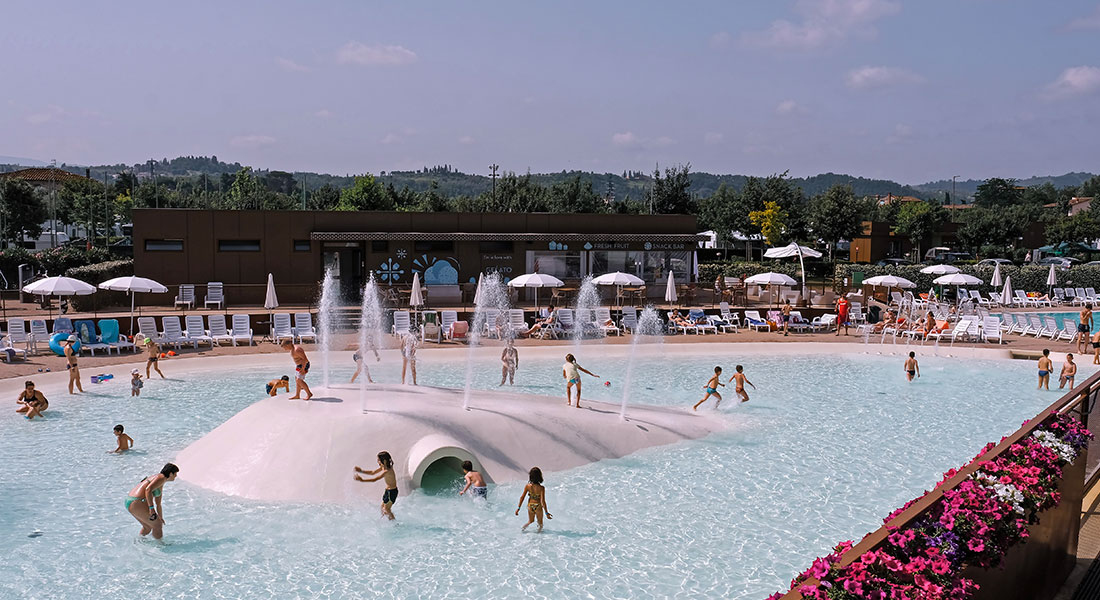
hu Firenze camping in town, Florence
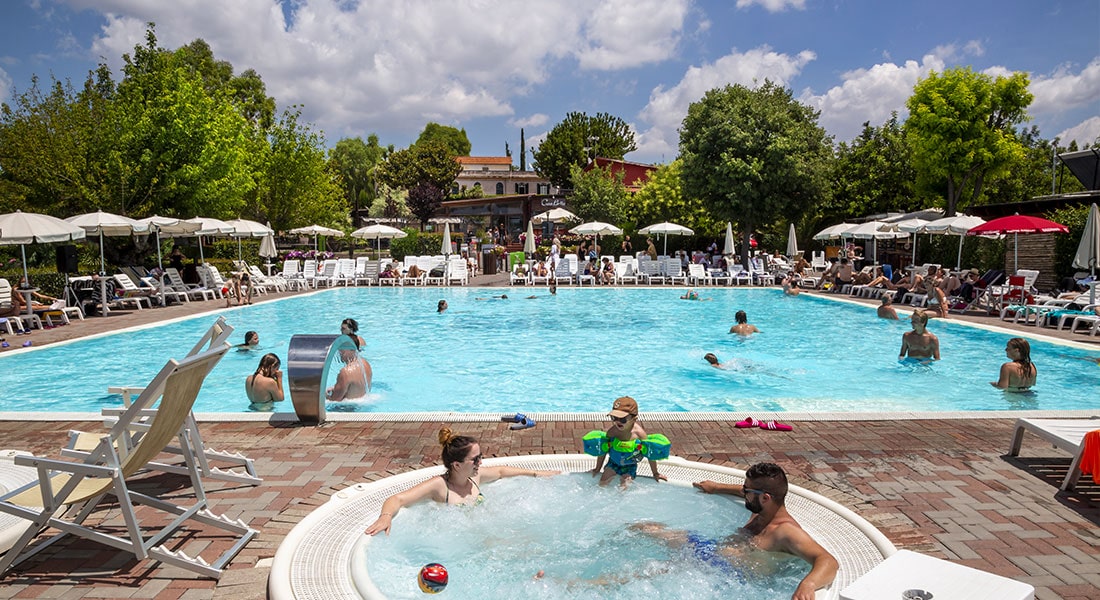
hu Roma camping in town , Rome
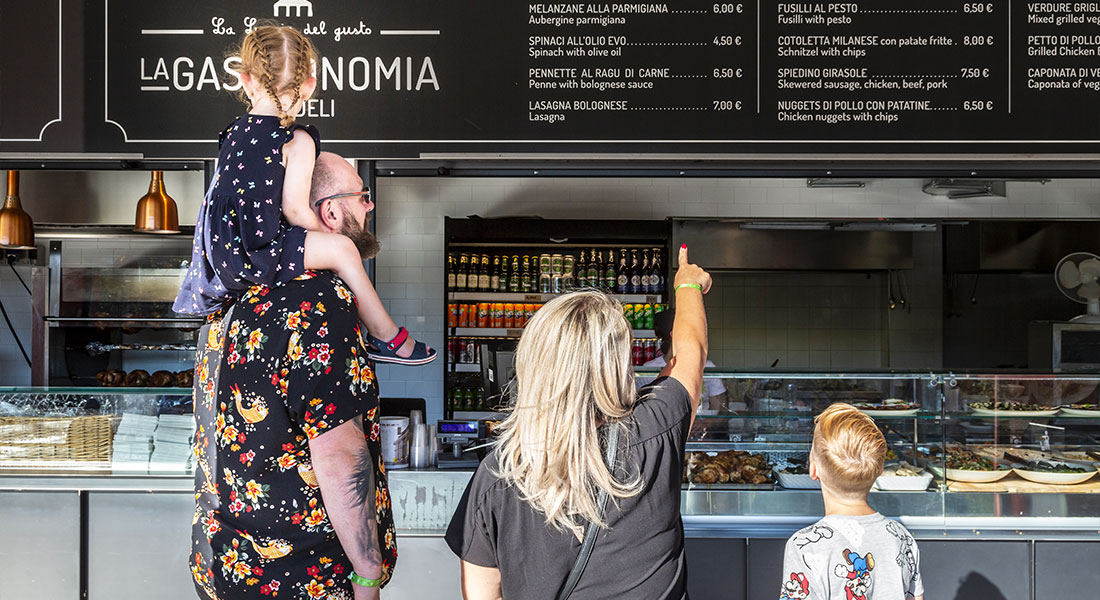
Food in a hu open air
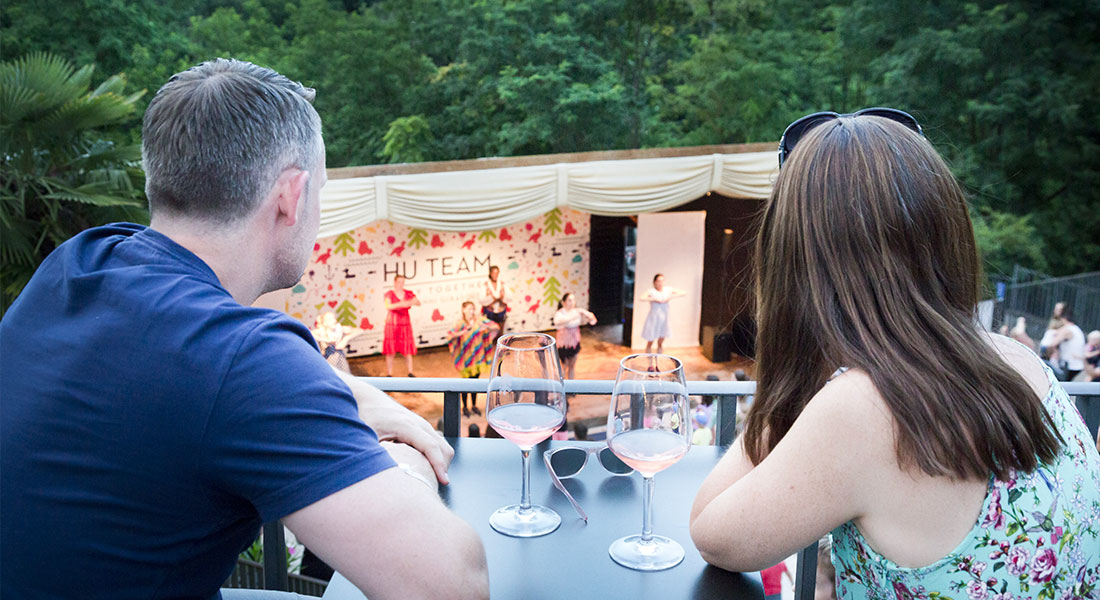
Entertainment in a hu open air
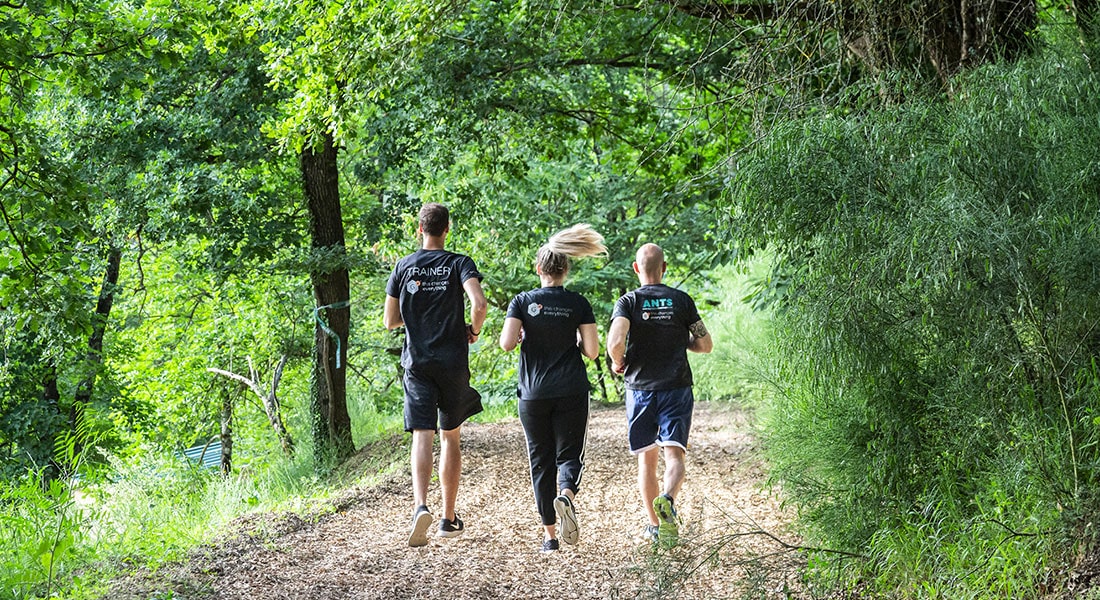
ANTS - Activity Nature Training Sense
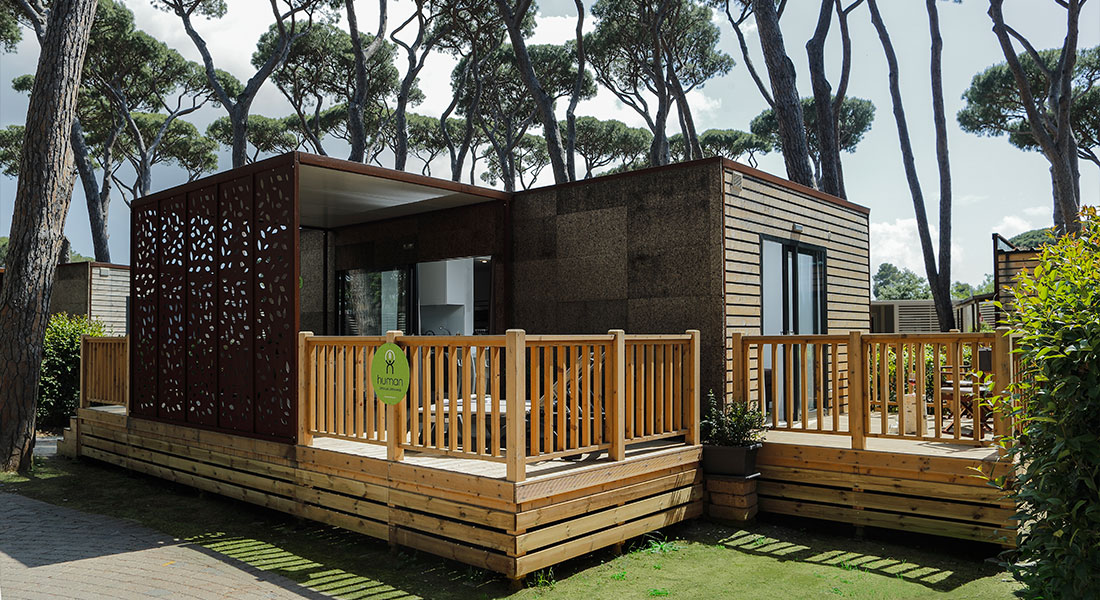
hu stay Premium Green - For an eco-friendly, sustainable holiday,

Interior - hu stay Premium Green - For an eco-friendly, sustainable holiday,
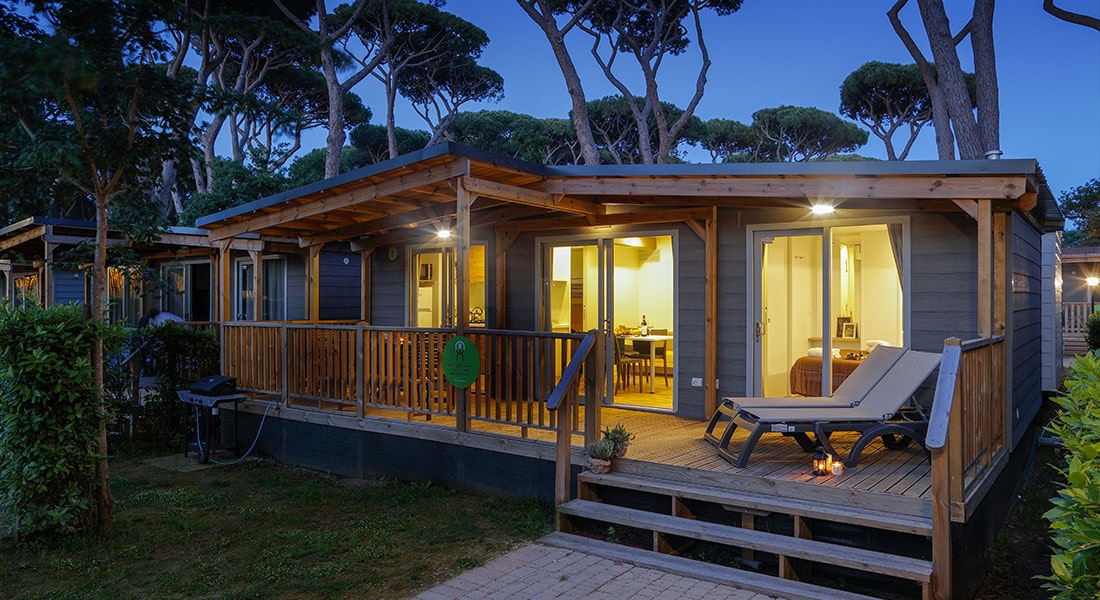
hu stay - mobile home - a hu open air
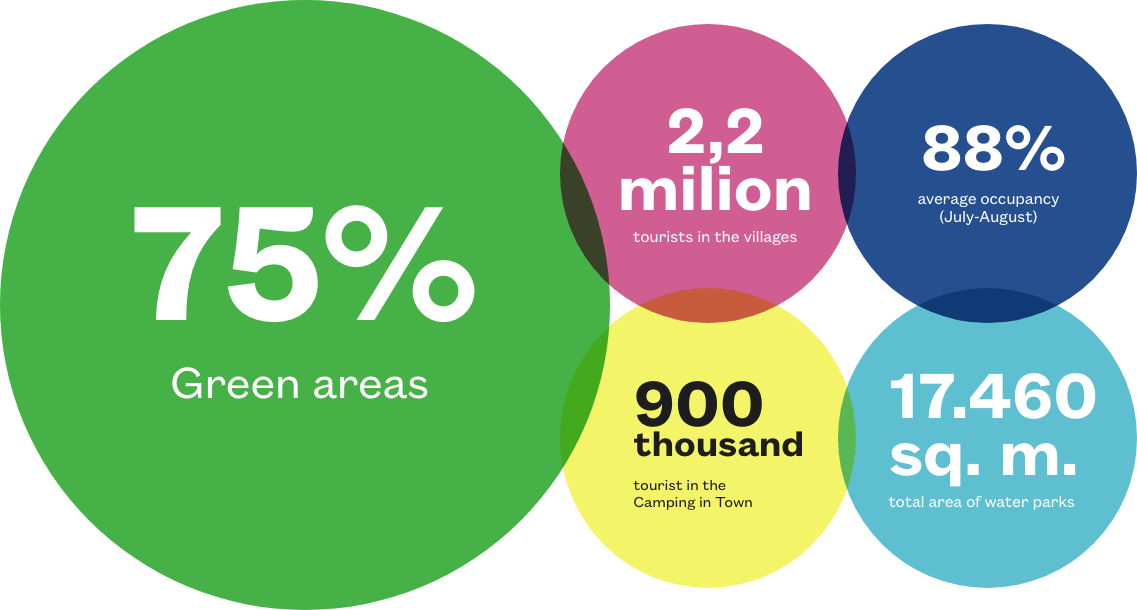
kilometres travelled on bike
laughs on the slide
"welcome back"
books read under the beach umbrella
toasts made with red wine
kg of spaghetti with tomato sauce
We’re in Myanmar right now and it’s SO epic… click here to follow along on Instagram.
- Meet the Team
- Work with Us
- Czech Republic
- Netherlands
- Switzerland
- Scandinavia
- Philippines
- South Korea
- New Zealand
- South Africa
- Budget Travel
- Work & Travel
- The Broke Backpacker Manifesto
- Travel Resources
- How to Travel on $10/day
Home » Europe » Italy » Rome
EPIC 3-Day Rome Itinerary! (2024 Guide)
Ah, Rome: the colossal, eternal city that’s thrived for well over 2000 years now. From the Roman Empire to the Renaissance and from the Second World War to the era of snap-happy tourists, Rome has seen many an empire rise and fall.
Simultaneously elegant and down-to-earth, the Italian capital manages to charm everyone from history lovers in search of ancient ruins to fashionable hipsters looking for the next best espresso. And I’m pretty sure that you’re next to fall in love with the Roman dolce vita !
Visiting the treasure trove that is the city of Rome can be totally overwhelming for many but there’s no need to let that put you off: I’m right here for you!
My 3-day Rome itinerary has plenty of advice, including what to do, helpful insider tips, and plenty of food recommendations. Whether you’re planning a trip to Rome or already right in the heart of the Eternal City, I’ve got you covered!
A Little Bit about this 3-Day Rome Itinerary
Where to stay in rome in 3 days, rome itinerary day 1: ancient rome and the historic quarter, rome itinerary day 2: vatican city, rome itinerary day 3: the other side, what to do with more than 3 days in rome, best time to visit rome, how to get around rome, what to prepare before visiting rome, faq on rome itinerary, final thoughts.
Backpacking in Italy is an unbelievably amazing experience as the whole country is gorgeous. Rome simply stands out even more!
If you want to do Rome in a day, you will probably have to decide between either the Vatican or the Colosseum as they are kind of far apart. Alternatively, you could admire The Colly from the outside in the morning and then make your way over to the Vatican or vice versa.
If you’re wondering how many days in Rome you should spend, I advise you to spend at least three days in Rome as the city is packed with major attractions and it’s just so awesome. With 3 days in Rome, you’ll be able to explore the Roman ruins and visit the Vatican at a leisurely pace. If all you have is a weekend in Rome then you should do the Vatican on Saturday and then explore Roman life and history in the city center on Sunday – you won’t have time for much else.
3 days in Rome will also allow you to explore a few lesser-known landmarks at a more laid-back pace. Ideally, though, you should spend at least five days in Rome to make the most of the Eternal City’s numerous attractions as well as fill up on the delicious food – perhaps even consider some food tours .
On top of that, make sure you choose the right location. Many of Rome’s epic hostels are ideally located in the center of the city so you’re well connected to all other areas, but there are some quieter neighborhoods that offer affordable prices just south of the Colosseum – amazing, considering Rome can be quite expensive .
If you have a few more days, you’ll be able to discover some of the city’s hidden gems. That said, a week in Rome can be pricey. Consider buying a Roma Pass if you plan on visiting a lot of extra museums and local attractions – it will give you free entry to most of Rome’s top points of interest. You’ll also get to skip the line at these!
If you follow this 3-day itinerary for Rome strictly though, you won’t need a Roma Pass.

Unlock Our GREATEST Travel Secrets!
Sign up for our newsletter and get the best travel tips delivered right to your inbox.
3 Day Rome Itinerary Overview
- Day 1 in Rome: The Colosseum, Roman Forum, Capitoline Hill, Altare Degli Patria, Piazza Venezia, Monti, Trevi Fountain, Pantheon, Piazza Navona, Campo de Fiore, Jewish Quarter
- Day 2 in Rome: Vatican City, Vatican Museums, St Peter’s Square, St Peter’s Basilica, Castel Sant’Angelo, Piazza del Popolo, Spanish Steps, Via del Corso
- Day 3 in Rome: Bathes of Caracalla, Circus Maximus, Bocca della Verita, Giardino delgi Aranci, Pyramid of Caius Cestius, Ostiense, Trastevere
- More Places to See in Rome: Villa Borghese, Quartiere Coppedè, Appia Antica, Parco degli Acquedotti

With a Rome City Pass , you can experience the best of Rome at the CHEAPEST prices. Discounts, attractions, tickets, and even public transport are all standards in any good city pass – be sure invest now and save them $$$ when you arrive!
When visiting Rome for the first time, you need to get your bearings as it’s a big city, but most of central Rome’s ancient historic sites are within walking distance. So let’s loosely break it down.
To the west is the Vatican and to the east is the Stazione Termini, the central transport hub for bus and train (including from the airport) and a bustling area in its own right.
To the south are the iconic Colosseum and much of the Roman city, while the Villa Borghese Gallery is to the north.
That said, let’s identify where to stay in Rome within this area. Top of the list is Centro Storico, the historic city center. Although it’s one of the pricier neighborhoods, it offers really good value: the Trevi Fountain, the Spanish Steps, and the Pantheon are right on your doorstep!
Tridente is technically a part of Centro Storico but it’s a decidedly classier part. Prices are at a premium but it’s long been popular with celebrities and is surrounded by luxury stores.
For something more off the beaten track, we recommend Trastevere. It’s an effortlessly cool, shabby-chic area that bustles with hipsters exploring cobbled alleyways during the day and partying it up come nightfall. This Roman neighborhood is home to lovely shops, restaurants, and a few stunning historic sites, such as the Basilica di Santa Maria.
The Rome Airbnb scene is also booming and many are very well priced.
Best Hostel in Rome – Dreaming Rome Hostel

Dreaming Rome Hostel is my pick for the best hostel in Rome! Recommended by over a thousand guests, Dreaming Rome Hostel is certainly doing something right. It comes with all the essential facilities (free WIFI and maps), is close to the Colosseum and is impeccably clean. It’s the welcoming atmosphere, though, that wins smiles. The owners are hands-on and provide their guests with individualized attention. There are also pasta nights every night and pizza on Sundays. Yummy!
Best Budget Hotel in Rome – Residenza Maritti Contemporary Suite
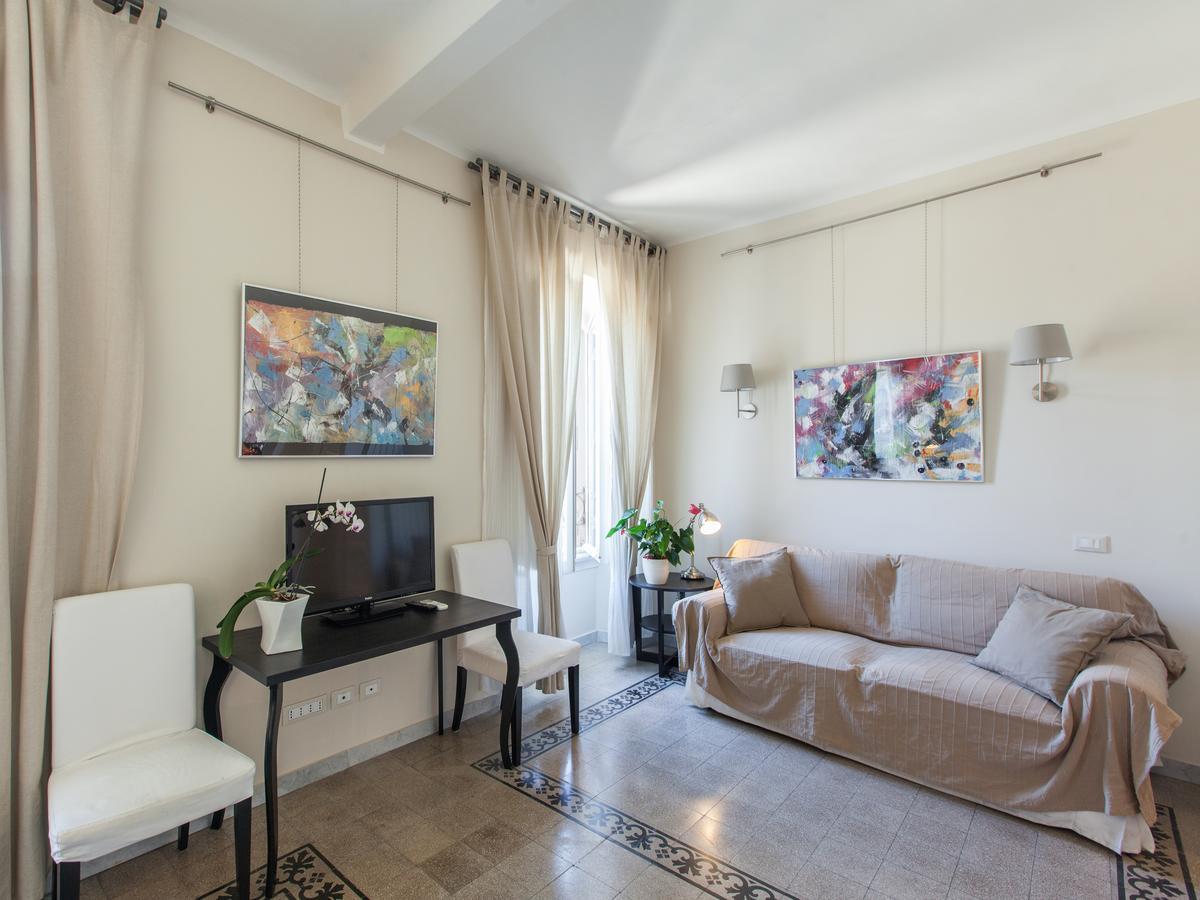
Located in the heart of the city, Residenza Maritti Contemporary Suite is a real gem! It combines contemporary style (spacious rooms with flat-screen TVs and cashmere fabrics) with a historic charm (gorgeous views of the Roman Forum and antique ornaments). It’s just 200m from the Roman Forum, has a superb terrace for socializing, and is consistently praised for the friendliness of the staff.
Best Luxury Hotel in Rome – Singer Palace Hotel
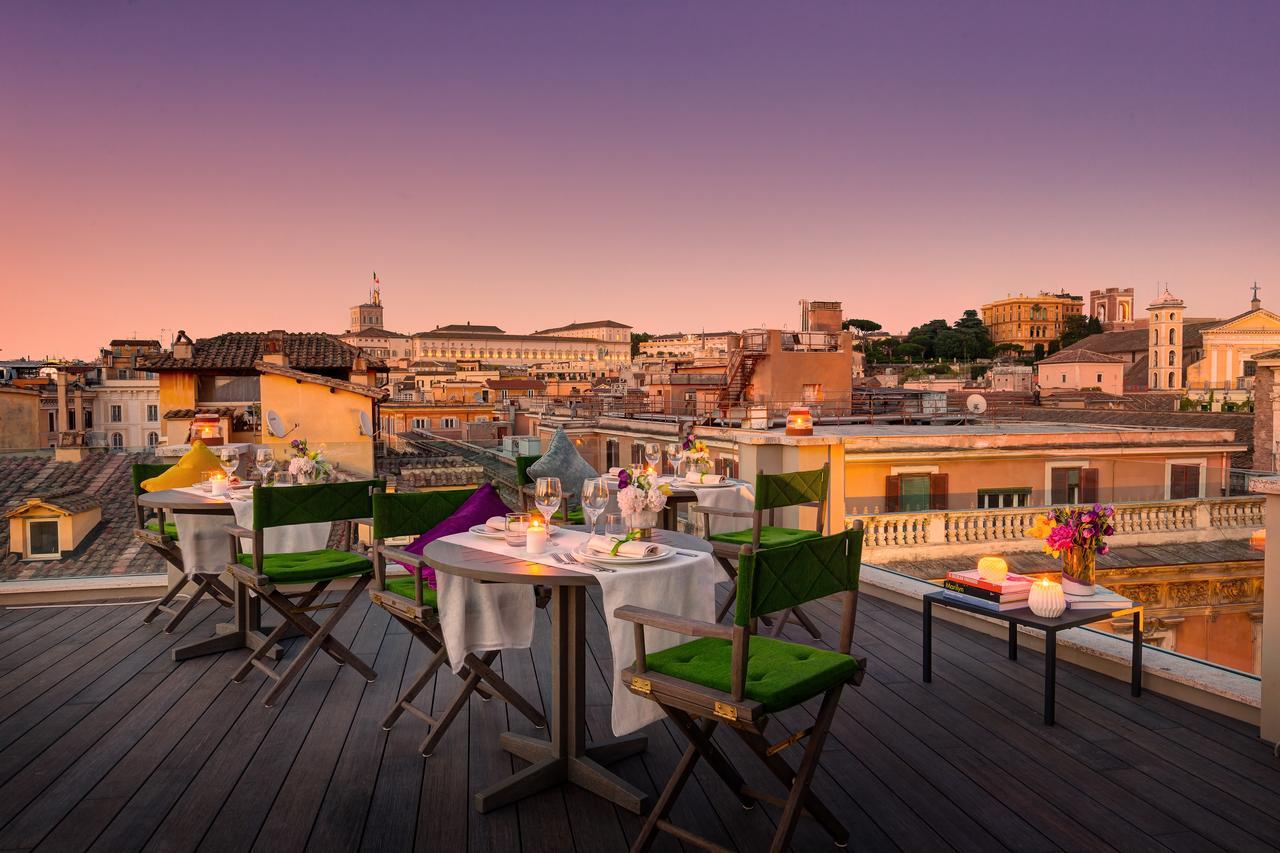
The 5* Singer Palace Hotel is one of a kind! 350m from the Trevi Fountain and 5 minutes from the Pantheon, the Singer Palace has a location spot-on. And then there is the hotel itself: a 20th-century palace with gilded furniture, a rooftop terrace with breathtaking views, and a restaurant serving up scrumptious Italian pasta and seafood. Lucky you!
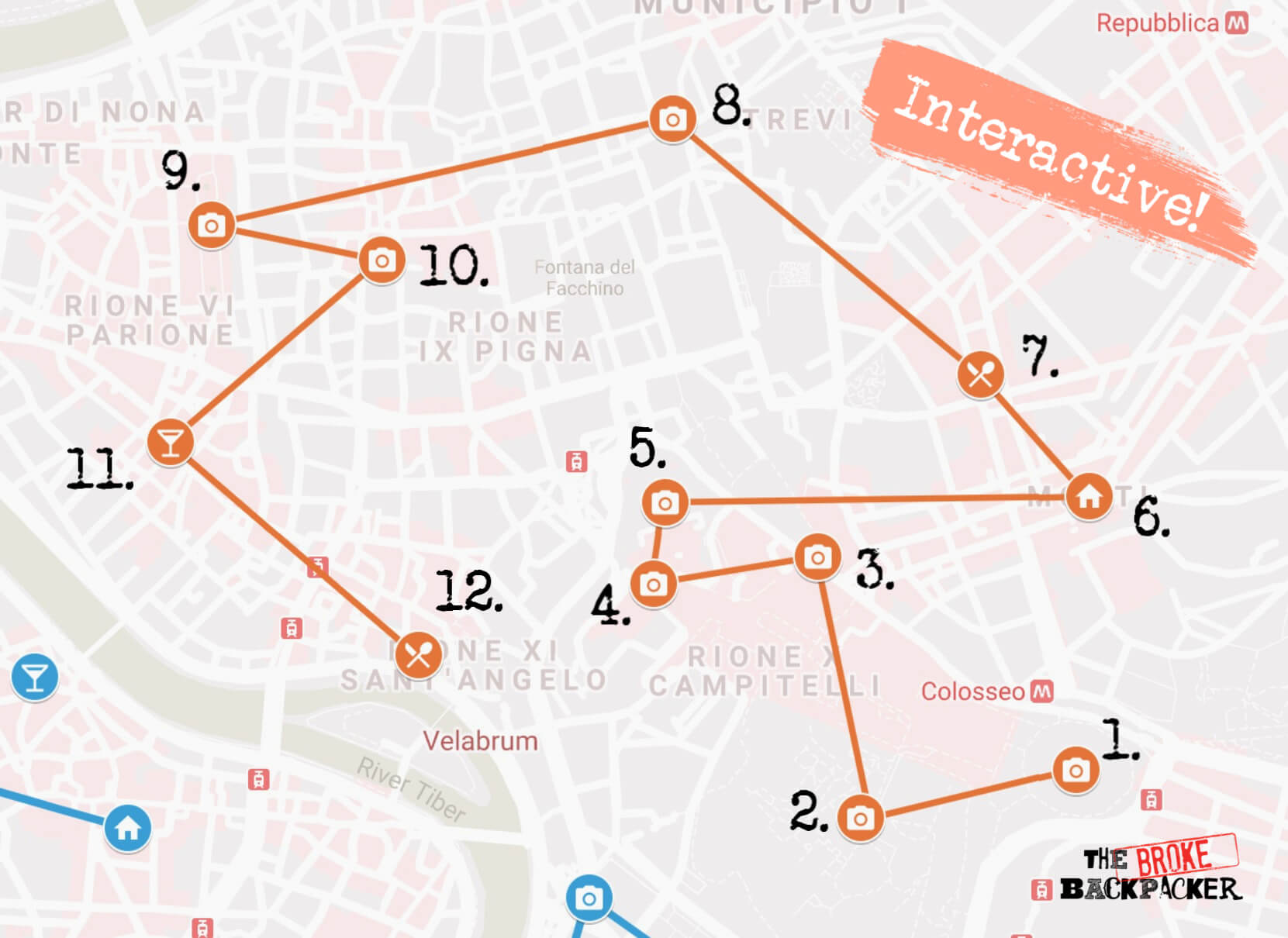
The first day of my perfect Rome itinerary is devoted to the city’s most iconic landmarks, including the Colosseum, Roman Forum, Pantheon, and Trevi. This is going to be a whirlwind of a day so make sure wake up early, have a good breakfast, and a strong espresso before heading out!
Every map that you see in this article includes a hyperlink to an interactive version on Google Drive. After clicking the map image, the interactive version will be opened in a new tab.
8:30 am – Colosseum

As the icon of the Roman Empire and an ancient Wonder of the World, the Colosseum is one of the best things to see in Rome in 3 days. Historians believe it was built over an eight-year period and completed in 80 AD.
For over 500 years, the Colosseum was the place to have fun in Rome. There were gladiator fights, exotic animal displays, and executions of infamous prisoners all taking place to the roaring approval of the ancient Roman crowd.
Things are a lot less bloody today but there is still a lot of fun to be had with a visit to the Colosseum!
Note that it’s not exactly one of Rome’s hidden gems : the queues to enter the Colosseum are big (and even bigger in summer). If you don’t already have some sort of tourist pass that allows you to skip the line, bank half a day to get in, around, and out again.
Admiring the building from the outside is one option as this will save you time as well as $13 but you may end up regretting not going in. Guided tours obviously take longer than a DIY trip so you need to work out what is more important (1) historical context or (2) saving time.
If you don’t have a Roma Pass, buy your tickets at the Palatine Hill ticket office, instead of at the Colosseum, as the lines are a lot shorter! For the ones that are more interested in the history and hidden details of the Colosseum, you should check out a VIP tour ! It will take you to secret tunnels, old cages where they kept lions and tigers, and to the third ring (all of this is a restricted area for normal visitors so you can enjoy exclusive access) – definitely a cool adventure that not everyone gets to experience!
- Cost – $13 entrance to the Colosseum, Palatine Hill, and Roman Forum.
- How long should I stay here? 2-3 hours
- Getting there – Metro Line B stops directly in front of the Colosseum.
10:30 am – The Roman Forums and Palatine Hill
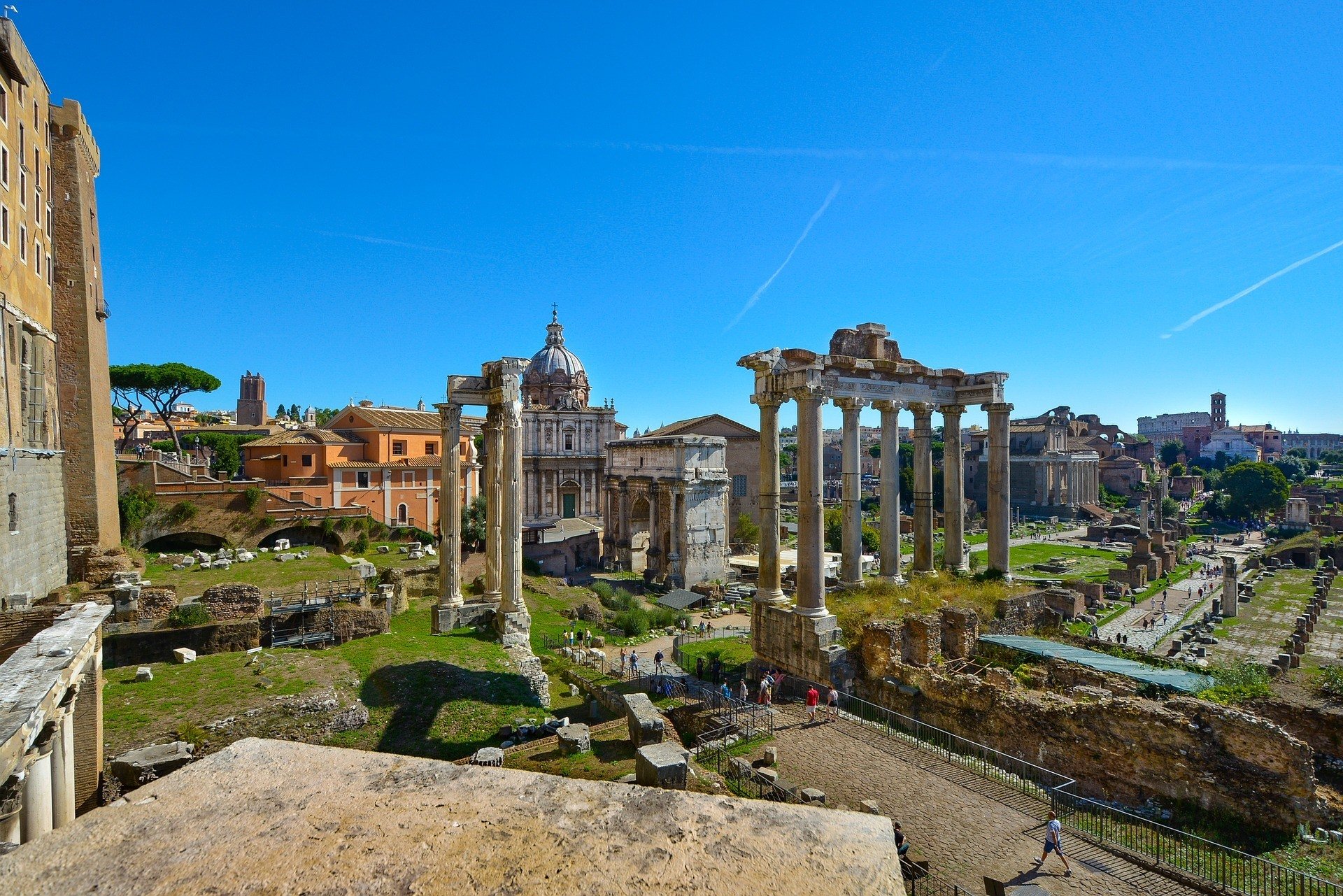
The Colosseum and Roman Forum are located right across from each other, so it makes sense to see this site next. The Roman Forum was once Rome’s city center of one of the most powerful empires in history! Walking through the ruins is like stepping back in time. The archaeological site is significantly lower than the surrounding attractions, meaning that there are some amazing views of ancient and modern Rome side-by-side.
The site was essentially the central business district of its time, full of temples and civic buildings. You can still visit the Temple of Julius Caesar, where the famous general was cremated after his assassination. There is also the Lapis Niger, the marble slab that legend holds to cover the tomb of Romulus, the founder of Rome.
Perhaps most impressive, though, is that you can view the Roman Senate in all its glory, thanks to a 1937 reconstruction of the renowned building.
The Roman Forum is a huge site and can be overwhelming if you don’t have a guide. That said, there are few archaeological sites in the world that are so extensive and evocative so this really is top of the list of places to visit in Rome in 3 days!
The lines here are a lot shorter than the ones for the Colly and I was in and out within an hour even in August. That said, if you go with a guide who stops to explain everything, that will take a lot longer.
If you like the Roman Forum, you should also consider taking a trip to Largo di Torre Argentina – the remains of collection of four roman temples and a theatre. However, if you are running out of time, you could skip this and not miss out.
Tip tip: consider getting tickets online for a Colosseum and Roman Forum combined tour, as they are located next to each other.
- Cost – Included with the purchase of a Colosseum ticket.
- Getting there – You can access the Palatine directly from the Colosseum. Otherwise, the forum is a 5-minute walk up Via dei Fori Imperiali.
12:00 pm – Capitoline Hill and Altare Della Patria
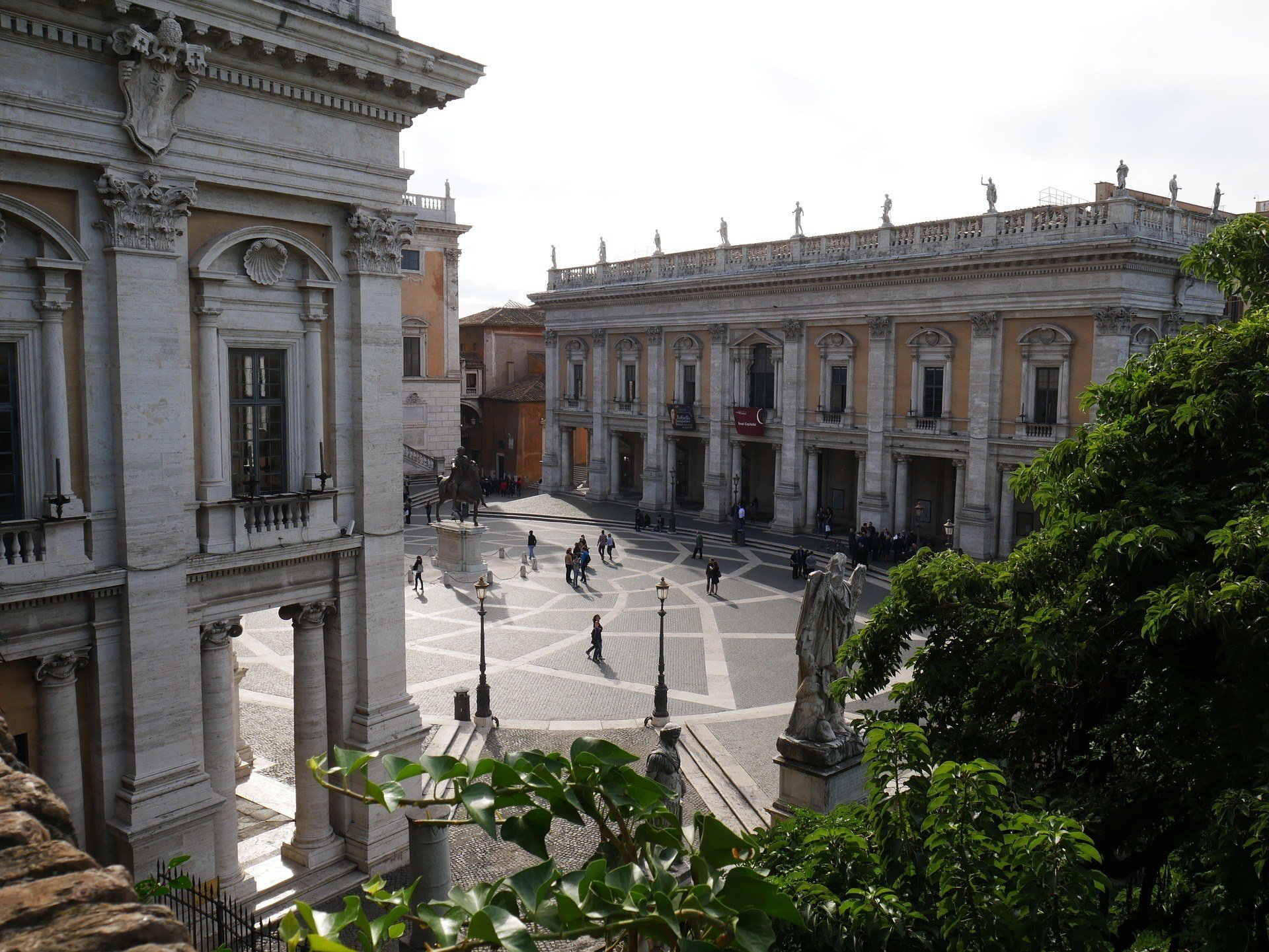
Right next to the Roman Forum, the Capitoline Hill continues your journey into ancient Rome. The Capitoline Hill was predominantly a religious center for the Romans, concentrated around the Temple of Jupiter. To get a sense of how majestic the building was, head into the Capitoline Museums, and be aware that you could easily spend an entire day inside them.
Insider Tip: You don’t need a museum ticket to visit the museum cafe, nor do you need to buy anything to take in the views so even if you skip the museum, the cafe terrace is one of the best things to see in Rome!
The Capitoline Hill is also home to some stunning Renaissance landmarks. The most beautiful of these is the Piazza del Campidoglio which was designed by Michelangelo.
If you go around behind the Capitoline Museum, you’ll also be afforded one of the best views of the Forum as well.
The Victor Emmanuel II Monument or the Altare Della Patria was built to honor the first Italian king and is also an immensely impressive site. It is an enormous and humbling structure (that was probably Mussolini’s intention when he oversaw the construction) and is definitely worth entering. Make sure you walk to the upper balcony for another great view.
Fun fact: the square in front of the Altare, Piazza Venezia, is where Mussolini used to deliver his speeches.
- Cost – The hill and Altare are both free; entrance to the Capitoline Museum is $13.
- How long should I stay here? An hour for the Altare. Longer if you enter the museum.
- Getting there – Another 5-minute walk from the Roman Forum. Note that the main street here is closed for commuter cars but is still used by buses and taxis.
1:00 pm – Lunch in Monti
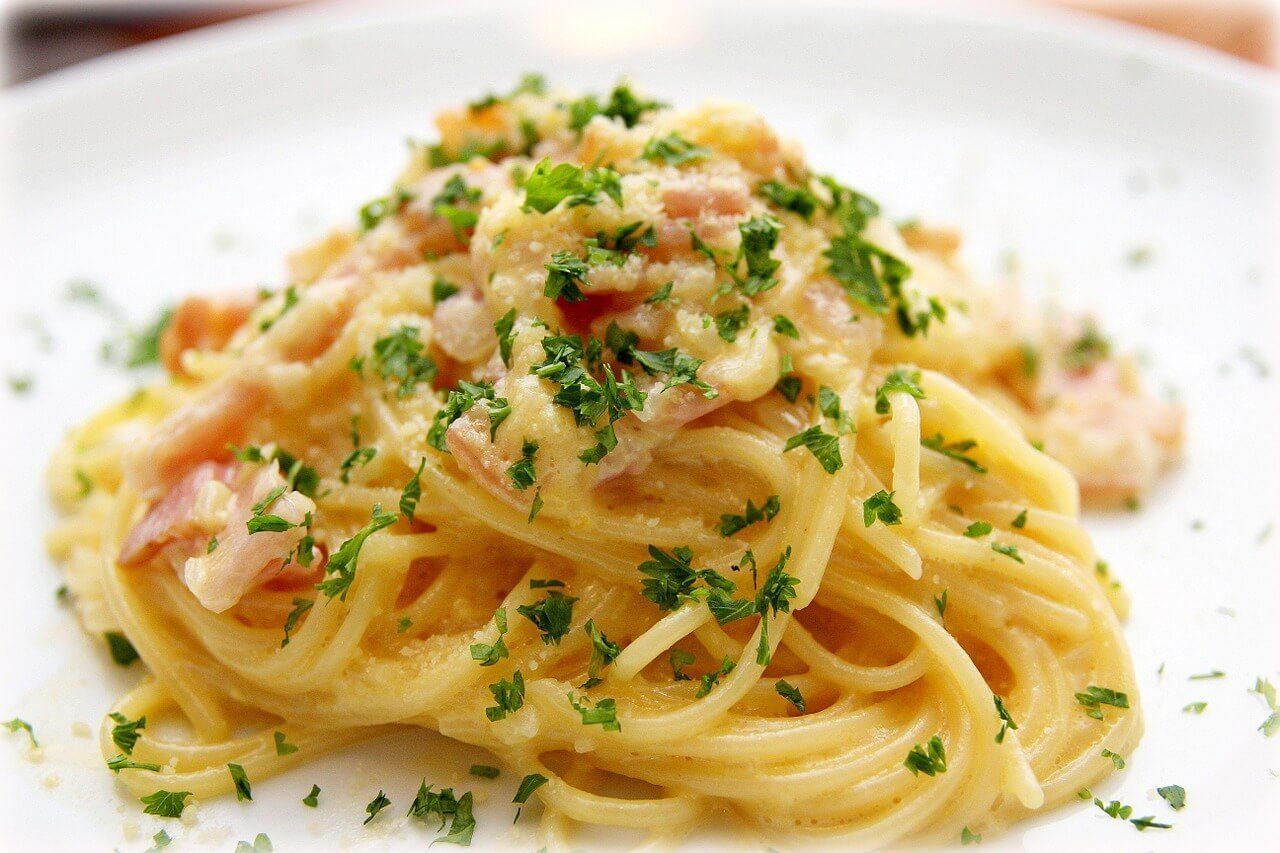
Monti is considered the artist’s district of Rome, which means that there are lots of artisan shops, boutiques, and local clothing stores around. It is a great place to shop as well as to stop and have a bite to eat. There are many high-quality restaurants in Monti that offer meals at relatively affordable prices.
One of the best places to eat in Monti is Osteria Olivia. From the outside, this place is barely recognizable, aside from the old, broken truck parked outside, which now serves as a bench. Inside though are the delicious aromas of classic Roman cuisine.
Osteria Olivia makes one of the best carbonaras in Rome, a dish that is iconic to the city. It is perfectly cooked and extremely filling. You’ll probably want a coffee or digestif after eating one; pop on over to Magasin bar next door, which is owned and operated by the same people at Olivia. Take your time and recharge your batteries for continuing your 3-day Rome itinerary.
- Cost – Lunch should be around 10 euro.
- How long should I stay here? A couple hours to eat, relax, and digest.
- Getting there – Monti is a relatively small neighborhood and is right next to the Roman Forums. Osteria Olivia is about a 10-minute walk from the latter.
3:00 pm – The Trevi Fountain
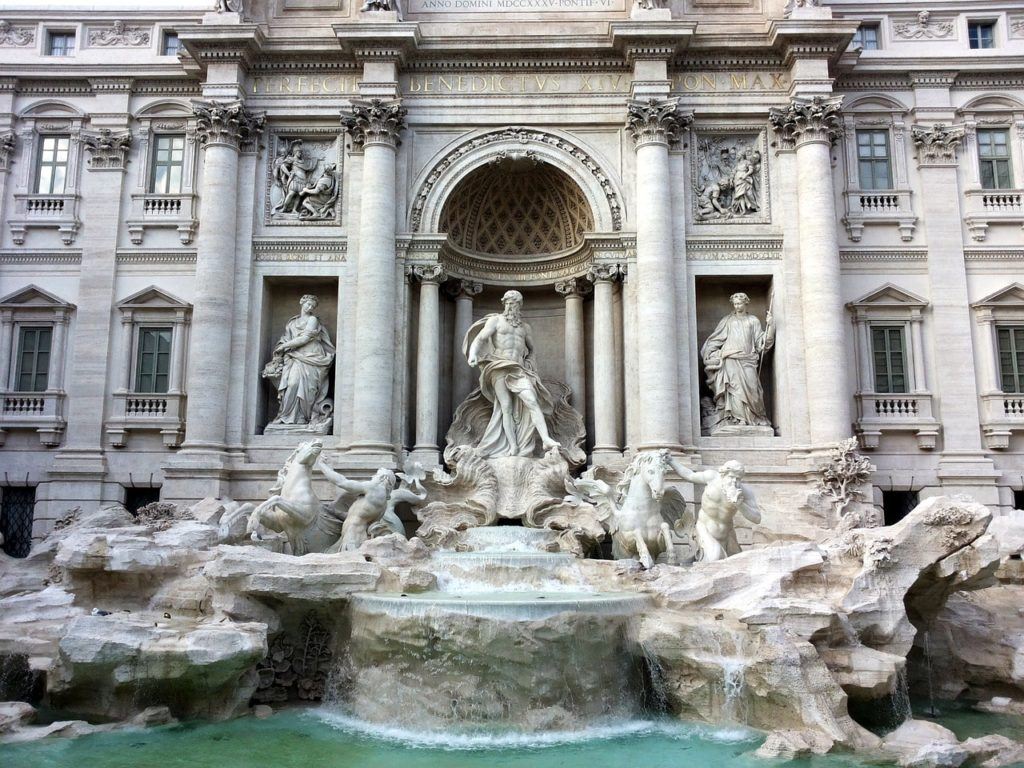
After a nice relaxing lunch and another tall cafe, we head to the Centro Historico of Rome. This is where many of Rome’s masterpieces can be found, including the Trevi Fountain.
The Trevi Fountain is as legendary as Rome itself: according to the myth, if you throw in a few coins, you’re sure to return to the Eternal City!
There aren’t many fountains in the world that have their own websites but that’s just how popular the Trevi Fountain is! The fountain that you see today is a reworked version of one that was built over 2000 years ago in the early days of the Roman Empire! The famous facade that you see today wasn’t built until the 17th century when Pope Urban VIII thought the old one was too boring.
The intricate reliefs are carved from local marble, with the main statue being a representation of the ancient god of the ocean, Neptune.
Make no mistake: the crowds here can be IMMENSE. If you’d like a more intimate and atmospheric experience visit here in the evening instead.
- Cost – A few cents’ donation to make your wish!
- How long should I stay here? Not too long. It gets hectic here.
- Getting there – From Monti, it’s about 15-20 minutes walk through the Quirinale area, which is where the government conducts national affairs.
4:00 pm – The Pantheon
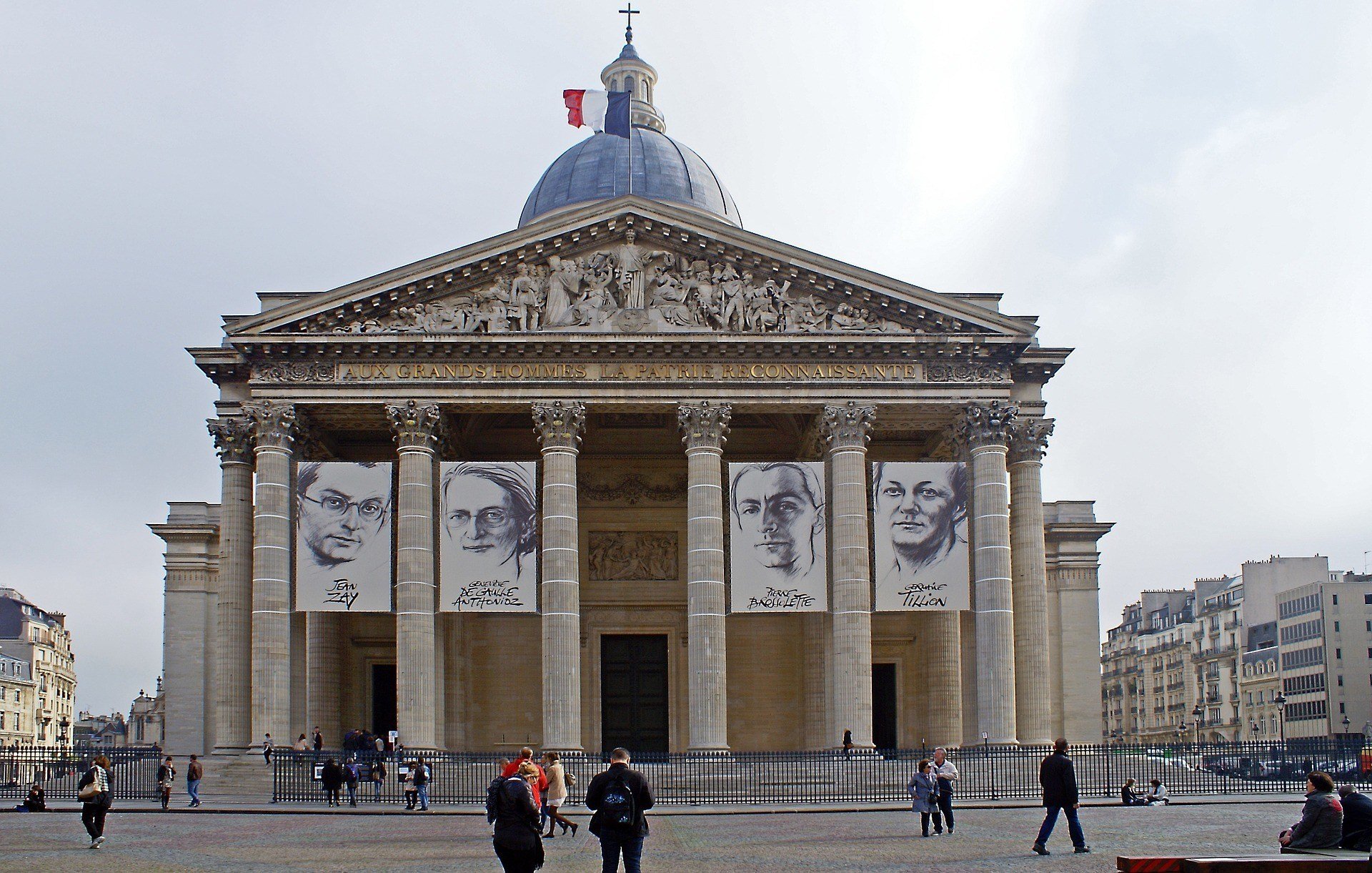
The ancient Romans certainly knew a thing or two about architecture and left us the Pantheon to prove it! This brilliant building still hosted the world’s largest unsupported, masonic dome, and is a marvel of proportions. The interior was specifically designed to big enough to cause awe yet small enough to be completely taken in by the human eye.
Insider Tip: For a truly magical experience, attend Mass at the Pantheon .
The current Roman temple was built in 125 AD, after two previous versions were destroyed by fires, and the third time certainly was a charm! Originally intended to be a shrine to all forms of religion, the temple was later converted into a church and a cemetery for early Christian martyrs. Raphael, the renowned Renaissance painter, and King Victor Emmanuel II are also buried in the Pantheon.
Although the Pantheon is free to enter, I highly recommend getting an audio guide so you know what you are looking at.
- Cost – Free!
- How long should I stay here? At least an hour.
- Getting there – A 10-minute walk roughly due west from Trevi Fountain.
5:00 pm – Piazza Navona
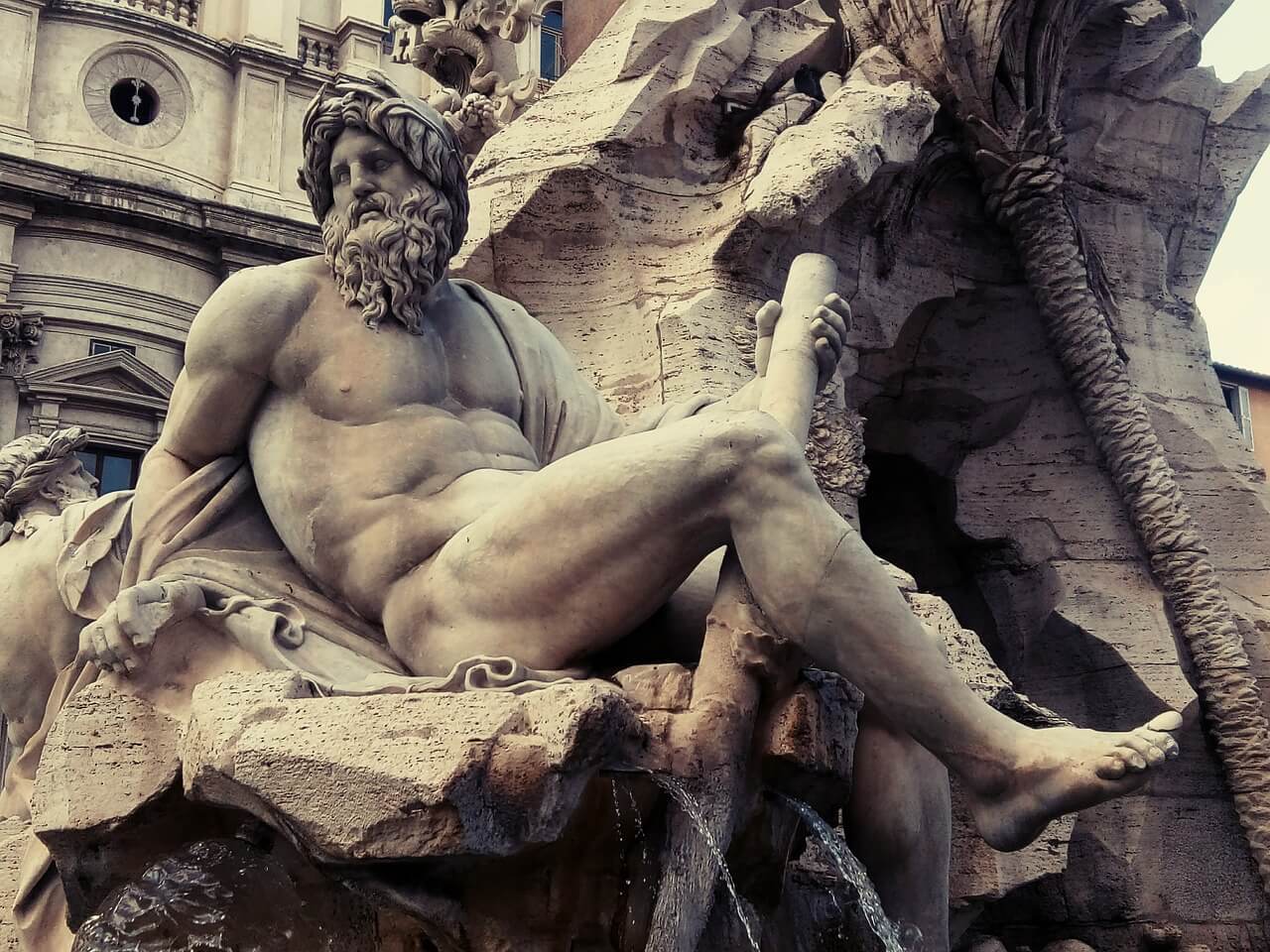
After Trevi, Piazza Navona hosts probably the second-most famous fountain in Rome called the Fountain of the Four Rivers. Constructed by the legendary Bernini in a slightly ironic manner after Pope Innocent commissioned it in 1651 – read the story – the fountain is a masterpiece of sculpture. Many people actually prefer Navona to Trevi!
Piazza Navona itself is much larger and more spacious than the square where the Trevi Fountain is located. One can actually breathe here and can sit down for a moment of respite. After a long day of walking around Rome, now is a good time to start and slow down and rest a little.
Next to the Fountain is the Church of Sant’Agnese in Agone. It’s one of the more notable churches in Rome and you should definitely pop in for a moment. Entry is free.
At the southern end of Piazza Navona you’ll find another fountain: the Fontana del Moro. It’s not as impressive as the Four Rivers but is still worth seeing.
- How long should I stay here? An hour to see the fountain and church.
6:00 pm – Aperitivo in Campo de Fiore
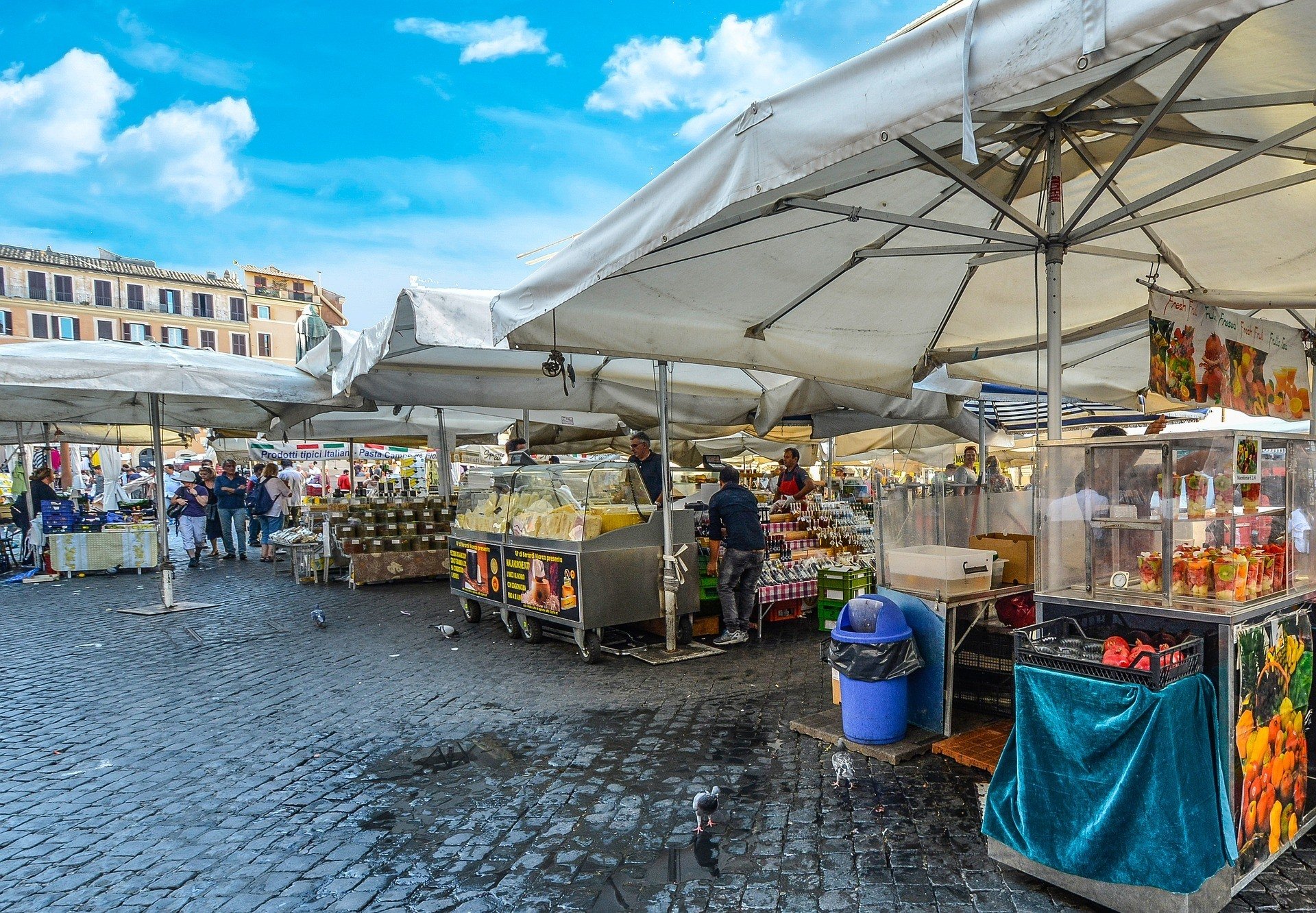
The food market of Campo dei Fiori is located right in the center of Rome. The Campo dei Fiori was once a meadow before it was transformed into a place of public execution eventually becoming the legendary market we know today! The most notable of the executions it witnessed was that of philosopher Giordano Bruno who was burned for heresy in 1600 for his belief that the earth orbited around the sun. His execution is marked by the eerie statue of a hooded monk.
Lovely and colorful, the Campo dei Fiori is everything you would imagine a food market in Italy to be! Some of the delicacies you can sample are artisan meats, fresh fruit, and vegetables, heaps of walnuts, and Tuscan wines. Around the fountain, you will find a picturesque display of cut flowers. During the day, housewives and local chefs jostle over each other for the freshest produce from around Lazio. Then come nightfall, the market takes on a distinctly more hipster vibe!
You don’t need to be cooking in Rome to enjoy the market: you can shop for canned souvenirs, as well as just take in the atmosphere from one of the many bars or restaurants. Though the establishments around Fiori are usually tourist traps, they’re still good for an early-evening snack or aperitivo .
- Cost – between 10-15 euros.
- How long should I stay here? Chill for a couple of hours. No rush.
- Getting there – Across the main street of Corso Vitorio Emanuelle II. Less than 5 minutes’ walk from Piazza Navona.
8:00 pm – Dinner in the Jewish Quarter
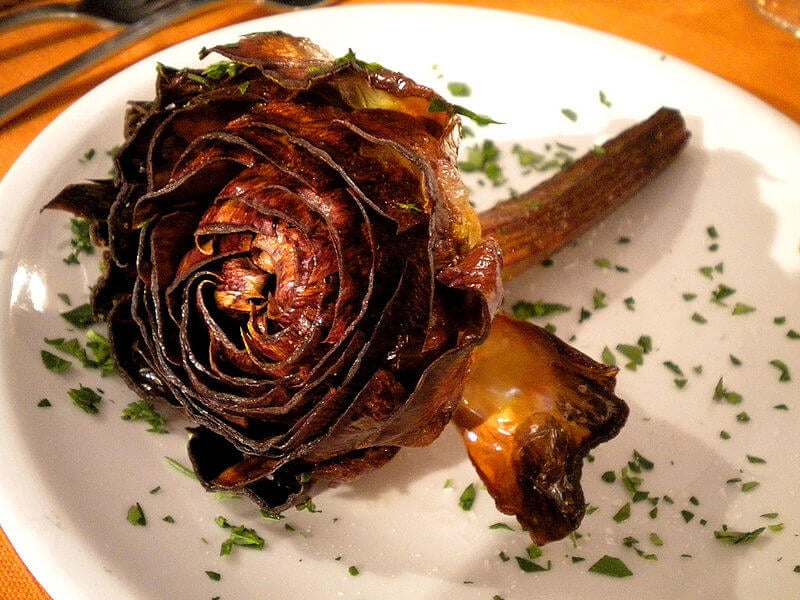
Time to end the day with some more hearty Roman cuisine! You’ve earned it!
One of the most popular places in Rome to have dinner is the old Jewish Quarter. This former ghetto is the birthplace of some of the most famous dishes in the city.
Carciofi or artichokes is one of the most beloved foods in Rome. Locals like them pan-fried in a delicious mixture of white wine, garlic, lemon, and mint or just straight-up deep-fried.
The deep-fried version of the artichoke originally came from the Jewish Quarter, where Jewish locals would make the dish for Yom Kippur. The tradition lasted and would eventually become of the most well-known dishes in Rome. Nowadays, the Jewish Quarter is filled with restaurants and just about everyone offers this dish.
- Cost – Dinners here are not cheap. Be prepared from 30 euros minimum per person.
- How long should I stay here? Take your time! It’s the end of the day.
- Getting there – 10 minutes walk due southeast from Campo die Fiore.

Wanna know how to pack like a pro? Well for a start you need the right gear….
These are packing cubes for the globetrotters and compression sacks for the real adventurers – these babies are a traveller’s best kept secret. They organise yo’ packing and minimise volume too so you can pack MORE.
Or, y’know… you can stick to just chucking it all in your backpack…
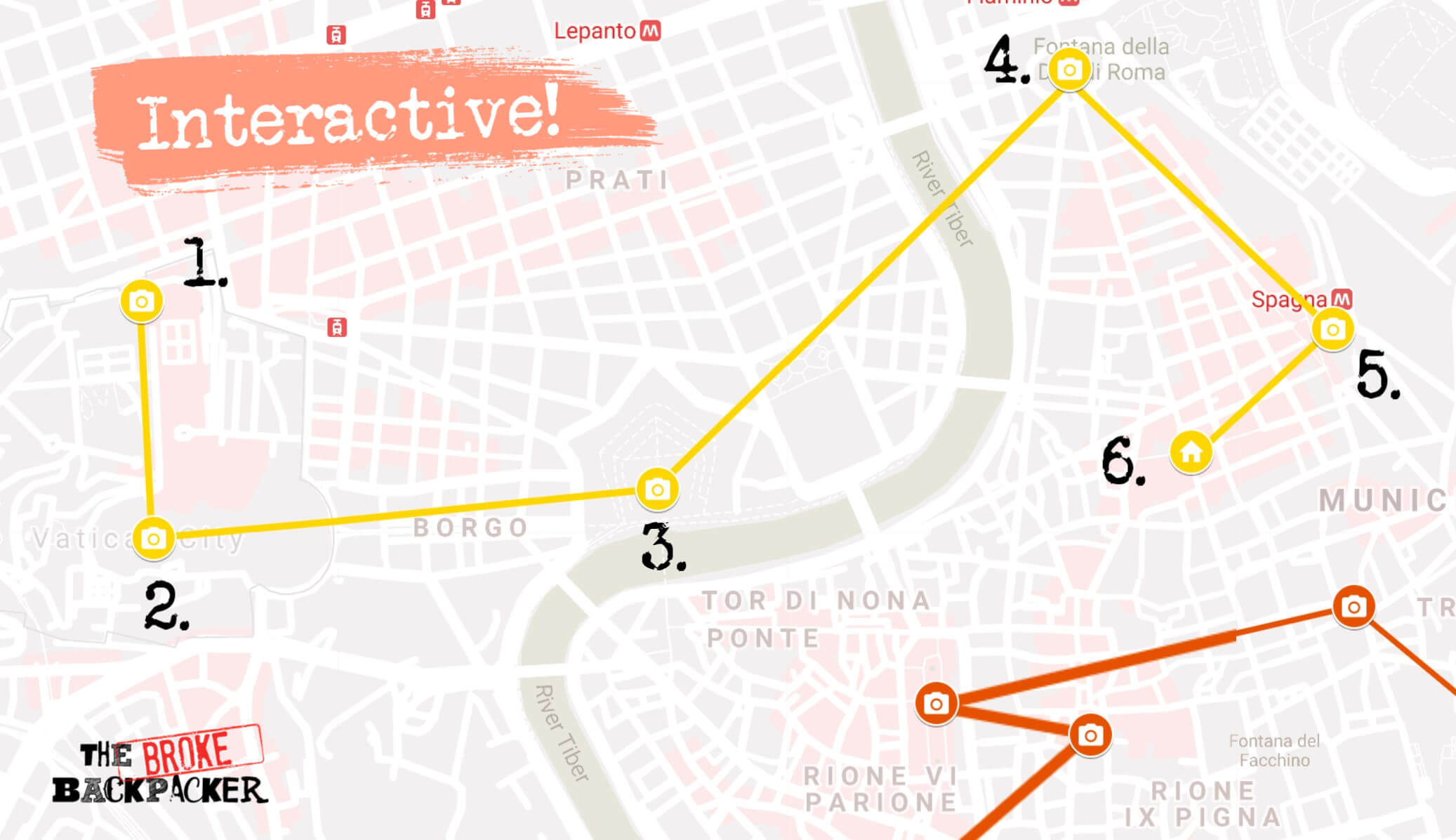
It’s going to be a busy day so have a big breakfast early at your hotel. There is also the possibility of booking breakfast at the Vatican Museums. If you don’t manage this, have breakfast at your hotel and then grab an early lunch at one of the museum’s eateries before heading over to St. Peter’s Basilica.
Make it a good breakfast too because it’s going to be a big day! We’re visiting some of the most admired pieces of art in the world like the Sistine Chapel soon!.
9:00 am – The Vatican Museums
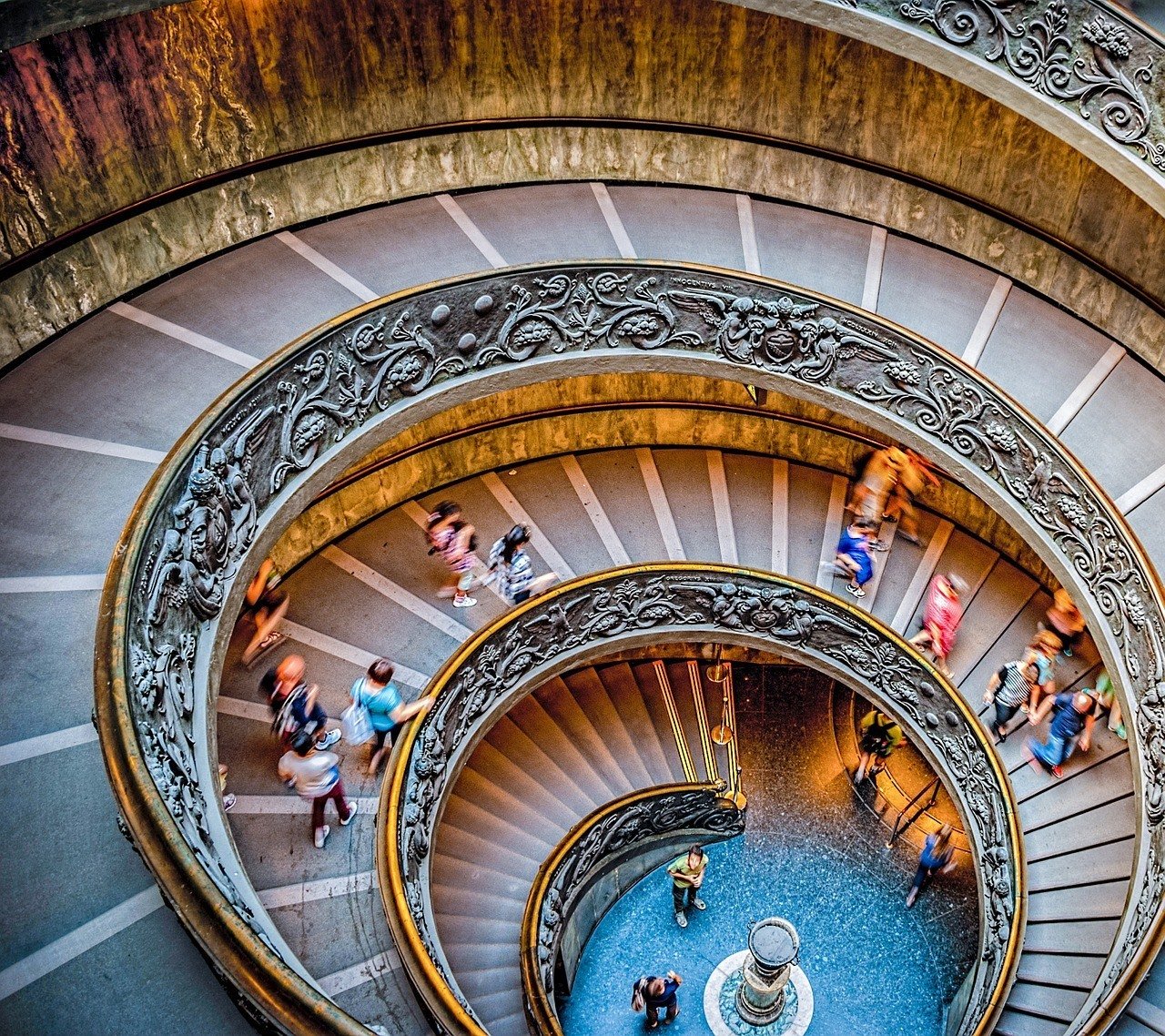
No visit to the Eternal City is complete without a few hours at the Vatican Museums . The world’s largest private art collection is home to some of the most famed artworks by the greats like Michelangelo and Caravaggio!
I cannot recommend a guided tour enough as the museums can be overwhelmingly full of both visitors and artworks. However, it is possible to do a self-guided tour of the museums.
If you’re keen to get up early, I highly recommend the early morning Vatican tour , which starts at around 7.45am. This means that you get in the museum and the chapel long before the main tourists start entering the museum, so you won’t have to wait a long time to buy a ticket.
The Vatican Museums is an arc of Western Civilization. Arguably, there is more history and art here within this building than the rest of the city. Pottery from the Ancient Greeks, tour de forces from the Renaissance, and a number of oddities that attracted various Popes’ attentions are all housed here.
Of course, the must-sees include the colorful, awe-inspiring Sistine Chapel which was painted by Michel Angelo, the paintings of Rafael, and the mind-bogglingly beautiful Spiral Staircase. I advise you not to rush the Sistine chapel and take in all of Michael Angelo’s best work, including the world famous Hand of God painting.
I advise you to start your visit to the Vatican with the museums as there is a direct entrance to St Peter’s Basilica from the museums; if you do it the other way around, you will stand in two queues.
- Cost – 44 euro for a guided tour, free with Roma Pass.
- How long should I stay here? At least 3 hours.
- Getting there – Take the A Metro Line and get off at either Cipro or Ottaviano. From either, it’s a 5 to 10-minute walk to the entrance of the museums.
12:00 pm – Early lunch or snack

It’s definitely a good idea to grab a quick bite to eat before heading to our next destination: St. Peter’s Basilica. You just spent 2-3 hours walking around a museum and could potentially spend another 2-3 hours at the St. Peters. Food is not allowed in either of course.
Because this is going to be a grab-and-go meal, it’s the perfect time to try the local Roman pizza. Roman pizza is distinctive for being baked in a square shape and then cut into square pieces. The crust is crunchier than other types of Italian pizza and the toppings are pretty diverse.
There are lots of good pizzerie around Vatican City. Make sure you go into an actual pizzeria and not a restaurant that also serves pizza – the former is quicker and cheaper. Pizzeria Mammapa and Pizzeria Rustica are both good choices.
Consider taking your pizza to go as well. If there is a long line to get into St. Peter’s Basilica (there probably will be) you can eat your pizza while you wait.
- Cost – 3-4 euro for a large piece.
- How long should I stay here? Take an hour or so to rest and eat.
- Getting there – Depends where you go but there are good places within 10 minutes walk of the Vatican Museums.
1:00 pm – St Peter’s Square
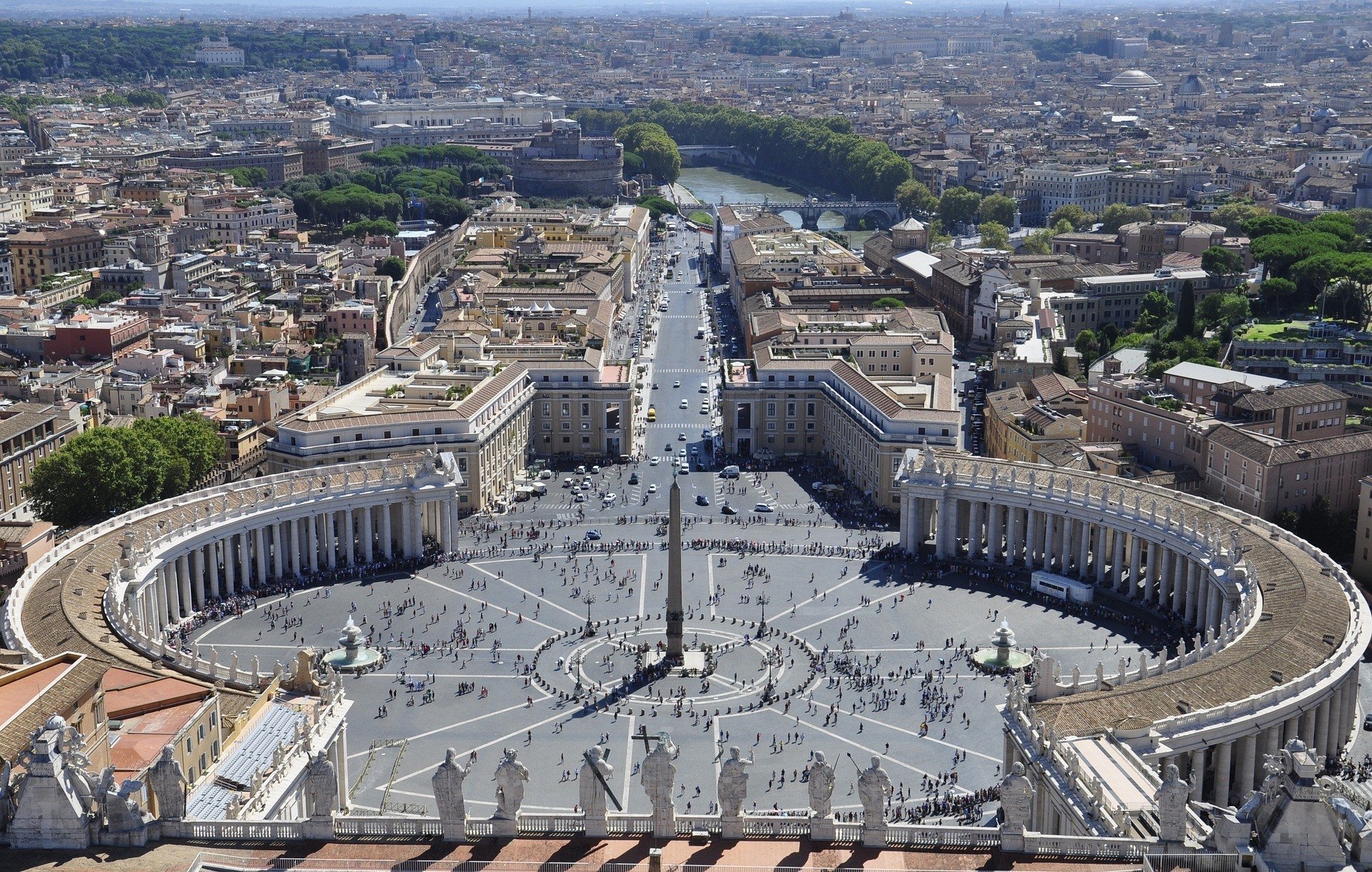
This enormous square is the iconic image of Vatican City and is broadcast across the world whenever the pope addresses the faithful. It is surrounded by pillared walkways and in the middle is a giant obelisk that originally came from Ancient Egypt. At the head of the square is the humbling Basilica of St. Peter
Entering St. Peter’s Basilica is open and free to the public. You will need to stand in line though and depending on the day, these can either be reasonably short or massive. On a good day, you might stand in line for a half-hour; on a bad one, it could be several hours. Prepare appropriately.
Insider Tip: For an opportunity to see the pope, book a papal audience . This isn’t a one-on-one meeting with the pope but a large gathering of the faithful and tourists that is held on St Peter’s Square in summer. There is a small service and then the Pope travels down the square to bless the audience. Tickets for the seating area near the front are free but must be booked ahead! If you do not have a ticket, you are still welcome (but there will be no opportunity for chairs).
- How long should I stay here? Depends how long the line is.
- Getting there – About a 10-15 minutes walk from the Vatican Museums. A bit more if you make a detour for some food.
2:30 pm – St Peter’s Basilica
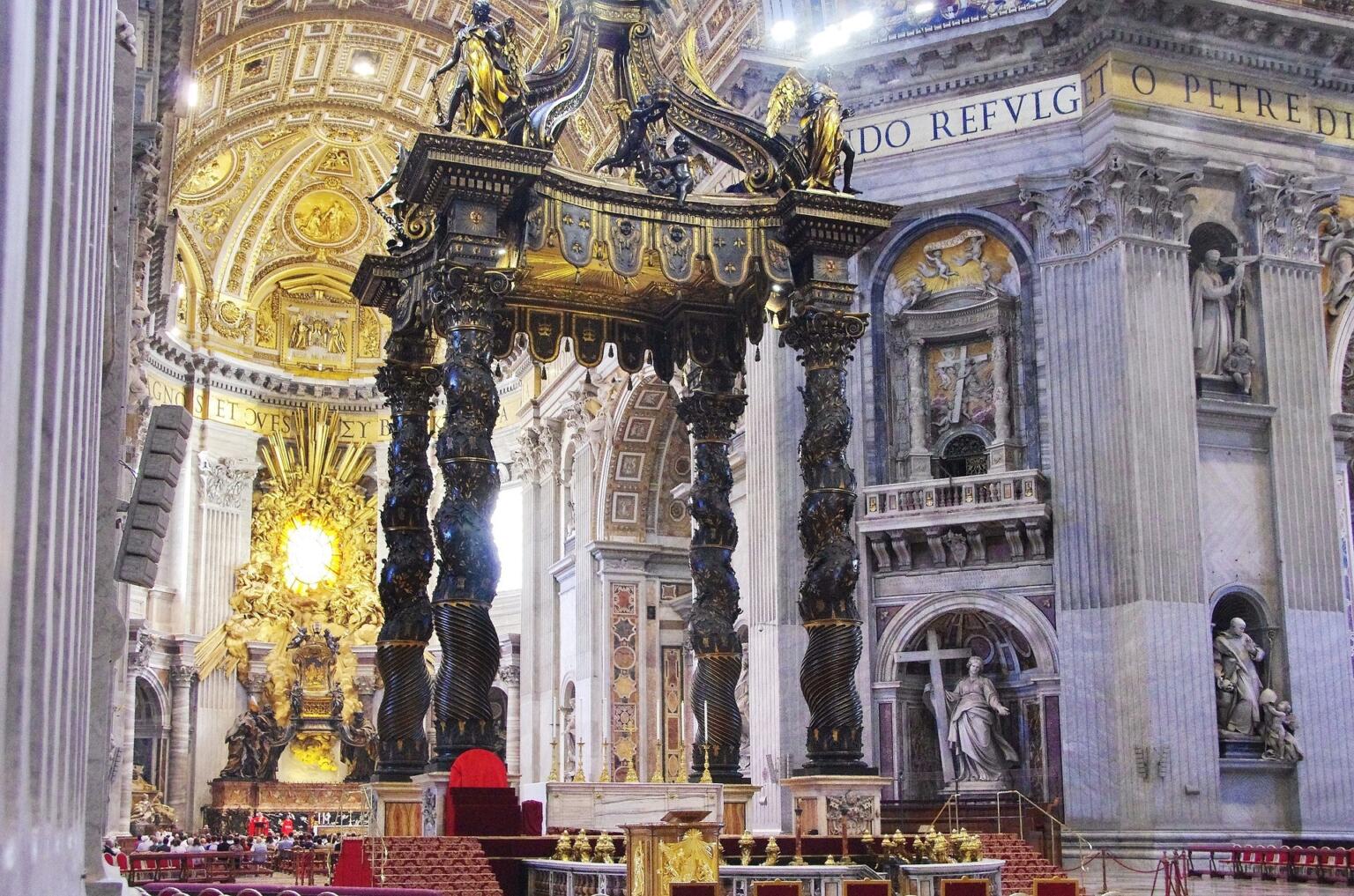
St Peter’s is one of the holiest sites for Christians worldwide and an architectural masterpiece. It is the result of 120 years of work by some of the world’s most renowned architects and artists: Michelangelo, Bramante, and Maderno.
Ever since 1626, the basilica has been able to accommodate 20 000 pilgrims for services that have been presided over by Pope John Paul II, Pope Innocent III, and the current Pope Francis, to name a few.
One of the highlights of any visit is the Pieta by Michelangelo, a statue of the Mother Mary holding Jesus’ body. Another masterpiece is St Peter’s Throne, an imposing seat for the head of the Catholic Church, created by Bernini.
You must dress conservatively for a visit to St Peter’s Basilica (cover your knees and shoulders).
If you have extra time, try and enter the Tomb of St. Peter. Very few people can say they’ve visited the resting place of this spiritual leader, who was arguably the founder of Catholicism (he is considered to be the first pope). This is a remarkably spiritual experience.
In 64 B.C. St Peter, one of Jesus’ disciples, was crucified for promoting the Christian faith. Two thousand years later, it is now possible to visit what many believe is the martyr’s tomb. The tomb is underground, the Vatican only allows 250 people a day to visit in groups of 12 and no photographs are allowed. Add in the fact that you may well be in the presence of a saint and you can begin to imagine the unique, hushed atmosphere.
- Cost – The basilica is free; tomb is $15.50.
- How long should I stay here?
- Getting there – Enter from St. Peter’s Square.
4:30 pm – Castel Sant’Angello and Ponte Umberto
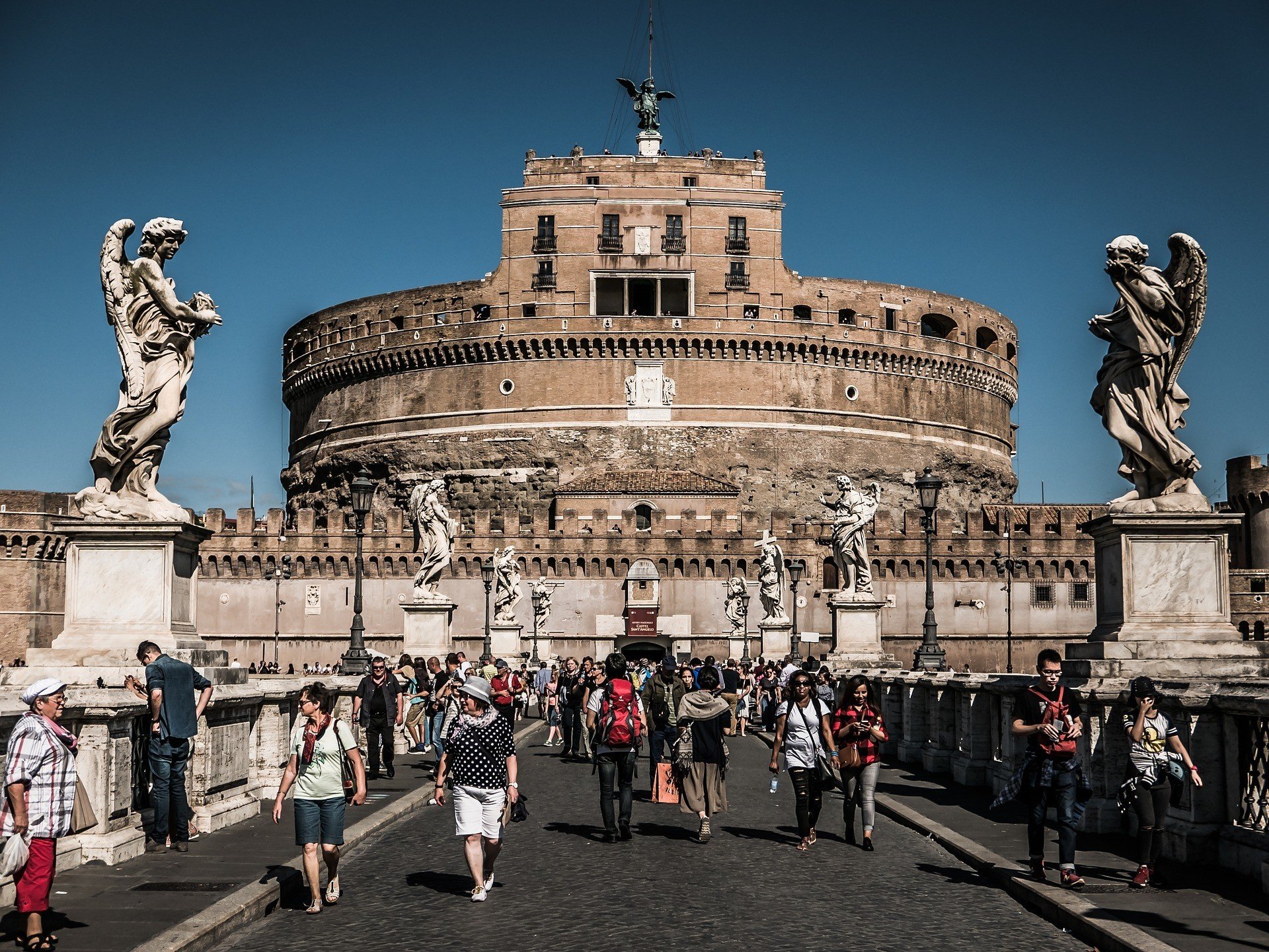
The circular structure of Castel Sant’Angelo was originally built as a mausoleum for the Roman Emperor Hadrian. Eventually, it becaFvatime a fortress for the popes and Vatican City.
It is possible to enter the castle and tour the interior. Since you’ve already had a long day at the Vatican already, you may want to skip this tour. Most people just end up walking around outside of the fortress anyways.
The ponte or bridge leading up to Sant’Angelo is a very popular spot to take photos in Rome. Keep your head on a swivel for Instagrammers!
At sunset, the view from nearby Ponte Umberto is much better as you have a perfect view of the Dome of St. Peter.
This is a popular attraction in Rome and there are often queues to buy tickets, I recommend buying tickets online beforehand to avoid queues.
- Cost – $15 to enter.
- How long should I stay here? About an hour. Maybe longer if you have time.
- Getting there – 10 minute walk from St. Peter’s Square.
6:00 pm – Piazza del Popolo
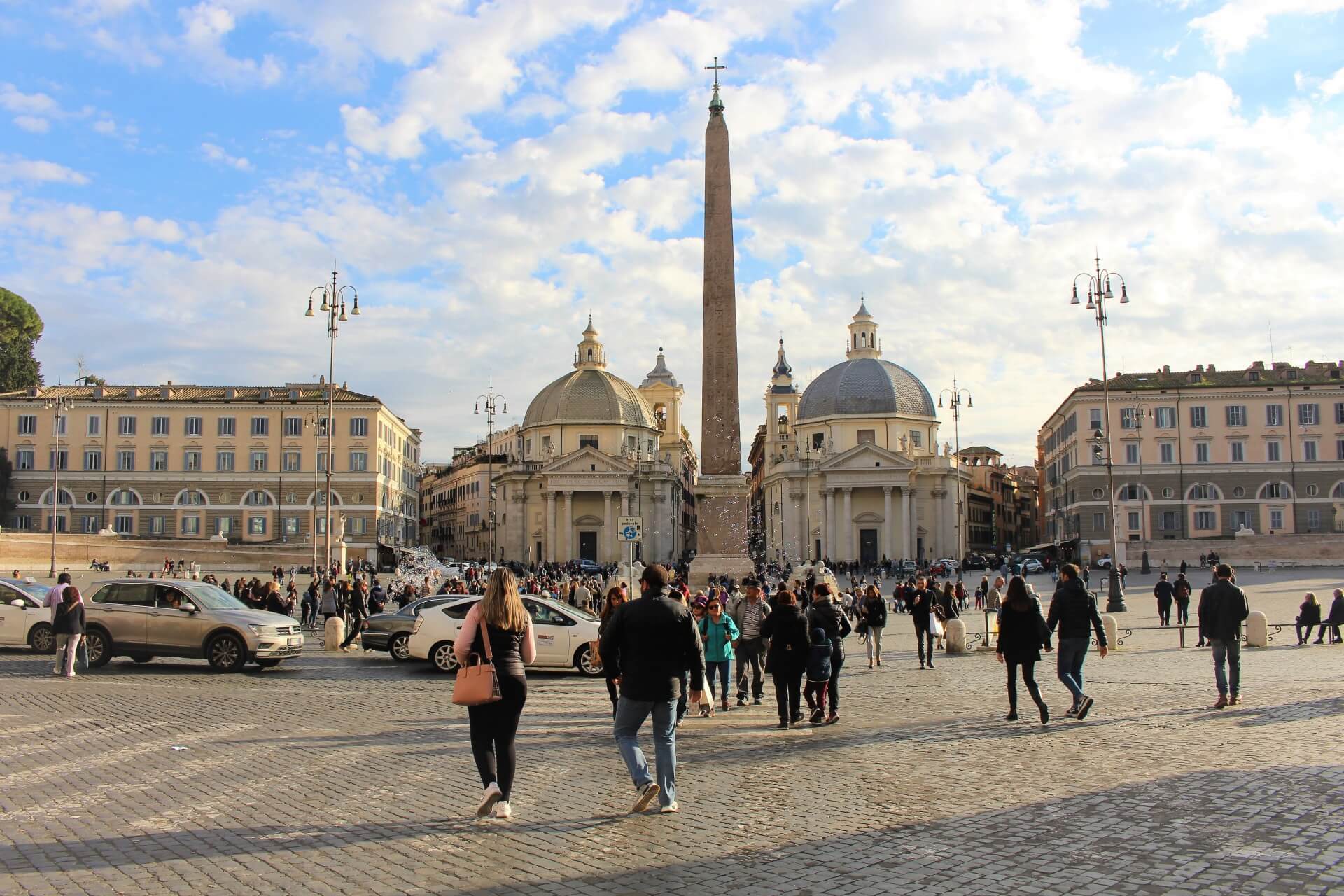
The Piazza del Popolo is one of the largest and most important squares in Rome. It once served as the main entryway into the city for pilgrims and travelers, so it’s only appropriate that modern travelers make their way here!
You mustn’t miss visiting the Church of Santa Maria del Popolo at the beginning of the square though. This church hosts paintings by both Caravaggio and Raphael, which you can see for only 1 euro each.
Aside from the obelisk, the Caravaggio, and mirrored churches at the far end, there’s nothing too outstanding about this square. Mostly, it’s inhabited by buskers and hawkers.
Piazza del Popolo is interested by Via del Corso, which is one of the most popular places to shop in Rome. You can do some browsing here if you link or continue onwards to the Spanish Steps nearby.
- How long should I stay here? 1-2 hours depending on if you want to shop.
- Getting there – It’s a 20-minute walk to get to Popolo from Castel Sant’Angelo but it’s a lovely walk along the Tiber. If you don’t want to walk, hail a taxi.
7:30 pm – The Spanish Steps and dinner
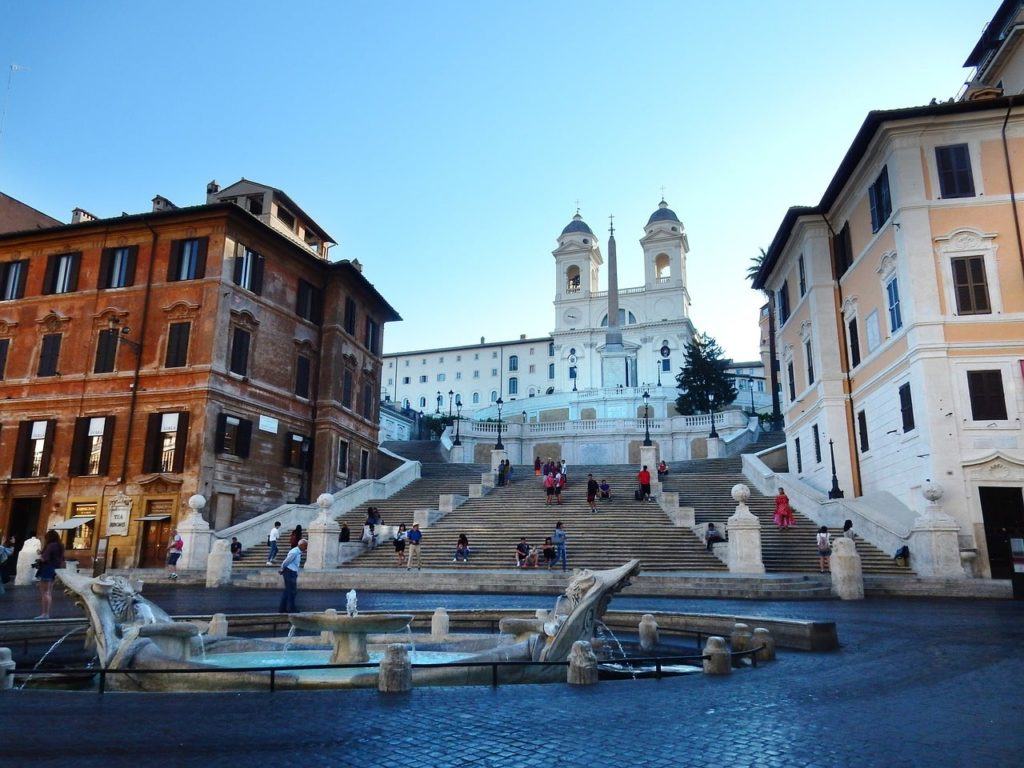
If you plan a trip to Rome, you must make time for a passegiata ! Come dusk, this Italian tradition sees people of all ages take to the streets for an evening stroll. For a particularly scenic passegiata, stroll through the area around the Spanish Steps. The spectacular combination of ornate baroque architecture and stunning views will take your breath away!
Start your stroll at the Piazza di Spagna, one of Rome’s most beautiful squares. After a photocall at the Fontana della Barcaccia, a lavish fountain in the square, begin your ascent up the Spanish Steps.
The ornate staircase was built in the 18th century and has 138 steps! Note that whilst people were once able to sit on the steps – once upon a time – now the local government forbids this – you must stand or walk on the steps but not sit. At the top of the stairs, stand in awe of the lovely Church of the Trinita dei Monti. It was worth it, wasn’t it?
When you’re ready for some food, head over to the main thoroughway of Via del Corso. There are lots of restaurants and cafes tucked away in the alleyways intersecting this street.
- How long should I stay here? As long as you want.
- Getting there – 10-15 minute walk directly from the Piazza del Popolo on Via del Babuino. From the piazza, you should be looking to the way on the left.
By the time we reach day 3, we will have already seen a lot. It might be the case that you want to have a chill day and not do so much. Feel free to cut out a few parts of this particular itinerary and then save the rest when planning your next trip to Rome!
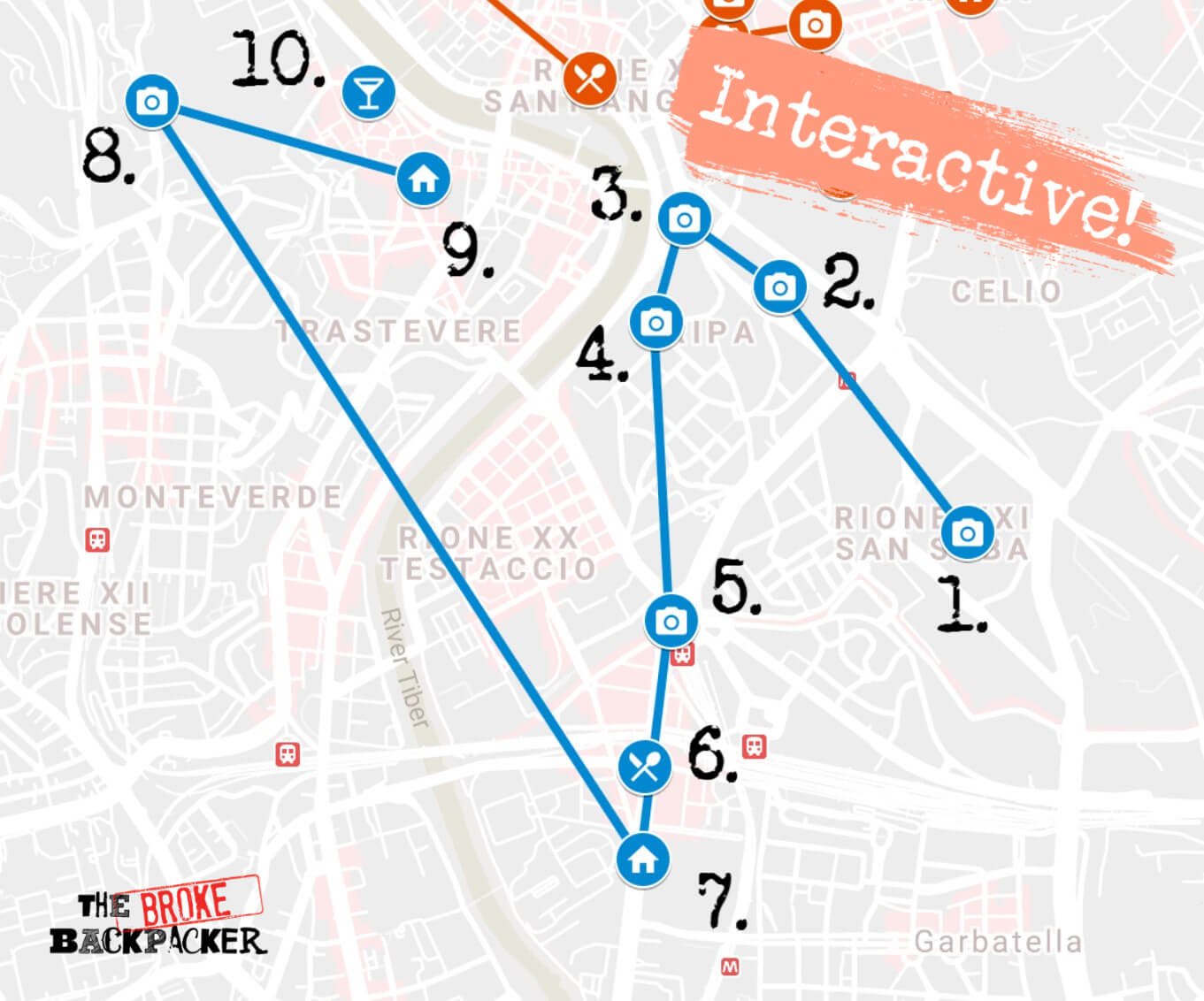
9:00 am – The Baths of Caracalla
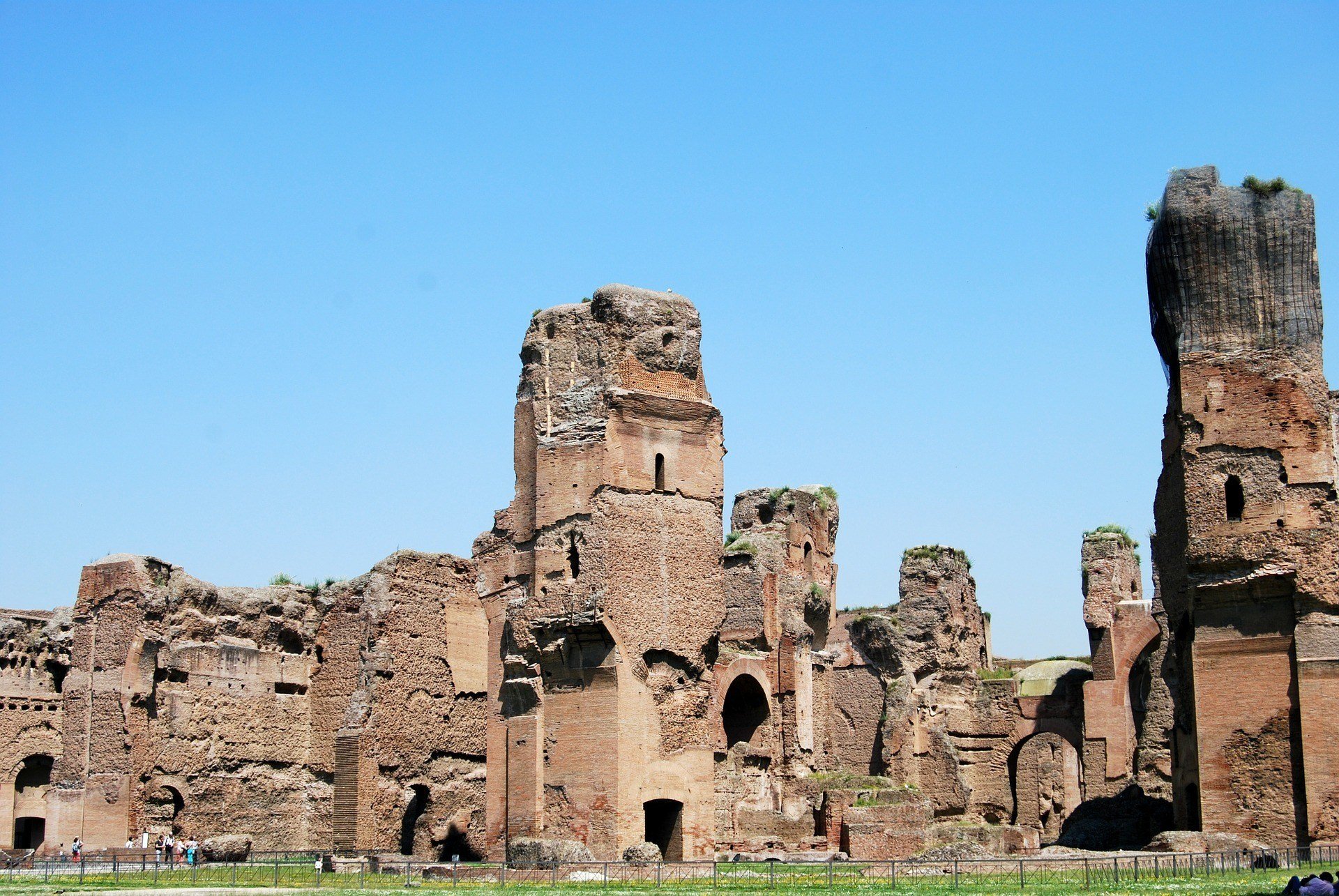
The Romans put their engineering skills to good use when they built the Baths of Caracalla for the dictatorial emperor of the same name! Although only ruins remain, it is still possible to get a sense of the scale and grandeur of the bathing complex.
The baths are conveniently located just 1km from the Colosseum, in the heart of ancient Rome. To get the most out of this iconic Roman location, go on a guided tour or hire an audio guide that will transport you to ancient Rome and back in just 50 minutes!
Although the baths were constructed in the 3rd century, they featured an impressive heating and drainage system for their time. The complex also included a library, a gym, temples, and gardens so that the Romans could get the most out of their downtime!
If you’re planning to visit the Baths of Caracalla, I highly recommend purchasing an audio guide with your ticket so you know what you’re looking at.
Thanks to modern technology, it is now possible to experience the baths just as if you were visiting 1700 years ago as well! A new virtual 3D tour brings the marbled floors, vast halls, and ornate decorative details to life.
- How long should I stay here?
- Getting there – It’s about a 10-minute walk from the nearest metro stop: Circo Massimo of Line B.
11:00 am – Circo Massimo and the Bocca della Verità
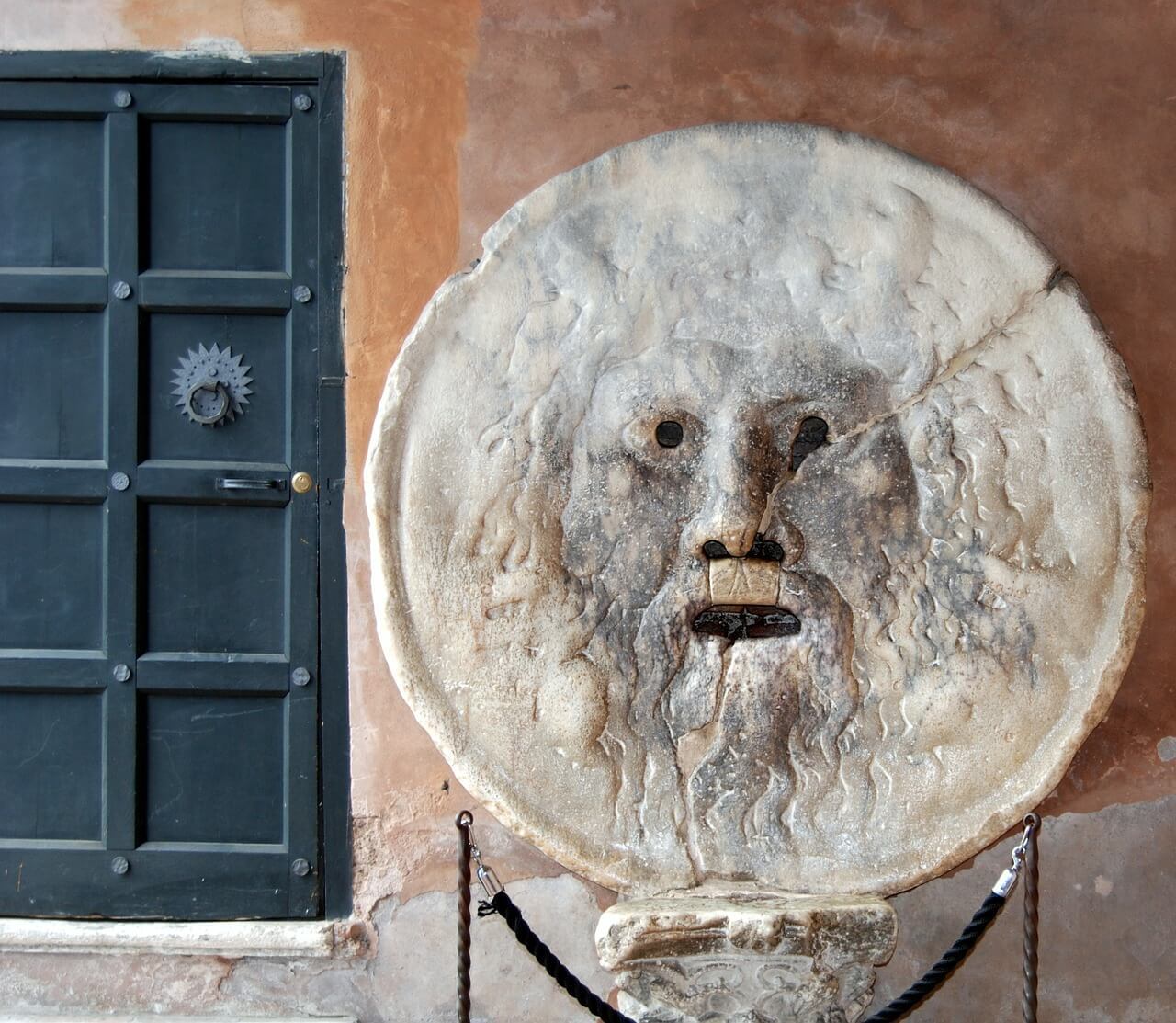
If you have time, make a quick visit to the Circus Maximus which is right next to the baths. It was once a chariot-racing stadium that could accommodate 300 000 spectators, a higher number than many modern stadiums can! Nowadays, it’s a giant park and is used to host concerts and political rallies.
About 5 minutes away from the Circus Maximus is the famous Bocca della Verità or the “Mouth of Truth.” The Roman-era disk, whose original purpose is still not known for sure, depicts Neptune with his mouth and eyes wide open. People like to stick their hands in the mouth and take photos with the hungry Roman god 🙂
- Cost : $3 to see the mouth.
- How long should I stay here? No more than an hour – neither the Circus nor Boca will take long.
- Getting there – Walk back to the very busy Viale Aventino from the Baths of Caracalla, about 10 minutes away. The Circus is right there and the Boca is another 5-10 minutes walk ahead.
12:30 pm – Packed lunch in the Giardino Degli Aranci
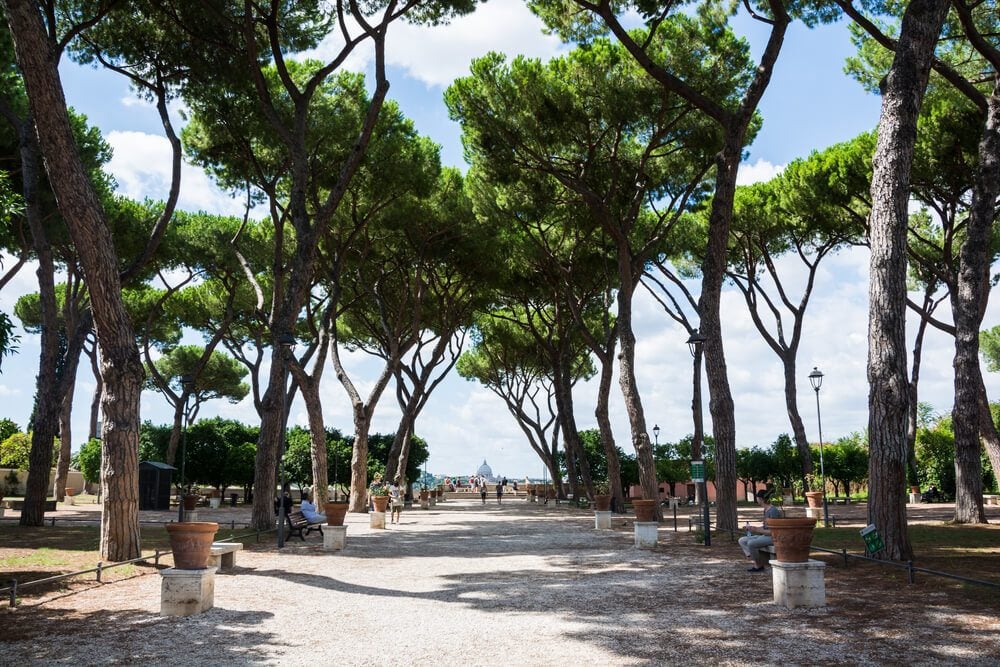
This is one of the best viewpoints in Rome! It’s particularly great at sunset, but we’re going to be spending the afternoon here. Eating premade panini and perhaps having a little wine or beer.
True to its name the garden is filled with orange trees but more noticeable are the towering pini Romani or “pines of Rome.” These distinctive trees, which may or may not have seen already, are a true symbol of the city.
In the distance, you’ll have a beautiful view of the Dome of St. Peter. Many comment on the perspective of the dome from the garden – when you enter the garden it’s quite small but as you get closer it suddenly becomes huge! It’s an ingenious visual trick.
When you finish with lunch and leave the Orange Garden, be sure to walk a bit further down the street and past the Basilica dei Santi Bonifacio e Alessio. Around here, you’ll find the mysterious “Keyhole” – one of the greatest not-so-hidden secrets of Rome.
- Cost : Free!
- How long should I stay here? 2 hours. Enough to eat and chill.
- Getting there – Walk parallel to the Circus Maximus and then head left through the Garden of Roses. You’ll be walking up a hill until you start to see cloisters and schools on the right. The garden is just up ahead. 10 minutes walk in total.
2:30 pm – The Pyramid of Caius Cestius and the Foreign Cemetary
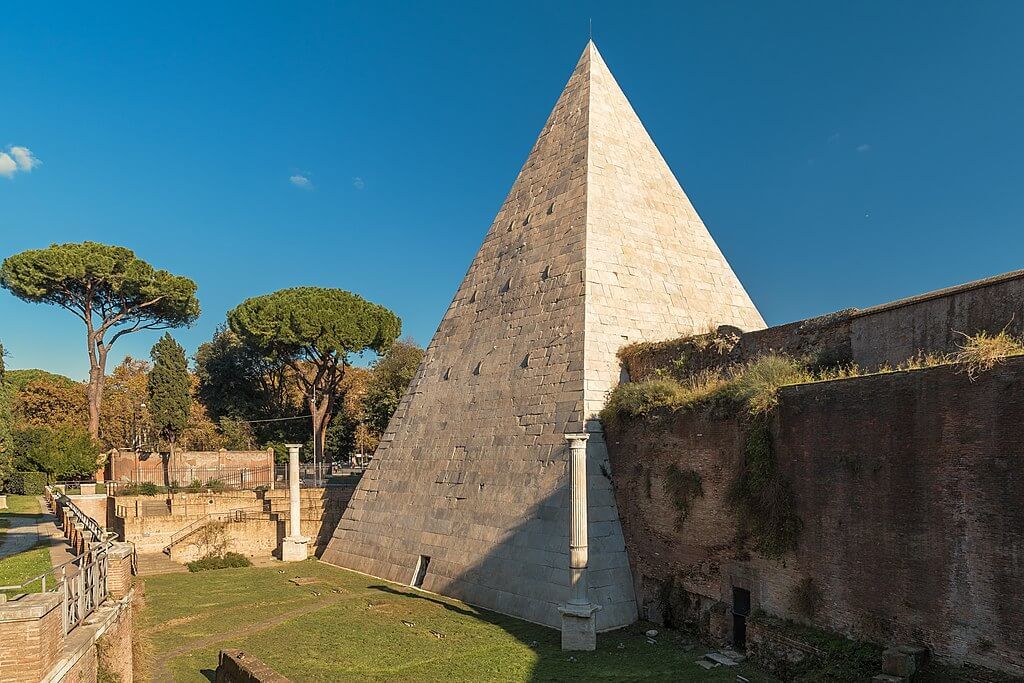
This will be a quick stop. The Pyramid of Caius Cestius, built as a tomb for the same-named religious magistrate at the Porta San Paolo is pretty hard to miss – it’s right next to a giant roundabout on the way to Ostiense and is pretty tall. The walls here used to be the edge of the ancient Roman city!
Behind the Pyramid is the Non-Catholic Cemetary where many prolific non-Italian poets are buried. Most notable are Percy Shelly, author of tour-de-forces like “Ozymandias” and John Keats, arguably one of the greatest English Romantic poets. Finding their graves is a bit of an adventure in itself.
Watch out for the local cat population as well! There’s a friendly group that likes to hang out in the park behind the pyramid
- How long should I stay here? Not long; 1-hour tops.
- Getting there – From the Giardino Degli Aranci, walk back to the Viale Aventino and take the tram towards Testaccio. The pyramid will be on your right.

3:30 pm – Ostiense Street Art Walking Tour
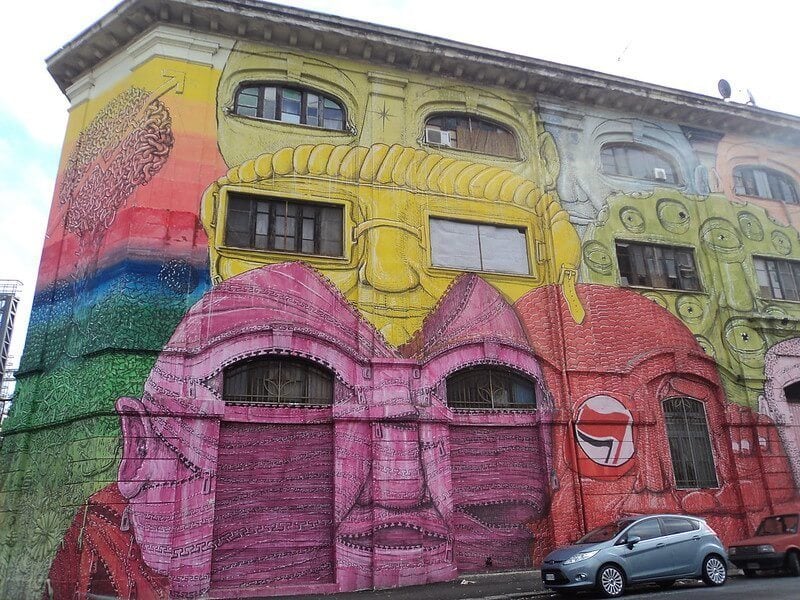
Rome has some amazing examples of street art, most of which are located in Ostiense; this tour will help you find the best pieces of street art in just two hours.
Ostiense is an old industrial area in Rome that has been going through an incredible regeneration. Today, it’s considered one of the trendiest areas in the city with hipster bars, art galleries, and, of course, fantastic street art!
This tour will take you around the neighborhood to see the contemporary artworks that are bringing color back to the Eternal City. Visits to a few local galleries are also included. Finally, your guide will take you to see the Pyramid of Cestius, a white marble structure that was built as a tomb in around 18 B.C.
Quick heads up – squeezing a street art tour as well as the other Day 3 items is possible but only if you plan carefully, start early and keep on a schedule. If you want time to leisurely saunter around the city then you will definitely have to cut something.
- How long should I stay here? Tour lasts 2 hours.
- Getting there – The Ostiense neighborhood begins when you arrive at the Pyramid of Caius Cestius.
5:30 pm – Aparetivo at a local bar
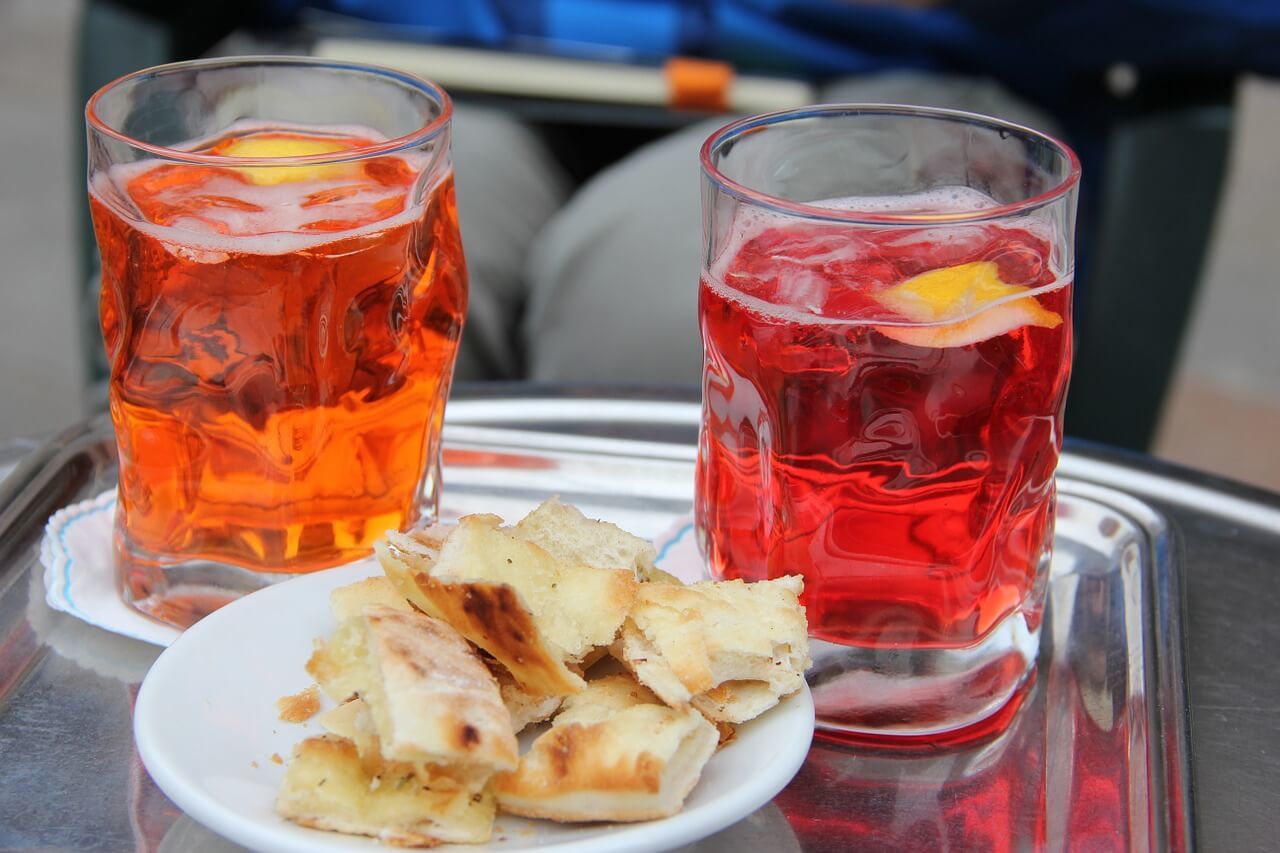
After you’re street art tour, it’s time to kick back with an aparetivo. Ostiense is particularly famous for its local craft bars and pubs, which are distinctly grittier than the ones in the center of Rome. Beer bars, speakeasies, and craft cocktail bars all the rage here.
Hopside is probably the best beer bar in the area, followed closely by L’Oasi della Birra. If you want to check somewhere a bit more macabre, then head to the Mastro Titta, named after one of the most notorious executions in the city’s history.
If you want more wine or food, then check out the charming Il Nido or Porto Fiuviale.
- Cost : less than 10 euro for an aparetivo.
- How long should I stay here? 2-3 hours is fine.
- Getting there – You’ll already be in Ostiense. Just choose a good spot and it shouldn’t be more than 5-minutes walk away.
7:30 pm – Exploring Trastevere
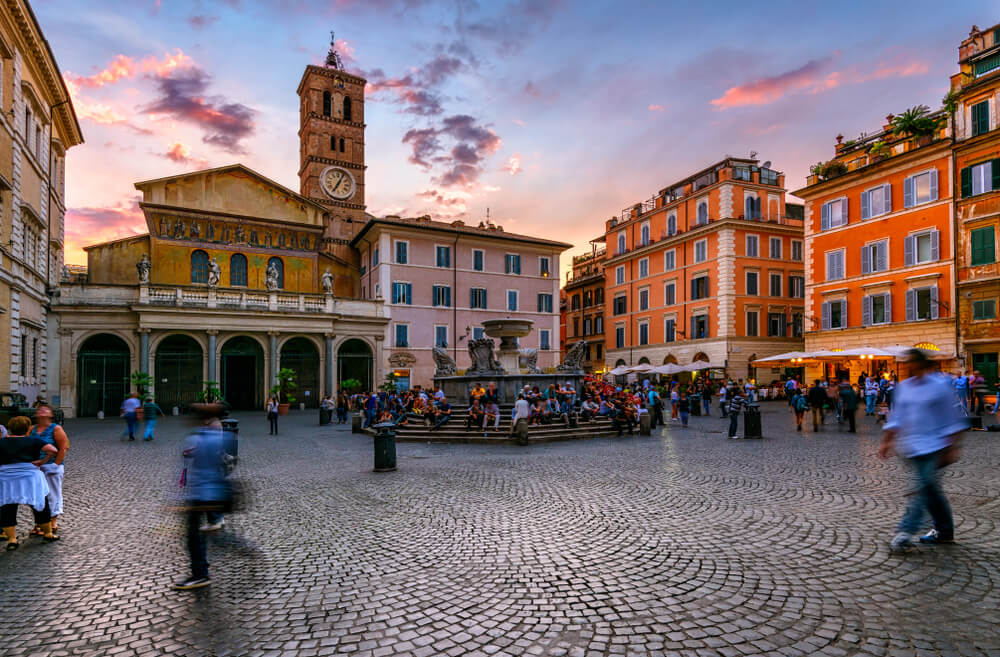
No itinerary for Rome would be complete without visiting the Medieval quarter of Trastevere! This is one of the must-see places in Rome if you have 3 days in the city and shouldn’t be missed.
Trastevere is mostly known for its winding alleys, hidden cafes, and romantic ambiance. Lots of people come here to get lost in the streets in search of the perfect watering hole or perhaps love.
Trastevere is a pretty big neighborhood though the most popular area for tourists is around the Basilica di Santa Maria in Trastevere. There are lots of cafes and restaurants around here and at night the piazza is bursting with people. You can opt to drink in a bar or take your drinks to go and walk around as everyone else does.
If you’re a beer snob, be sure to check Ma Che Siete Venuti a Fa. It is has been voted one of the best beer bars in Italy on several occasions.
If you have the time and energy, try walking up to the Janiculum Terrace above Trastevere. It offers one of the best views in Rome.
- Cost : Dinner should be around 20 euro.
- How long should I stay here? All night if you like!
- Getting there – From Ostiense, it’s a bit of a journey. You’ll either need to take a bus/tram from Porto San Paolo (20 minutes) or walk (40 minutes).
Need a place quick? Here’s the best neighborhood in Rome:
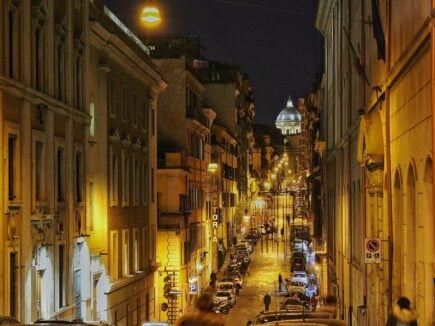
Storico Centro
The Storico Centro is home to many of Rome’s greatest landmarks, so if you’re searching for where to stay in Rome for sightseeing, this is the district for you.
- Sip and sample your way through the bustling Mercato Centre
- Learn to cook your favorite Italian fare by taking a cooking class with a local
- Rent a Vespa and explore the city on two wheels
Try to spend as long as possible in the city. There are just so many major attractions to visit that 3 days in Rome will pass by in a whirlwind! If you happen to have more time to spend here, check out some of these other Roman points of interest!
1. Villa Borghese
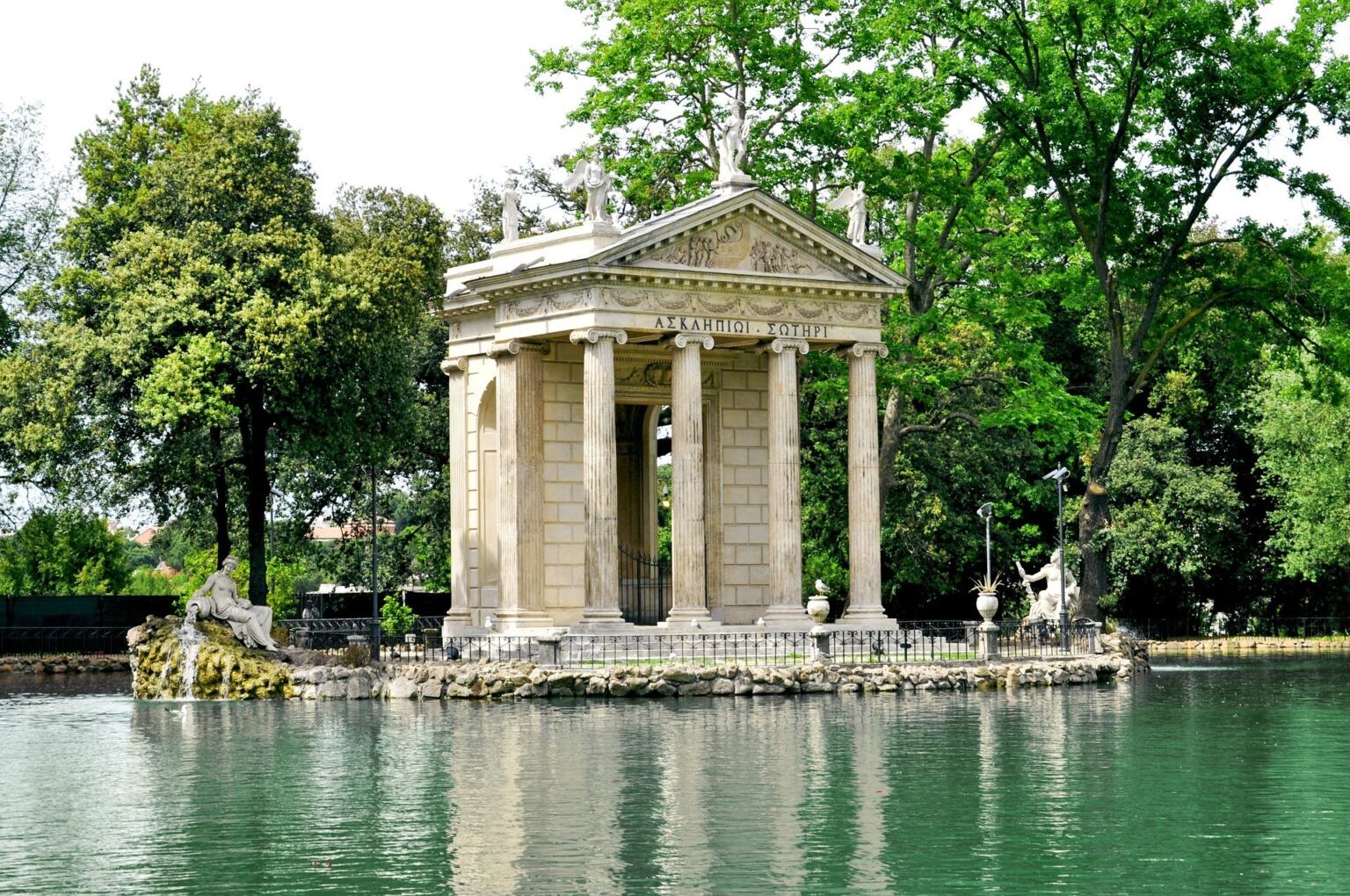
This palatial estate is home to several top things to see in Rome, including the Borghese Gallery and beautiful Villa Borghese gardens and a world-class gallery. The most striking part of any visit to the Villa Borghese is the beautiful garden which is so extensive that is now the most popular public park in Rome!
The park, which was designed in 1606, boasts elegant fountains, gravel walkways under the shade of cypress trees, and plenty of stunning flowers. This is another perfect venue for your sunset passegiata !
For a bit of culture in the midst of nature, visit the Villa Borghese Gallery , or Galleria Borghese. In this converted palace, you will find masterpieces of Italian art, including by the renowned painter Bernini.
To experience what the good life was like a few hundred years ago, visit the Villa Medici . Built by the infamous Medici dynasty in the 16th century, it is now a center for the French Academy but happily welcomes tourists to explore the opulent manor and an array of exciting exhibitions.
If you have kids, or just want to unleash your inner child, pop in at the Bioparco di Roma, a lovely city zoo, and the Casina di Raffaello, a hive of storytelling and crafts!
- Cost – Park is free; gallery is $17.
- How long should I stay here? Half-day.
- Getting there – The nearest metro stop is Flaminio, which is serviced by Line A.
2. Quartiere Coppedè
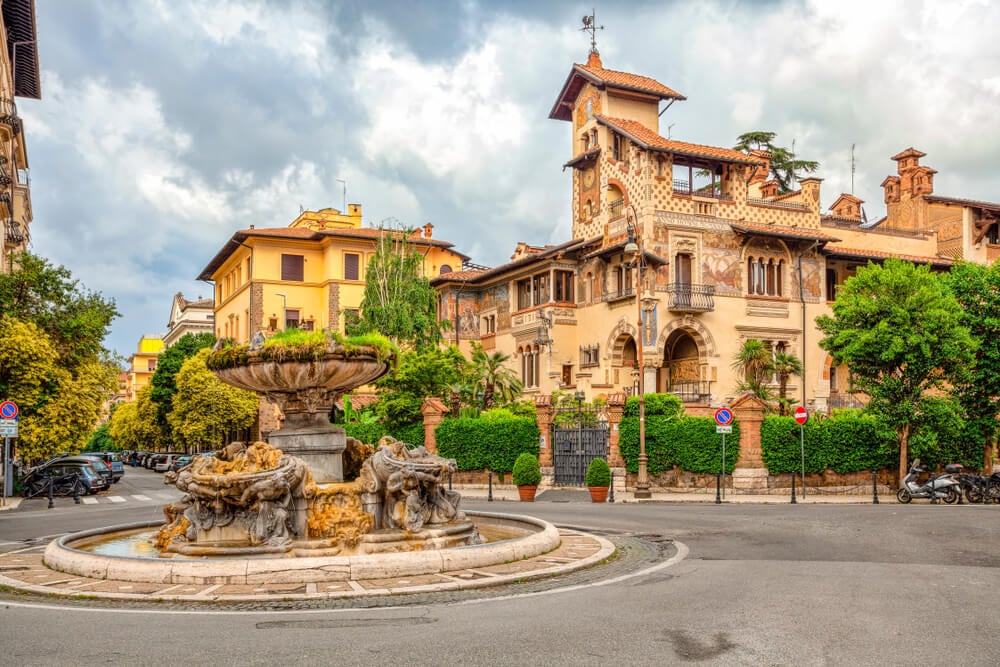
Drop into the Roman equivalent of fairyland if you have one extra day in Rome with a visit to the serene Quartiere Coppedè district . The district is away from the tourist center so take a short tram journey to Piazza Buenos Aires to begin a leisurely stroll.
When we say ‘fairyland’, we mean fairyland: neoclassical manors painted in Tuscan gold with ivy growing along the walls, ornate arches that open onto cobbled piazzas, fountains with marbled goddesses spewing water, turrets that reach dreamily for the skies…it’s all very, very charming!
Interestingly, this neighborhood was thoroughly planned and designed by Gino Coppedè from 1913 to 1927 who built around 40 structures in the district. The area was intended as a working-class neighborhood but what with the Baroque, Art Deco and Gothic styles, you could be forgiven for thinking it was home to kings and princesses! But this is Rome…style is ubiquitous.
The first attraction is the enormous arch, which is the entrance to the tranquil little neighborhood. Overhead is a bronze chandelier so you’ll know you’ve arrived in Coppedè!
There aren’t any specific attractions as such, so a leisurely meander through the pretty streets is all you need. Make sure, though, that you spend time on Piazza Mincio. This quaint little square is home to the Fountain of the Frogs, a whimsical fountain that is perfect for a photo-opp!
As beautiful as the Coppedè district is, it is a distinctly local area. Don’t expect souvenir shops or piazzas crowded with restaurants; its peacefulness just adds to the Secret Garden aura of the neighborhood!
- How long should I stay here? 1-2 hours.
- Getting there – Take Metro Line B to Policlinico and then take the tram 2,3, or 19 due west. Get off at the Buenos Aires stop and the quartiere will be on your right.
3. The Appia Antica and Parco delgi Acquedotti
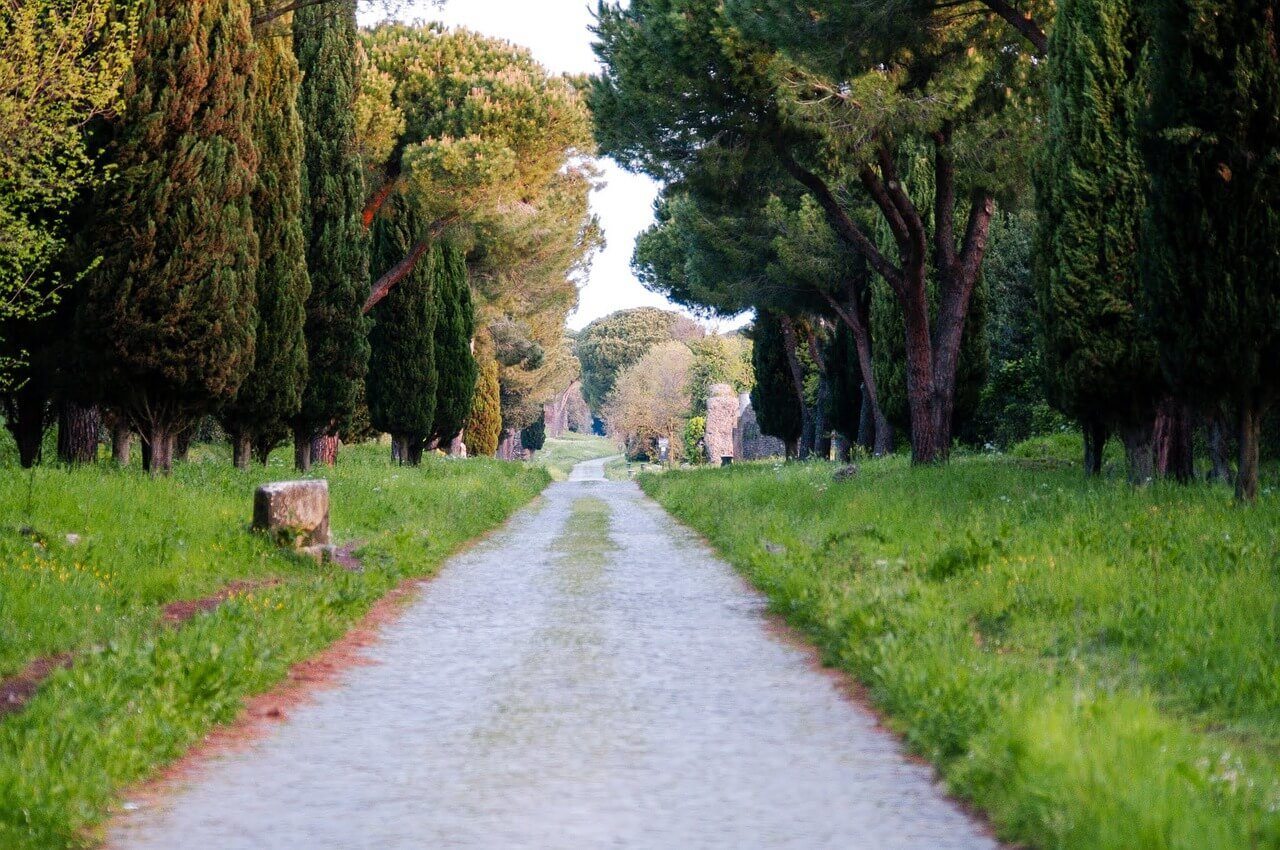
Want to mix your Rome itinerary up and see antique ruins in a more bucolic setting? Can’t deal with the constant traffic of the city anymore? Then head to the Appia Antica or Parco delgi Acquedotti on the outskirts of town then!
The Appia Antica was one of the original highways leading to Ancient Rome. Many of the old mansions, mile-markers, and other roadside buildings are still intact here. There aren’t many commuters competing on these roads anymore; just lots of vegetation of trees!
One of the most iconic pieces of Roman engineering were aqueducts. These towering structures brought water to the city and were vital to public sanitation. One of the best-presevered aqueducts in the area is in Cinecitta. It is now a large park where people go to exercise, picnic, and socialize.
- How long should I stay here? All day if you like.
- Getting there – Take bus 218 to reach the Appia Antica. Take Metro Line 1 until Subaugusta to reach the Acquedotti.

Stash your cash safely with this money belt. It will keep your valuables safely concealed, no matter where you go.
It looks exactly like a normal belt except for a SECRET interior pocket perfectly designed to hide a wad of cash, a passport photocopy or anything else you may wish to hide. Never get caught with your pants down again! (Unless you want to…)
Like many European capitals, Rome fluctuates between cold and scorching, and there is a distinct charm to each season. Winter is a reflective time of candle-lit holy festivals, while summer brings bustling crowds and long, lazy evenings. Spring and Autumn are less busy than summer, offer decent weather and some cracking light for Instagram shots.
Getting around Rome can be frustrating at times. Between the many buses, trains, taxis, trams, and self-driving options you’re sure to get to where you need to go, but you’ll probably utter a few catzos along the way.
If you intend on taking any form of public transport, you need to buy a pass of some sort. Choose a multi-day transit or Roma Pass ; the latter of which includes discounted entry to cultural sites in addition to free public transport. Either way, both will cover travel on any bus, train or metro within the city of Rome for a certain amount of time.
You can buy a single trip or multi-day ticket in most stations at a kiosk or at one of the many local bars/tobacco shops ( tobaccoria ). Upon entering the bus/train/etc you’ll have to validate the ticket at a little yellow machine.
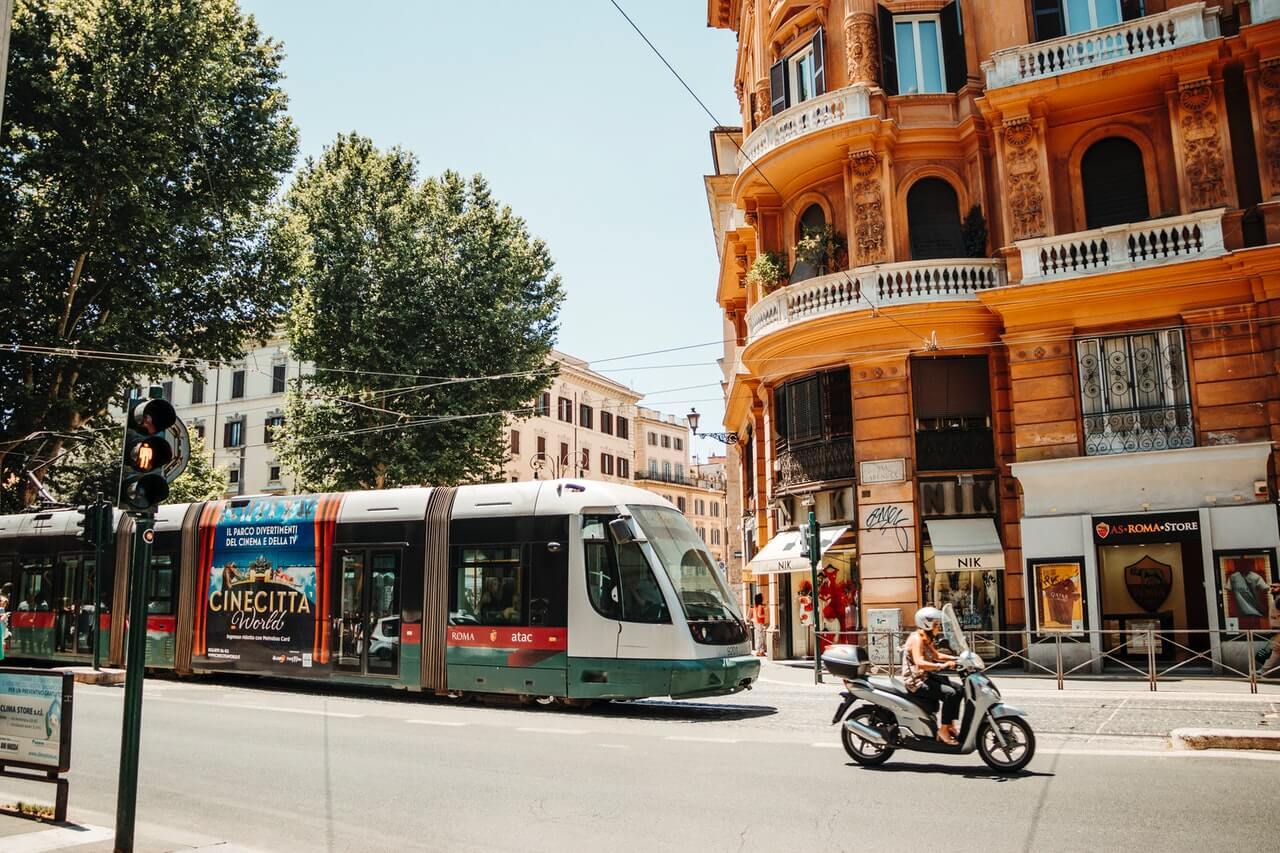
Though the grand majority of Rome is covered by some form of public transport, experiences can be a mixed bag. Buses are usually jam-packed, trams are decrepit, and air conditioning is rare. Throw in the fact that Rome is constantly under construction, causing frequent reroutings, and the whole affair may seem overly-frustrating.
Most of Rome’s most notable places to visit are located in the Historical Center and within walking distance of each other. You’ll be able to see a lot on foot and should only need to use public transport when you want to visit the outer neighborhoods of the city, like Ostiense or the Apia Antica.
Most will use the bus once or maybe twice per day to backtrack. You will only need to resort to public transport if you want to get outside to Rome’s lesser-visited areas, like the Appia Antica or the coast.
Make sure that you pack depending on what season you are planning to visit Rome. Bring light clothing during the summer and a good jacket in the winter. If you need some more suggestions on what to bring, then check out our in-depth packing list for Italy before heading out.
In terms of safety, Rome’s one of the safer cities you’ll encounter on your travels but, as always, there are common precautions you can take to guard yourself against opportunistic petty crime.
Keep your valuables where you can see them: never hang your bag off a restaurant chair or leave valuables in a coat that you hang off your chair.
- Be particularly vigilant in touristy areas like the Piazza di Spagna, the Colosseum, and St Peter’s Square.
- Public transport is also a hotspot for petty crime, so hold tight to your belongings for any journeys you take.
- It is generally quite safe to walk around popular areas at night, especially in summer when Italians and tourists fill up the squares until late.
Don’t Forget Your Travel Insurance for Rome
ALWAYS sort out your backpacker insurance before your trip. There’s plenty to choose from in that department, but a good place to start is Safety Wing .
They offer month-to-month payments, no lock-in contracts, and require absolutely no itineraries: that’s the exact kind of insurance long-term travellers and digital nomads need.

SafetyWing is cheap, easy, and admin-free: just sign up lickety-split so you can get back to it!
Click the button below to learn more about SafetyWing’s setup or read our insider review for the full tasty scoop.
Find out what people want to know when planning their Rome itinerary.
How many days are enough for Rome?
Spending 3-5 days in Rome will allow you to check out the city’s top attractions. Of course, any extra days are a bonus!
What should you include on a 3 day Rome itinerary?
No trip to Rome is complete without checking out these iconic attractions: – The Colosseum – Palatine Hill & Capitoline Hill – Trevi Fountain – St Peter’s Square – Piazza del Popolo
Where should you stay if you have a full Rome travel itinerary?
Staying in the Centro Storico is perfect for first-time visitors, as you’ll be a stone’s throw from top attractions. It can get a little expensive though, so Esquilino and Monti provide great alternatives.
What are the best day trips from Rome?
There are loads of amazing day trips you can take from Rome. Explore the Vatican City, Tivoli, or visit Naples and Pompeii. Florence and Tuscany are also within reach.
With the ruins of a powerful empire in its center and the Vatican towering beside it, Rome is one of the most impressive cities you’ll ever visit! Despite all of the ruins, though, the city has managed to stay as lively as it was in Caesar’s time. With food markets and colorful street art popping up around the city.
Over 2000 years of history and drama have given Rome plenty of fabulous attractions to visit. My itinerary for Rome will make sure that you cover as many bases as possible.
So, whether this is your first time in the city or you’re already a veteran, be sure to keep my 3-day Rome itinerary with you for a truly epic experience in the Italian capital!
Insider tip: For those who are short on time, I’d recommend you book a Rome-in-one-day tour. Going on this guided tour allows you to skip the line at many attractions, is flexible, features a tailored list of famous monuments (you can choose which ones you want to see), and a driver who also jumps into the role of a professional guide.
You’ll learn everything there is to know about the city, its history and so much more without having the stress of planning the trip yourself!

And for transparency’s sake, please know that some of the links in our content are affiliate links . That means that if you book your accommodation, buy your gear, or sort your insurance through our link, we earn a small commission (at no extra cost to you). That said, we only link to the gear we trust and never recommend services we don’t believe are up to scratch. Again, thank you!

Share or save this post

Leave a Reply Cancel reply
Your email address will not be published. Required fields are marked *
Save my name, email, and website in this browser for the next time I comment.
Notify me of followup comments via e-mail.

© Cristina Gottardi

A heady mix of haunting ruins, awe-inspiring art and vibrant street life, Italy's hot-blooded capital is one of the world's most romantic and charismatic cities.
Best Time to Visit
Best things to do, leave the planning to a local expert.
Experience the real Rome. Let a local expert handle the planning for you.
Attractions
Must-see attractions.
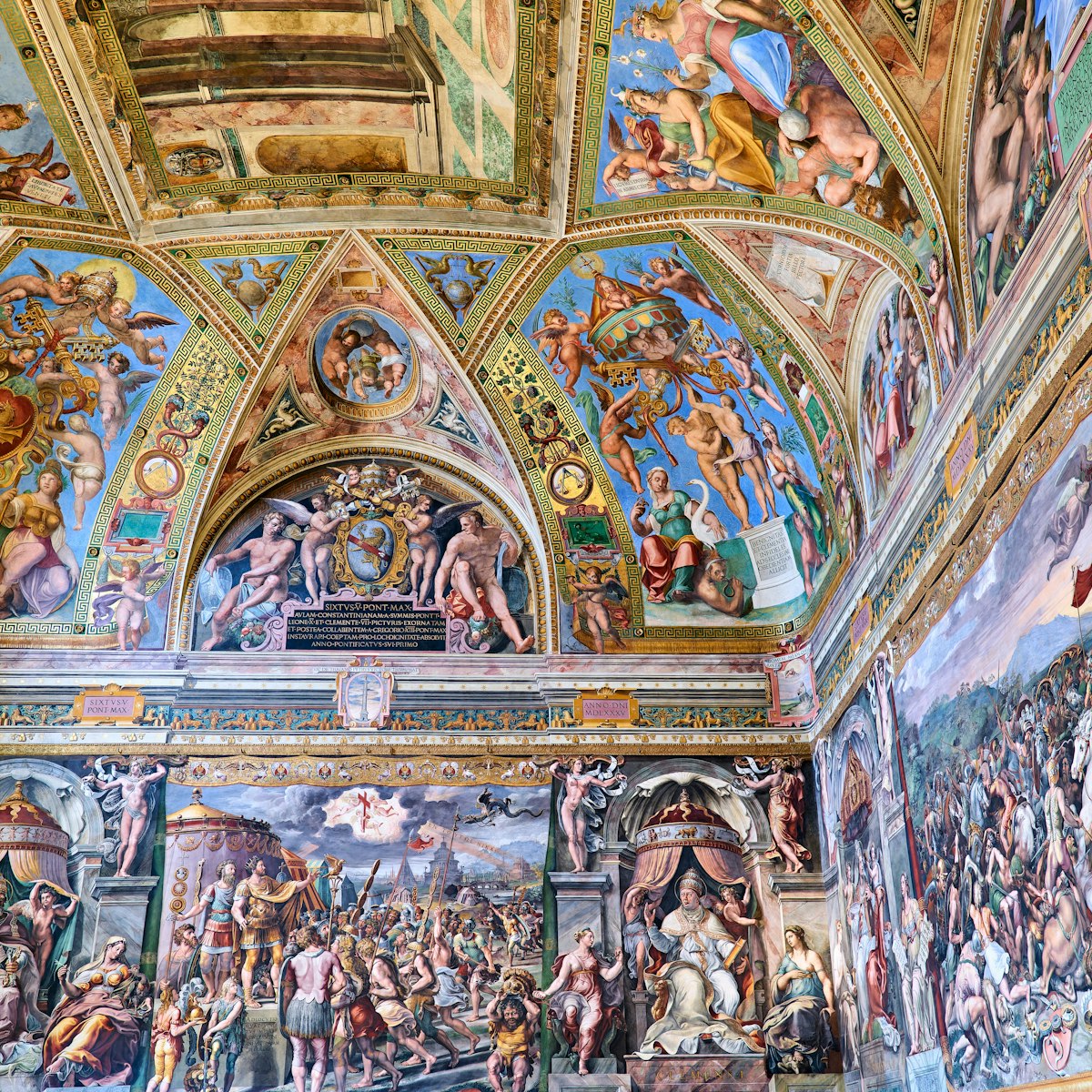
Vatican Museums
Vatican City, Borgo & Prati
Founded by Pope Julius II in the early 16th century and enlarged by successive pontiffs, the Vatican Museums boast one of the world's greatest art…
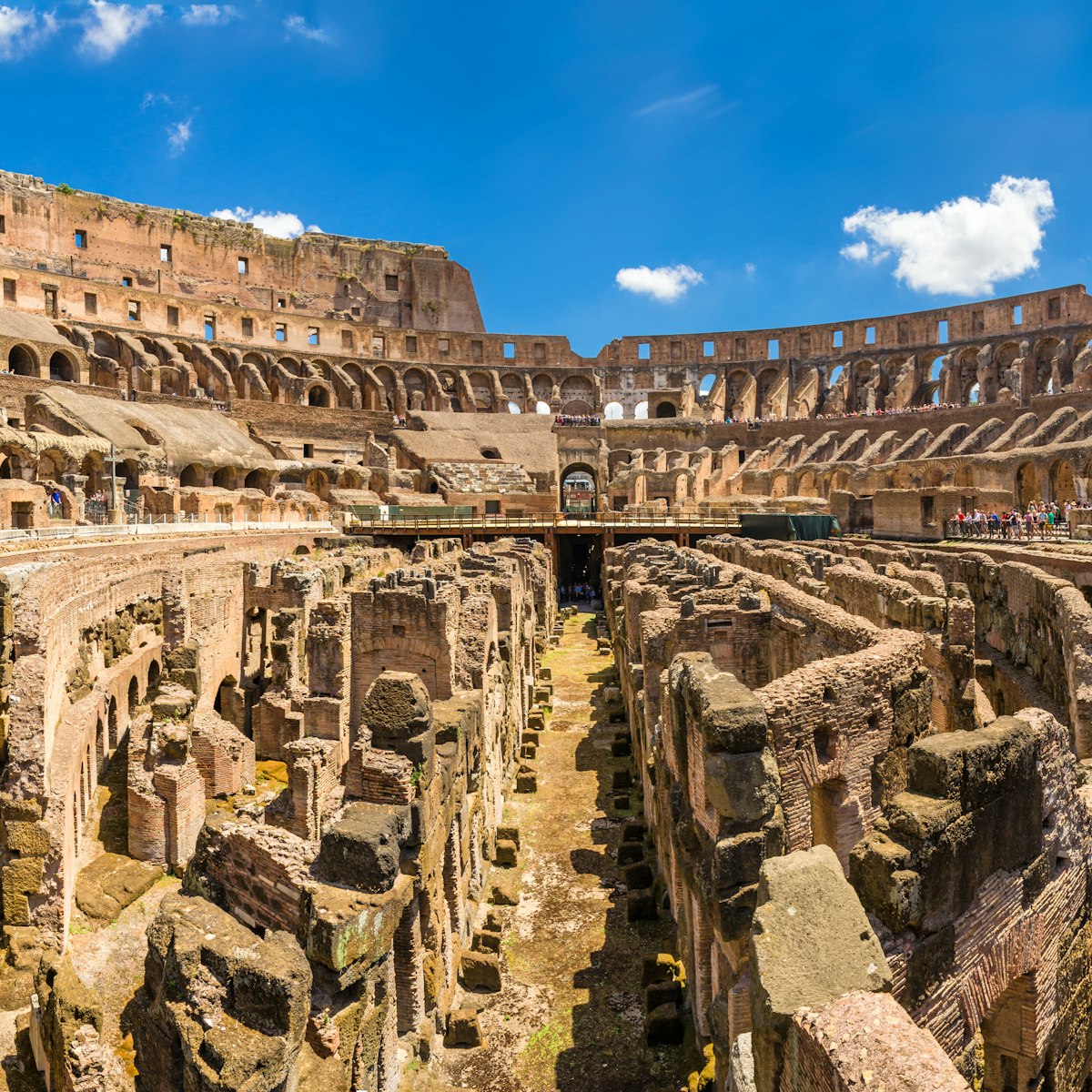
Ancient Rome
Everyone wants to see the Colosseum, and it doesn’t disappoint, especially if accompanied by tales of armored gladiators and hungry lions. More than any…
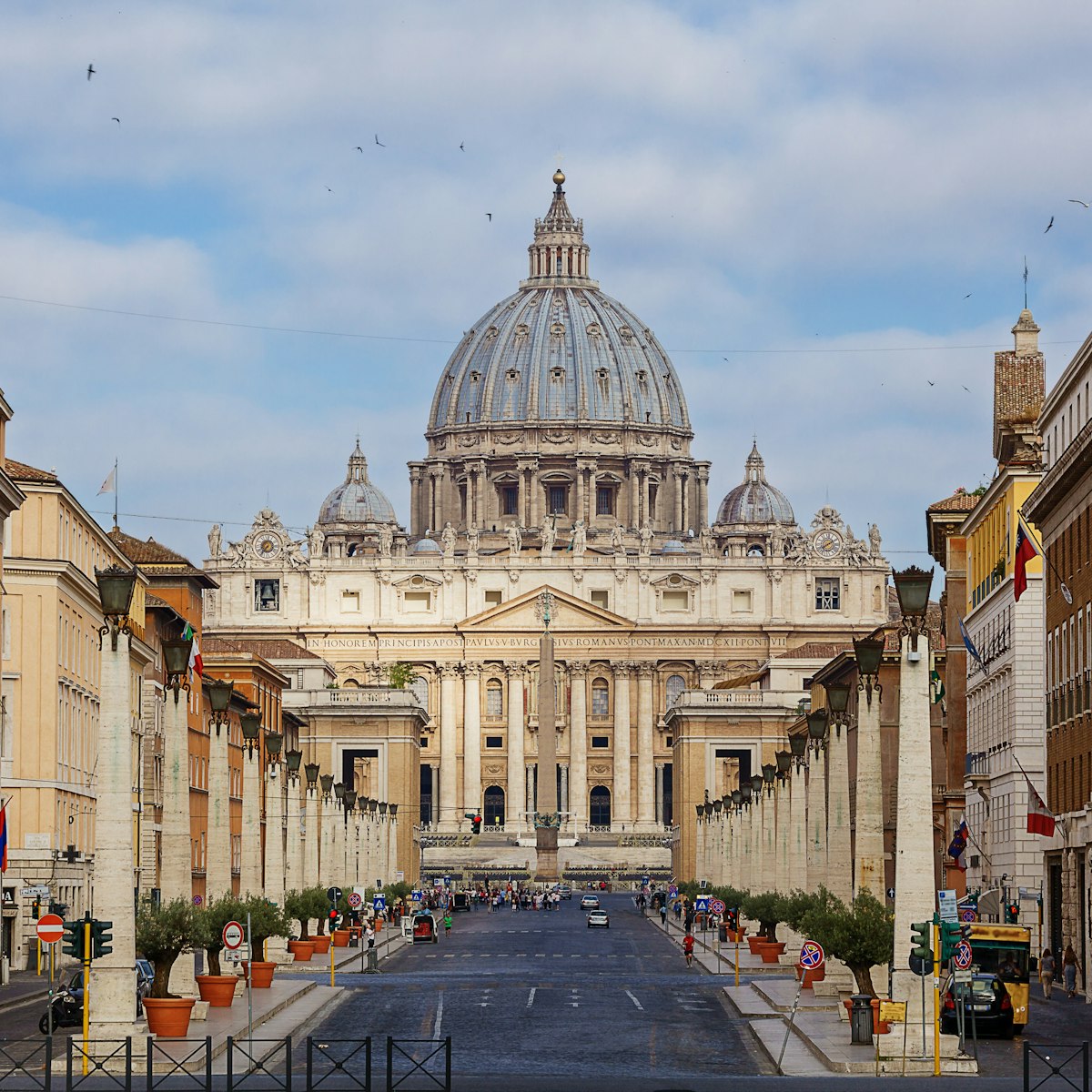
St Peter's Basilica
In the city of outstanding churches, none can hold a candle to St Peter's, Italy’s largest, richest and most spectacular basilica. Built atop a 4th…
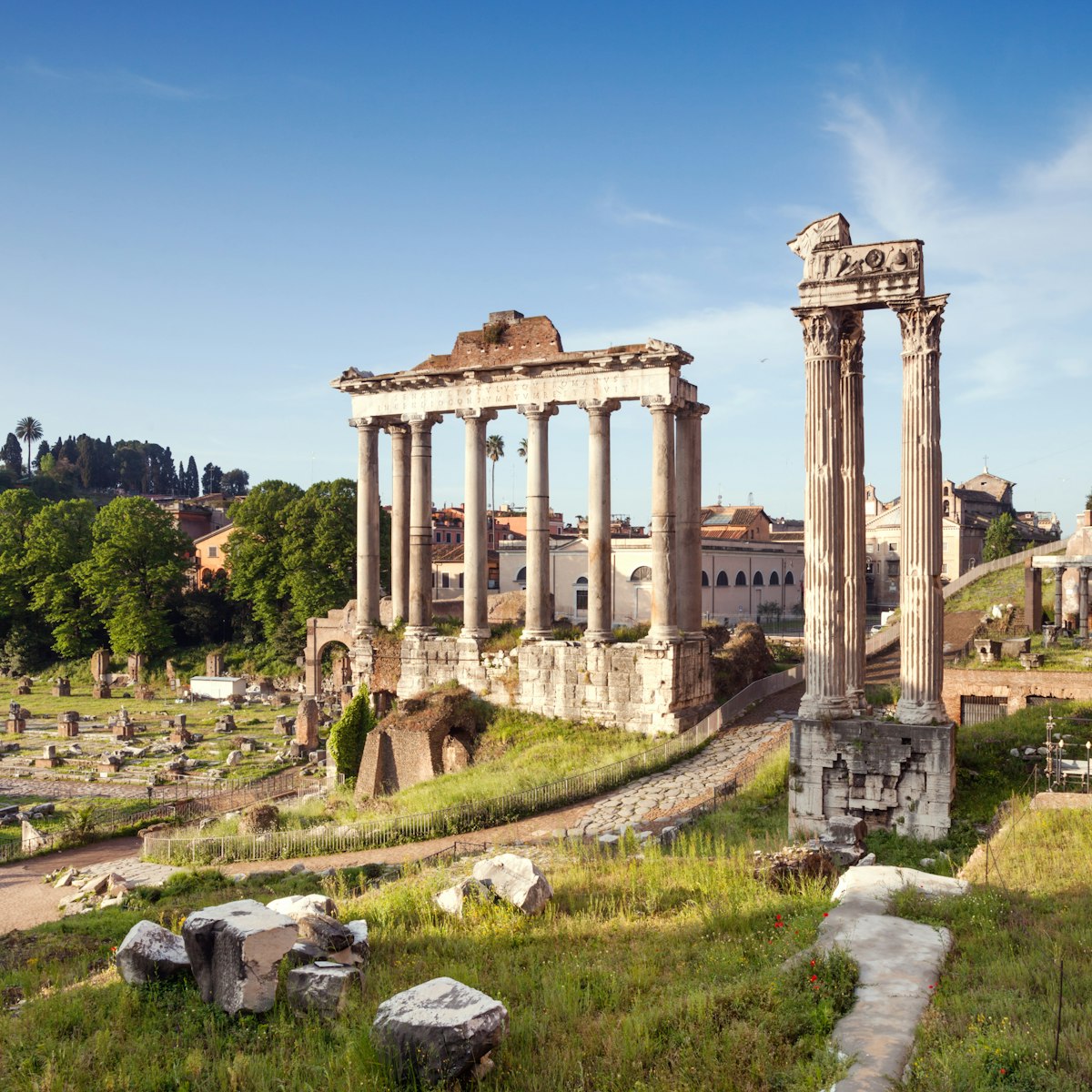
Roman Forum
An impressive – if rather confusing – sprawl of ruins, the Roman Forum was ancient Rome's showpiece center, a grandiose district of temples...

Sandwiched between the Roman Forum and the Circo Massimo, the Palatino (Palatine Hill) is one of Rome's most spectacular sights. It's a beautiful,…
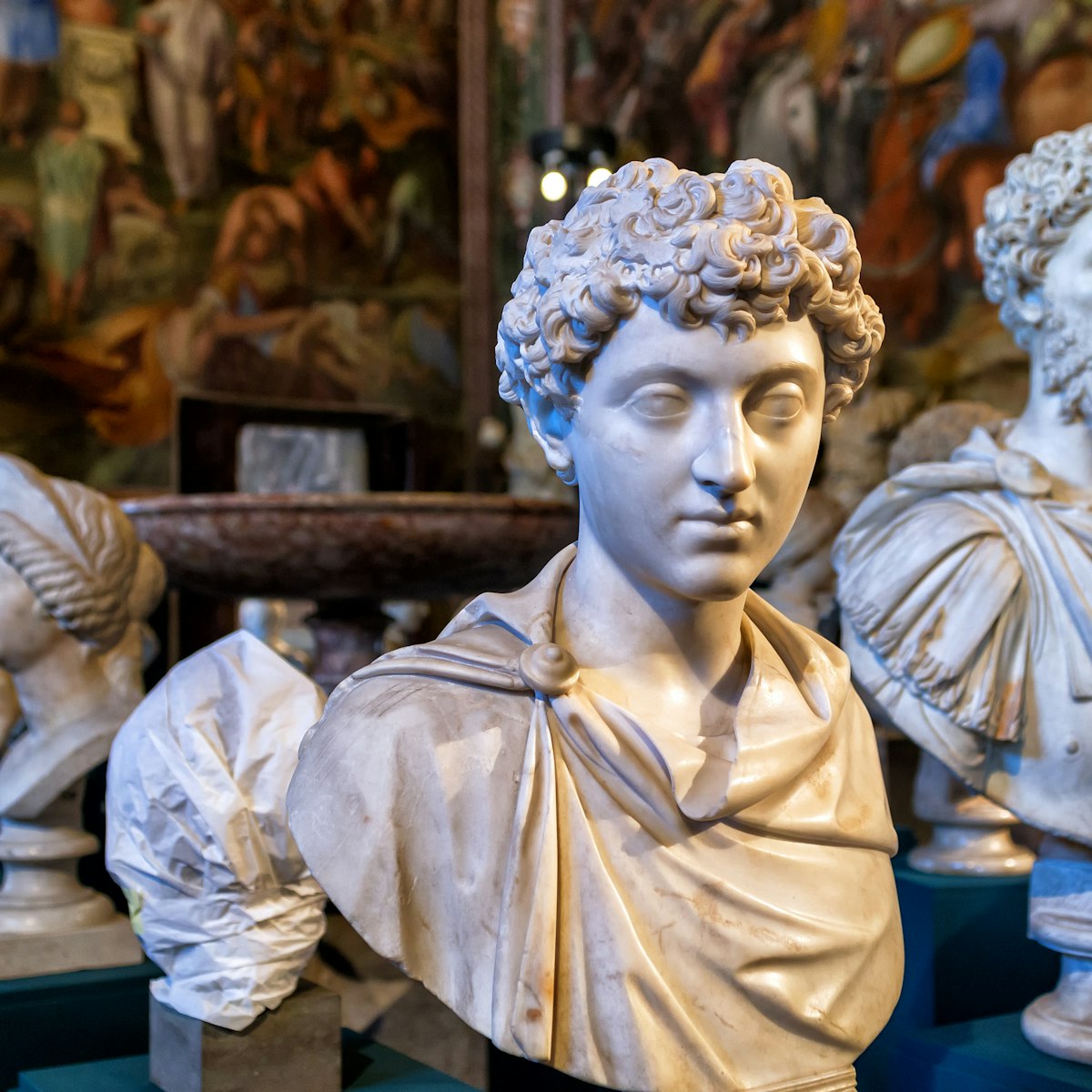
Capitoline Museums
Dating from 1471, the Capitoline Museums are the world's oldest public museums, with a fine collection of classical sculpture.
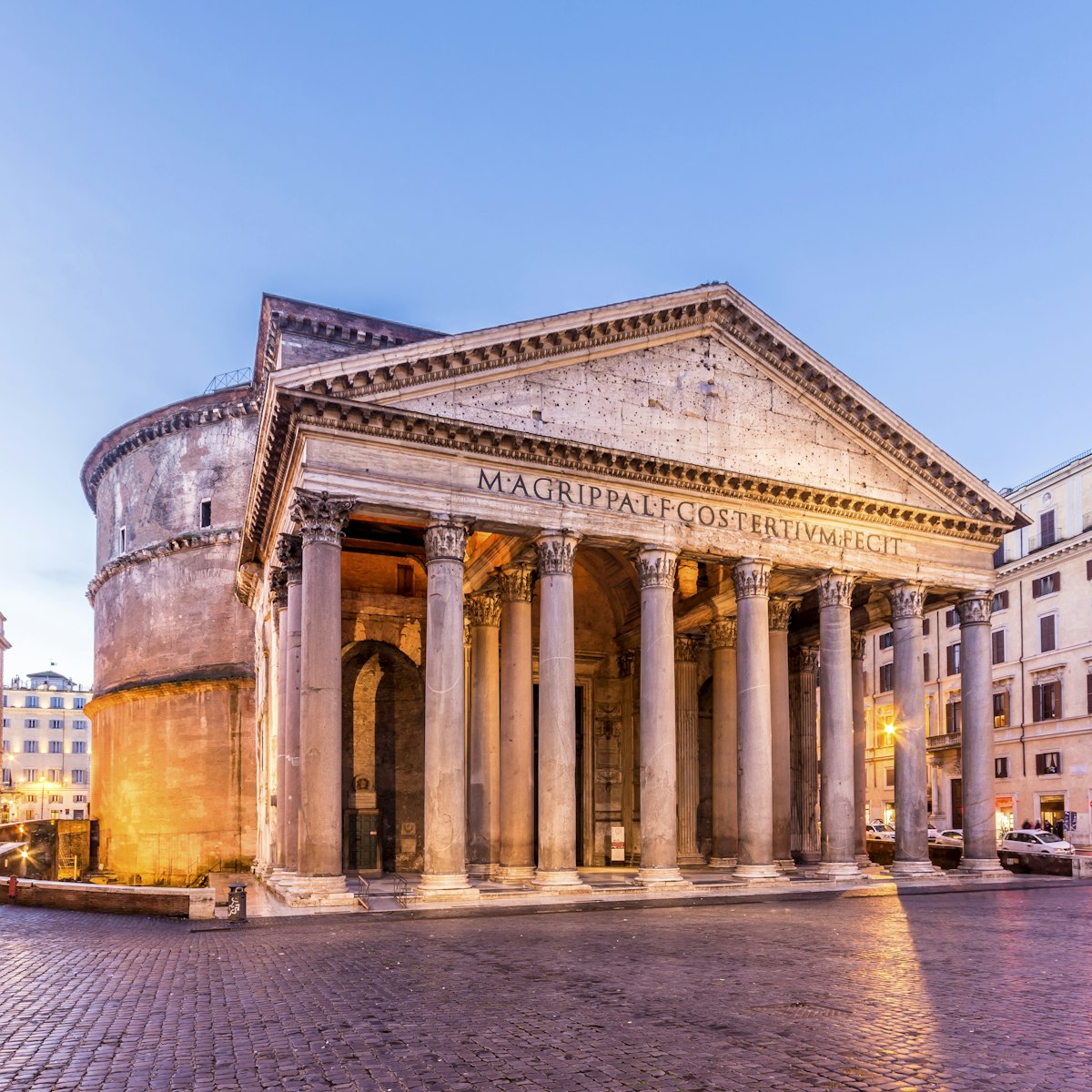
Centro Storico
With its revolutionary design, this awe-inspiring temple has served as an architectural blueprint for millennia.
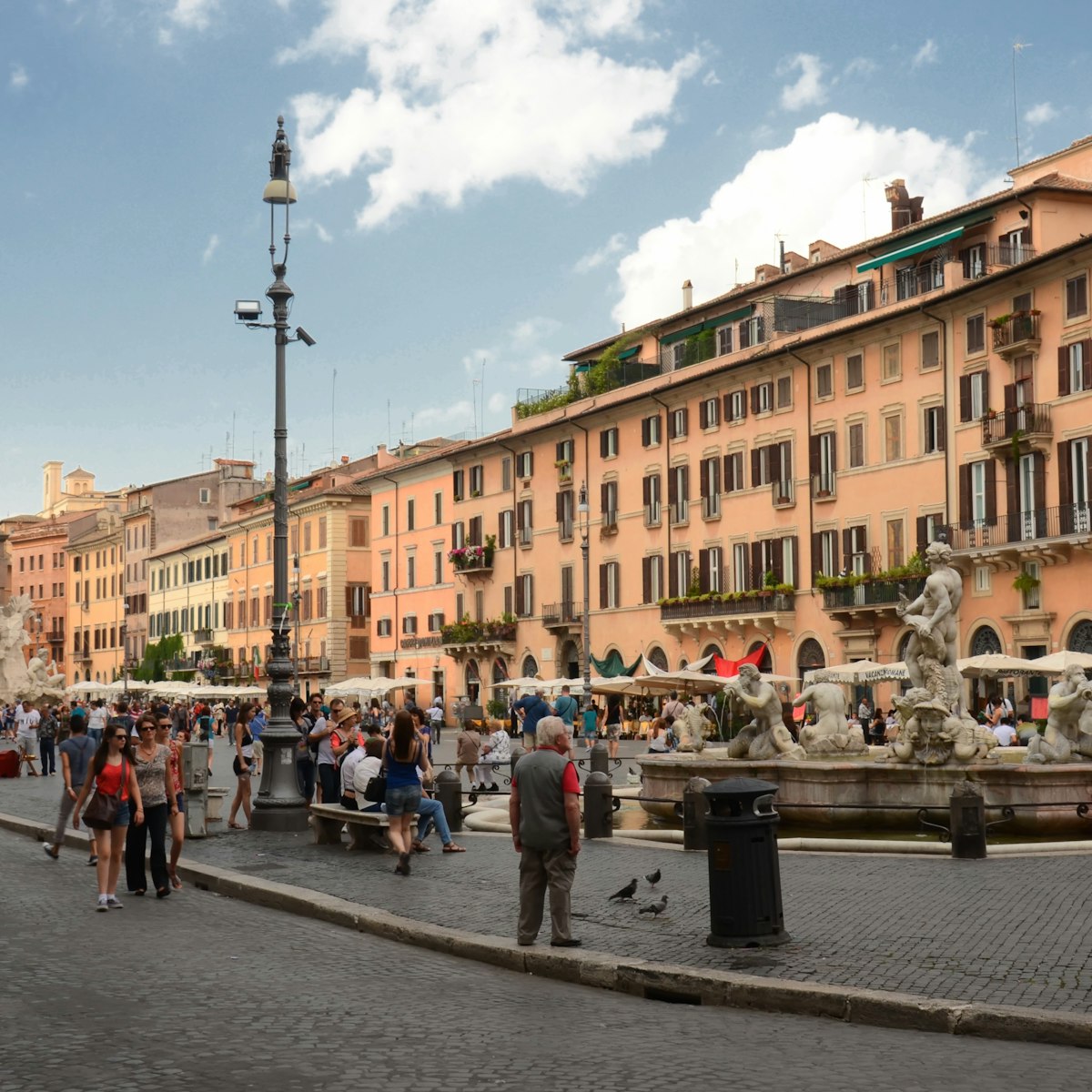
Piazza Navona
With its showy fountains, baroque palazzi and colorful cast of street artists, hawkers and tourists, Piazza Navona is central Rome’s elegant showcase…
Top picks from our travel experts
10 top things to do in rome in 2024.
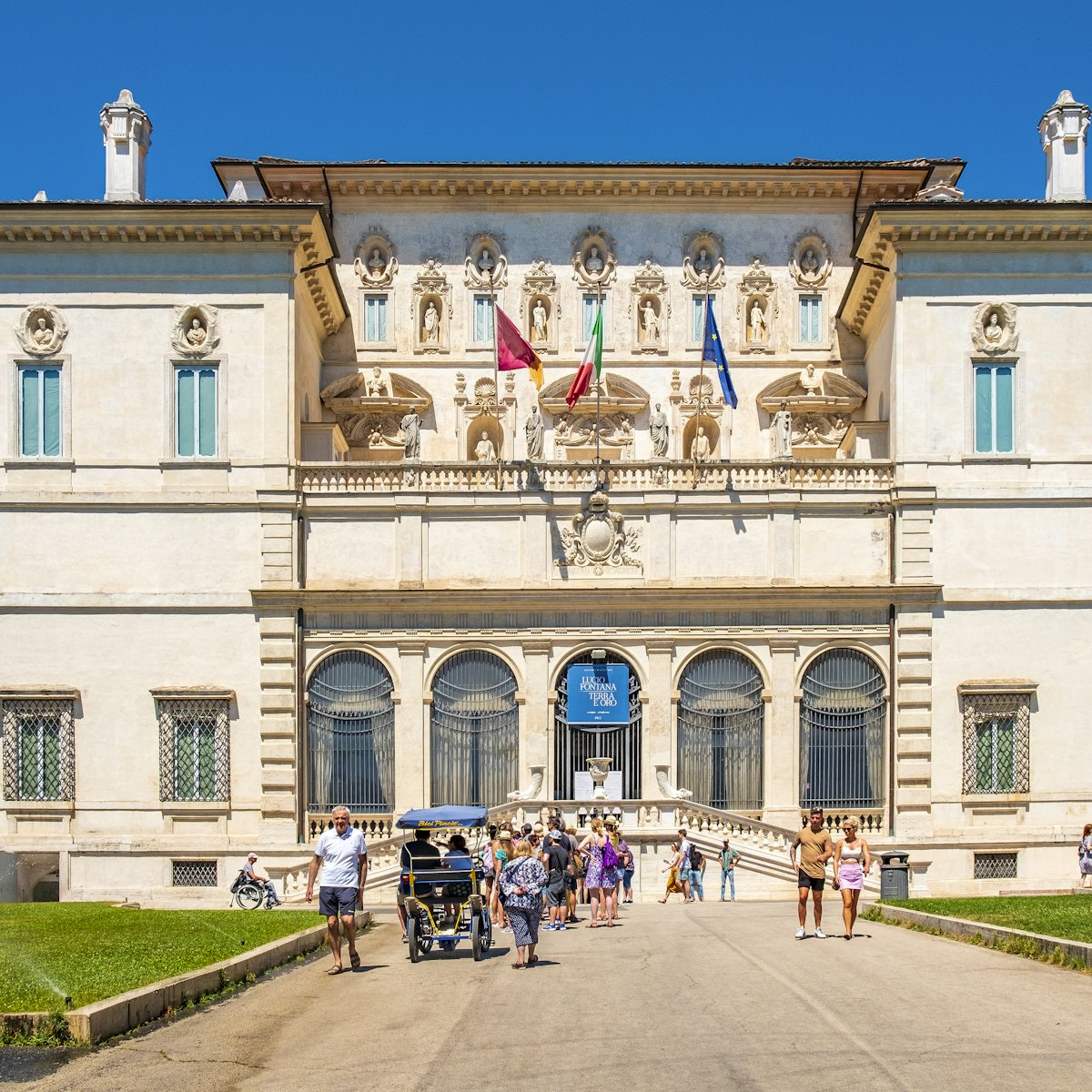
Museo e Galleria Borghese
If you only have time for one art gallery in Rome, make it the Museo e Galleria Borghese.

Circo Massimo
Now a huge basin of dusty grass, Circo Massimo was ancient Rome’s largest chariot racetrack, a 250,000-seater capable of holding up to a quarter of the…
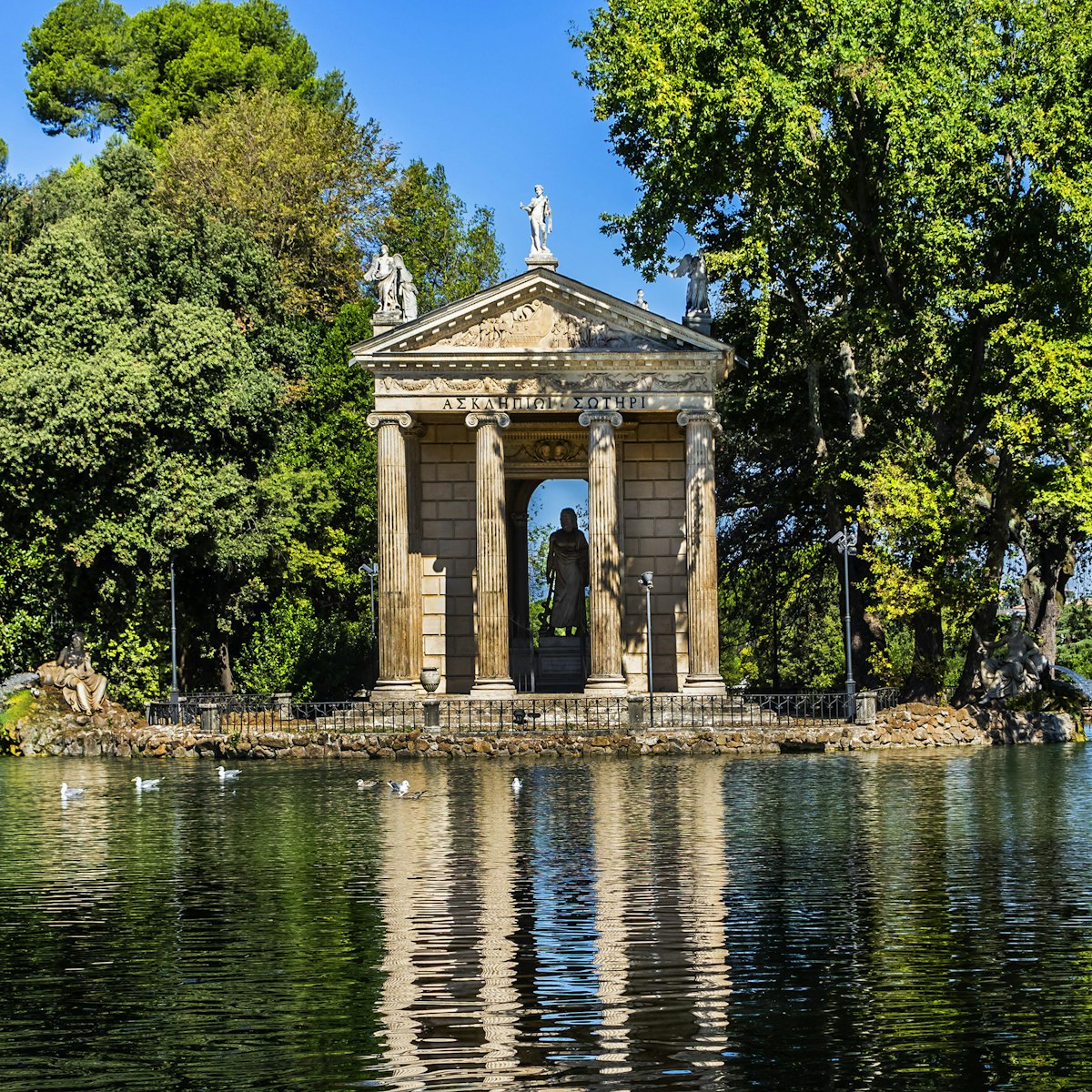
Villa Borghese
No one can resist the lure of Rome's most celebrated park, full of wooded glades, gardens and grassy banks.

Domus Aurea
Monti, Esquilino & San Lorenzo
Nero had his Domus Aurea constructed after the fire of AD 64 (which he is rumoured to have started to clear the area). Named after the gold that lined its…
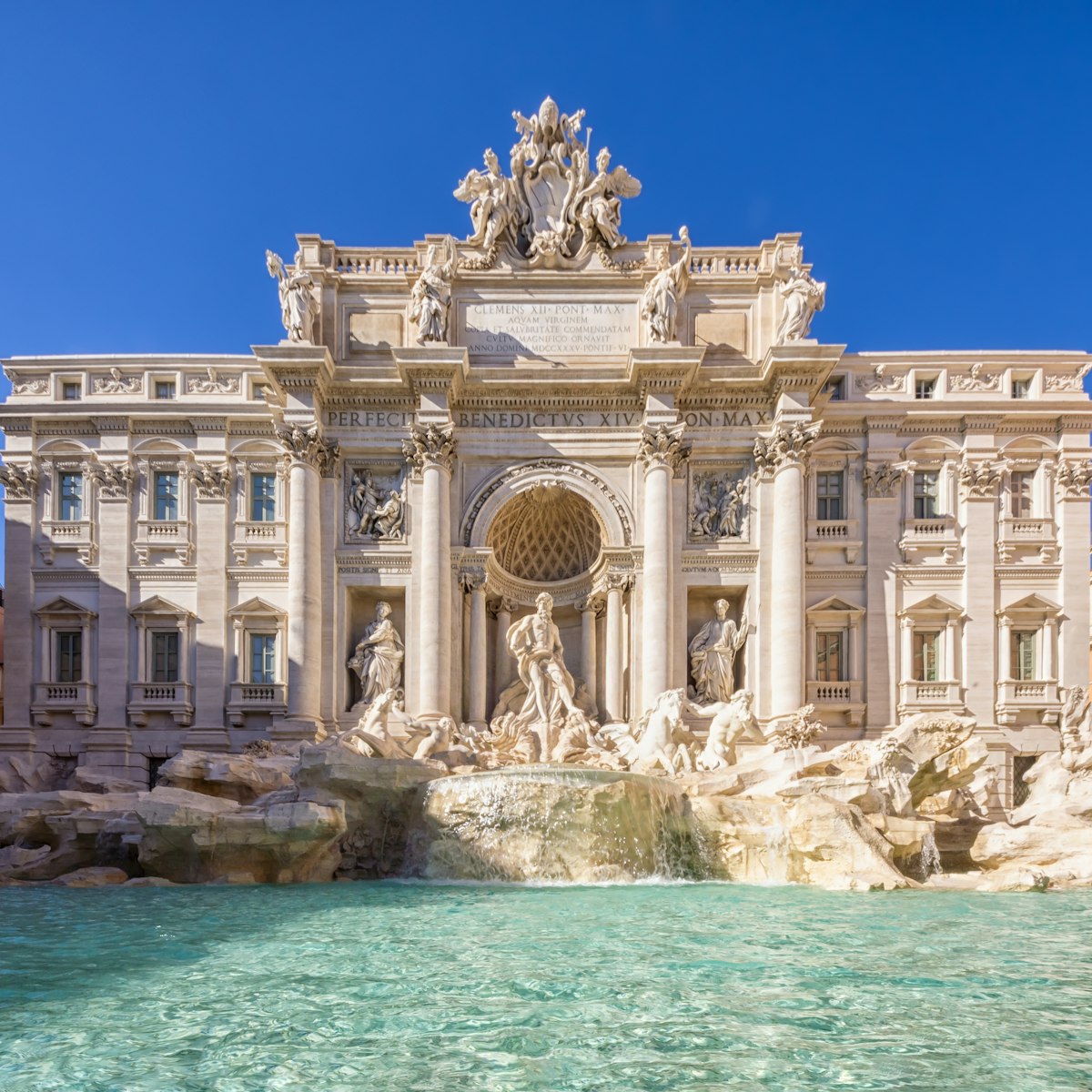
Trevi Fountain
Tridente, Trevi & the Quirinale
Don't miss a visit to Rome's iconic Fontana di Trevi, or Trevi Fountain.
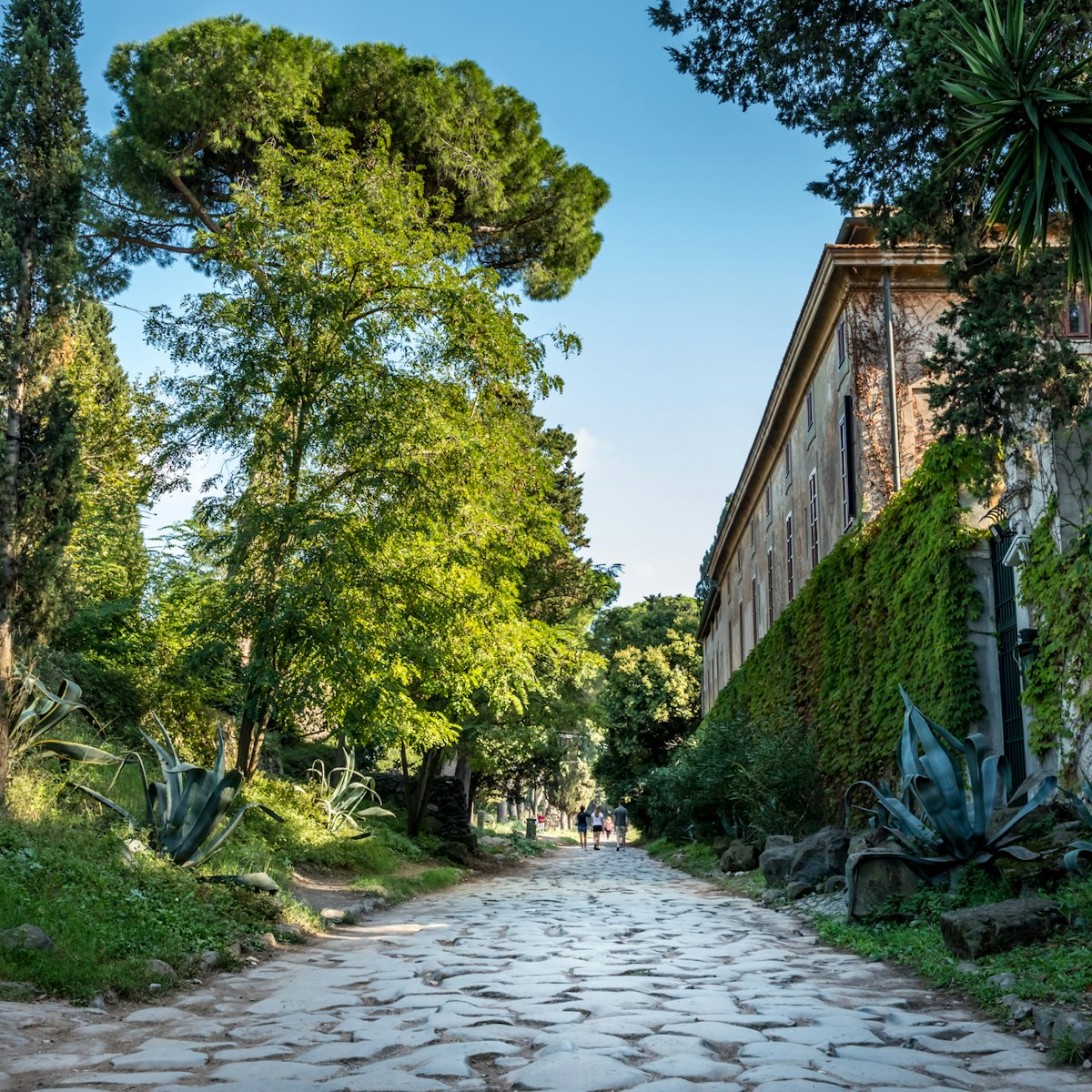
Via Appia Antica
Southern Rome
Via Appia Antica is a beautiful cobbled thoroughfare flanked by grassy fields, ancient Roman structures and towering pine trees.

Palazzo Colonna
The guided tours of this opulent palace are among the city's best, introducing visitors to the residence and art collection of the patrician Colonna…
24 free things to do in Rome
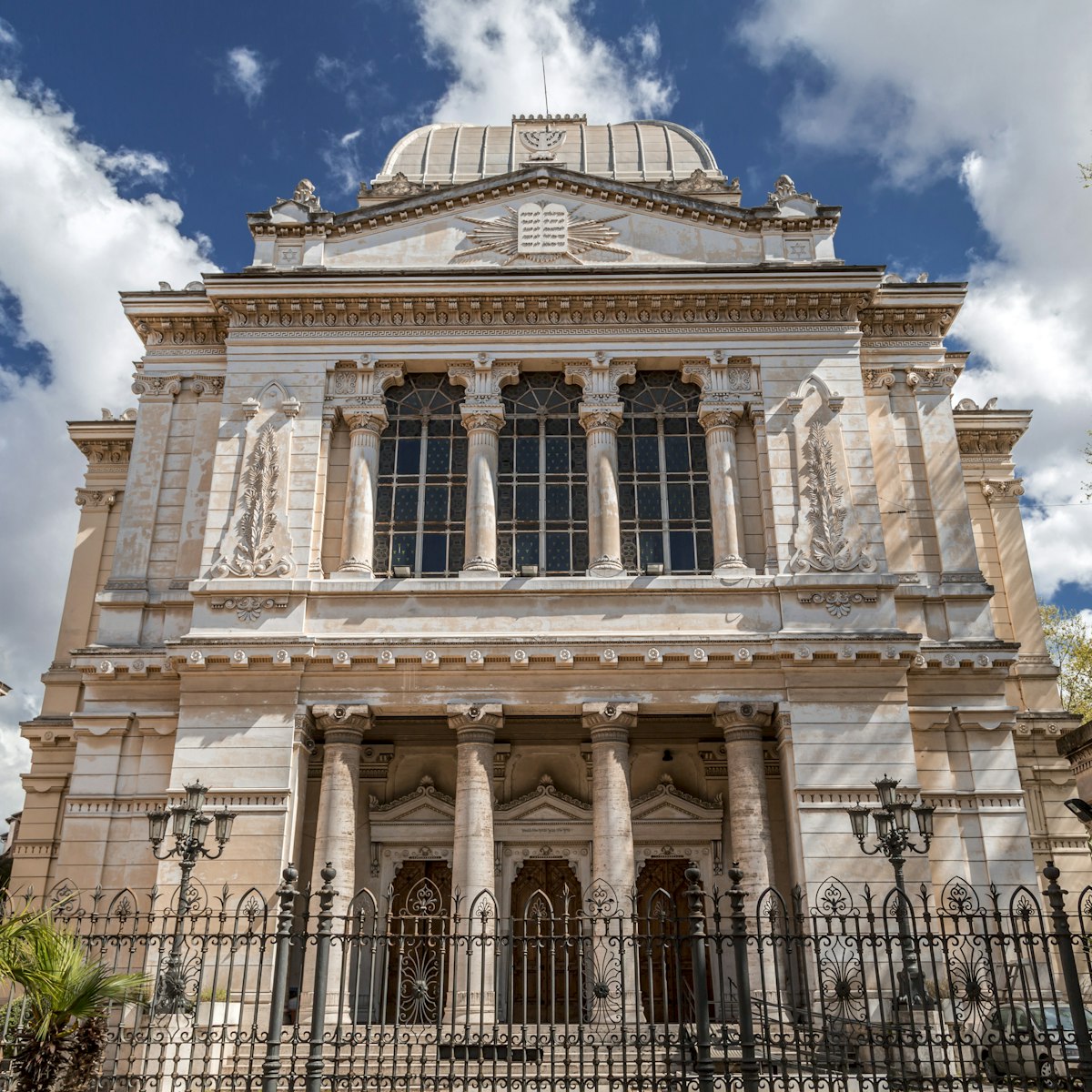
Jewish Ghetto
Visit the atmospheric Jewish Ghetto neighborhood for art studios, kosher food and Rome's main synagogue.

Piazza del Campidoglio
This hilltop piazza, designed by Michelangelo in 1538, is one of Rome's most beautiful squares. There are several approaches but the most dramatic is the…
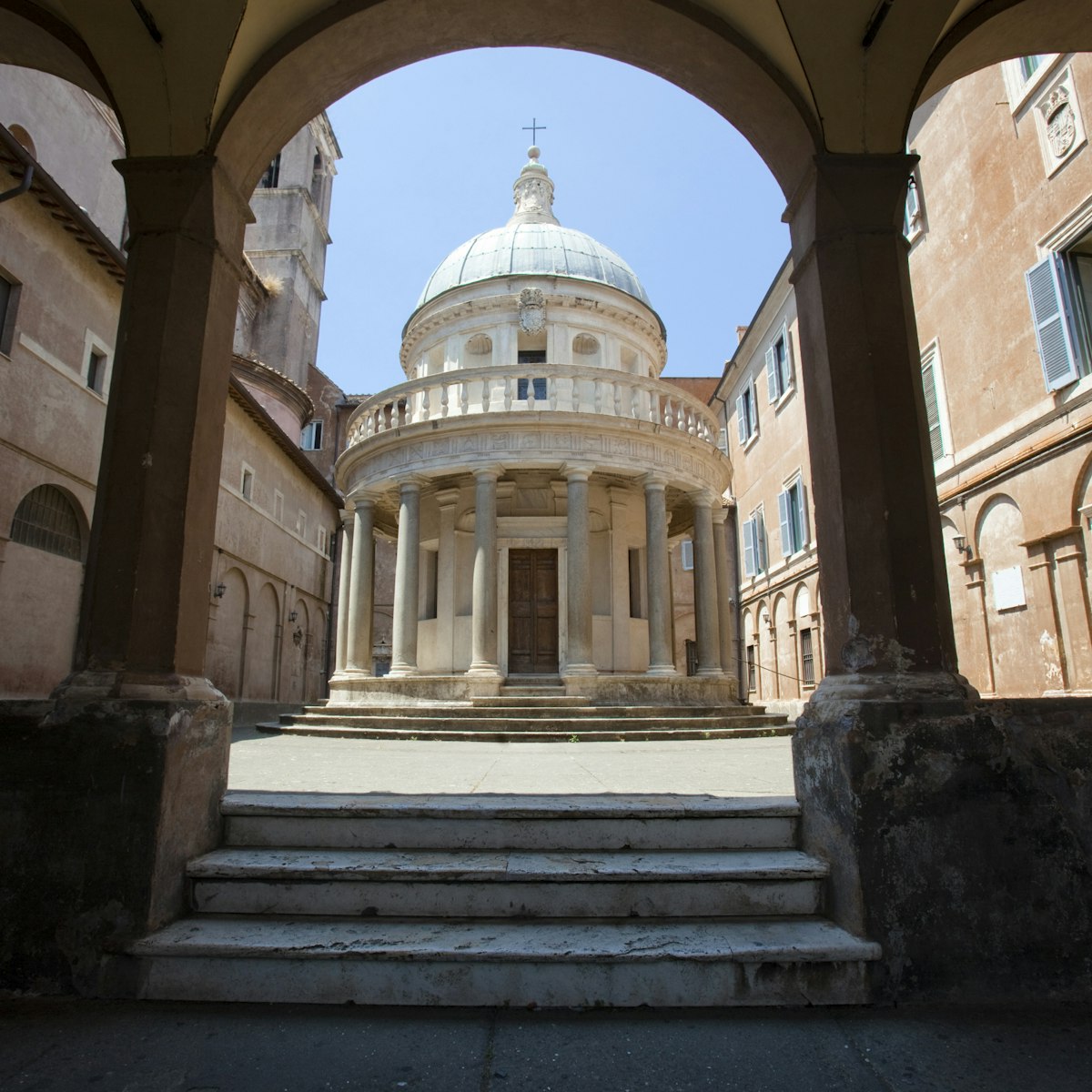
Tempietto di Bramante & Chiesa di San Pietro in Montorio
Trastevere & Gianicolo
Bramante’s sublime tempietto (Little Temple) is a perfect surprise in the courtyard of the Chiesa di San Pietro in Montorio.

Chiesa di San Luigi dei Francesi
This opulent baroque church is home to a celebrated trio of Caravaggio paintings.

Pincio Hill Gardens
One of Rome's best viewpoints, Pincio Hill is worth the climb.
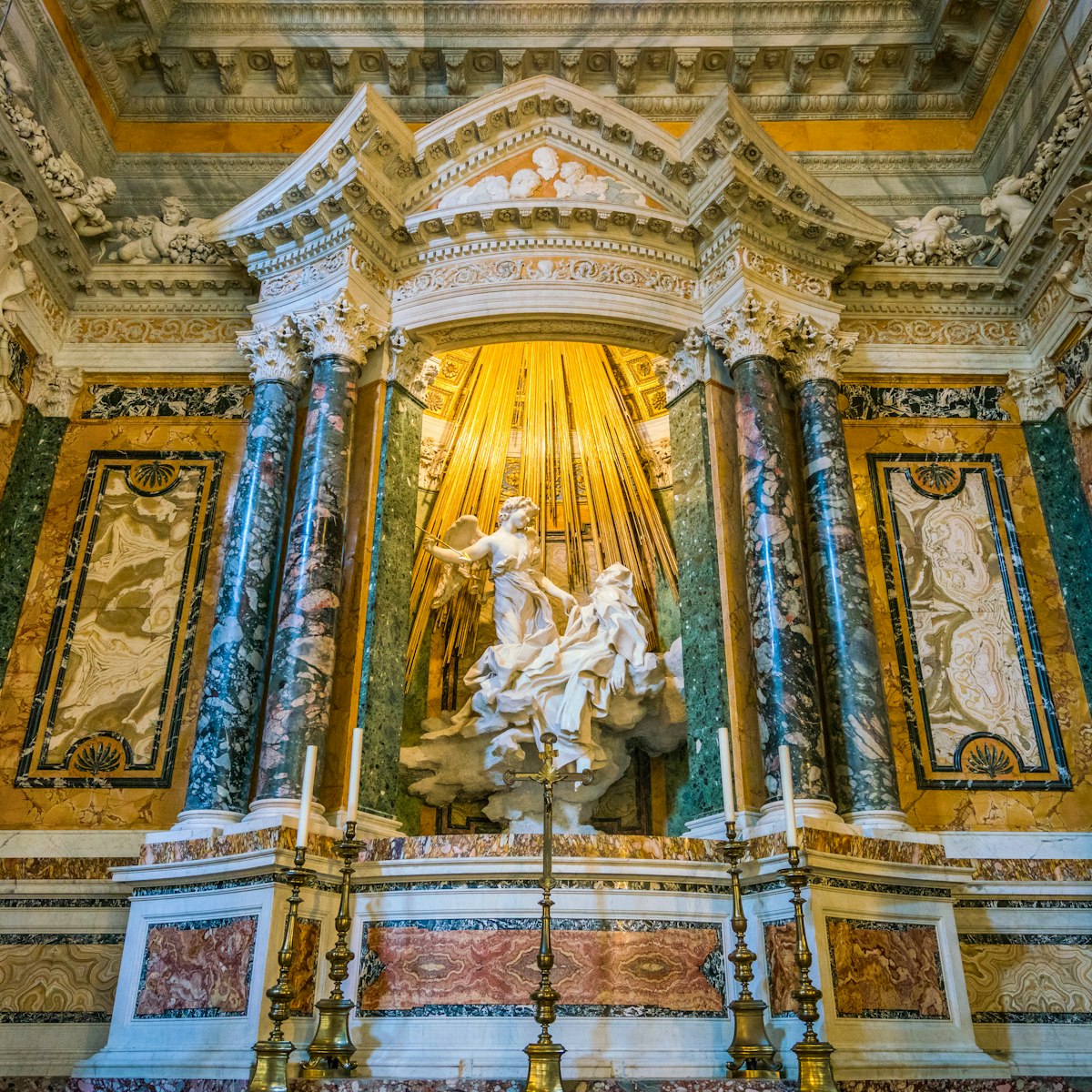
Chiesa di Santa Maria della Vittoria
This modest church is an unlikely setting for an extraordinary work of art – Bernini’s extravagant sculpture, the Ecstacy of St Teresa.
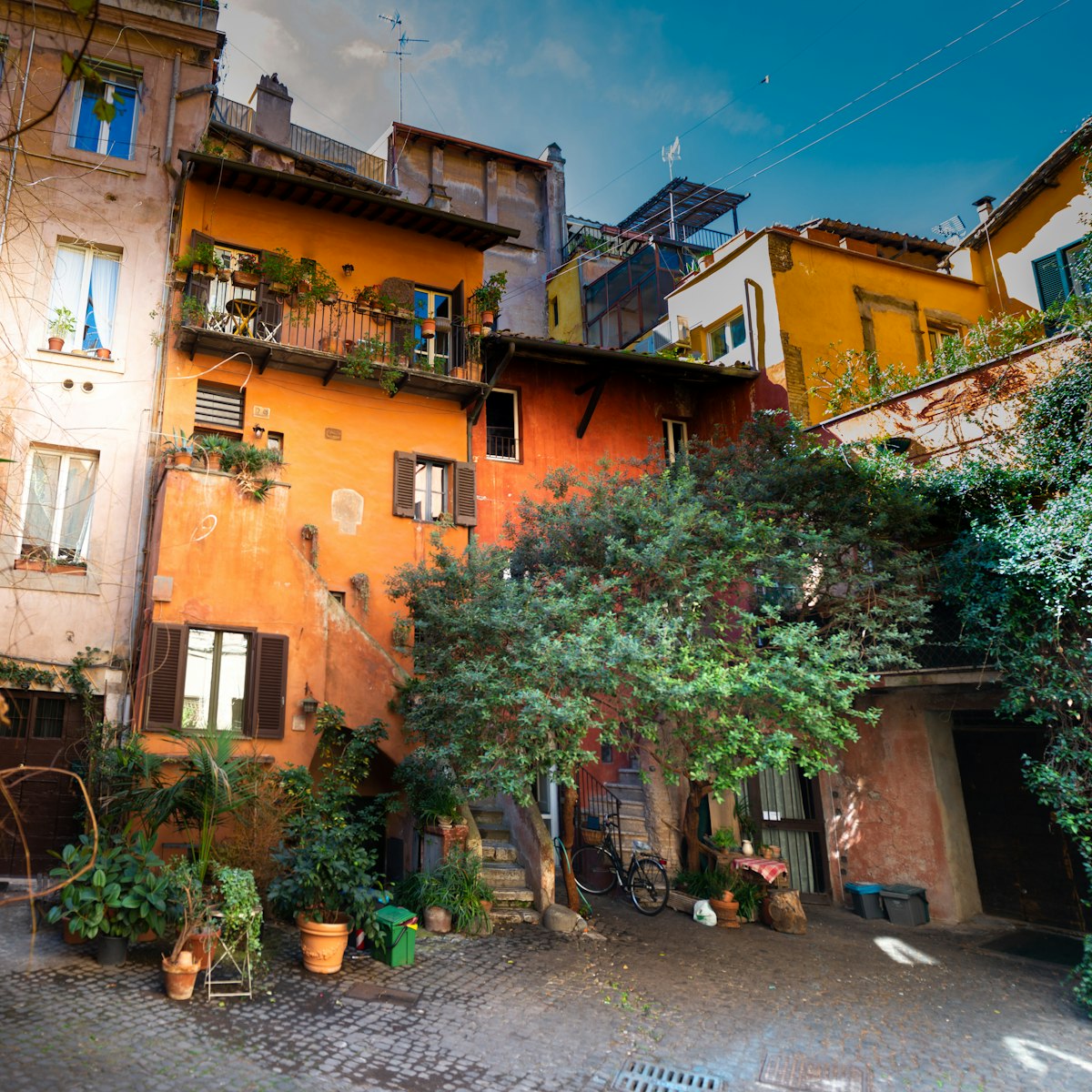
Arco degli Acetari
For one of Rome’s most picture-perfect scenes, head to this dark archway just off Campo de’ Fiori. The arch in itself isn’t especially memorable...

Giardino del Lago
Designed and laid out in the late 18th century, this leafy area is centred on a small, romantic lake where you can hire a rowing boat. The highlight,…
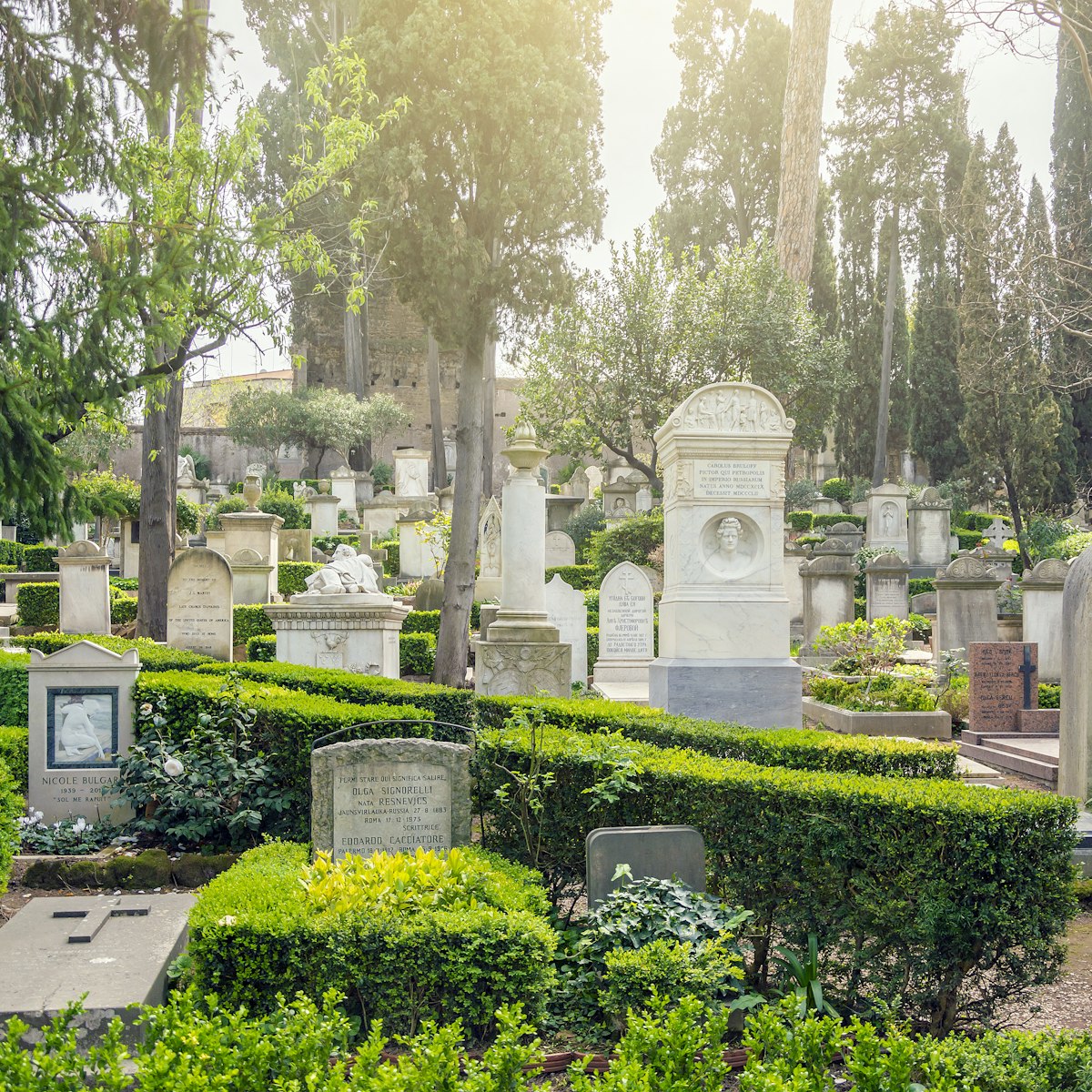
Cimitero Acattolico per gli Stranieri
San Giovanni & Testaccio
Despite the roads that surround it, Rome’s 'non-Catholic' cemetery is a verdant oasis of peace. An air of Grand Tour romance hangs over the site where up…
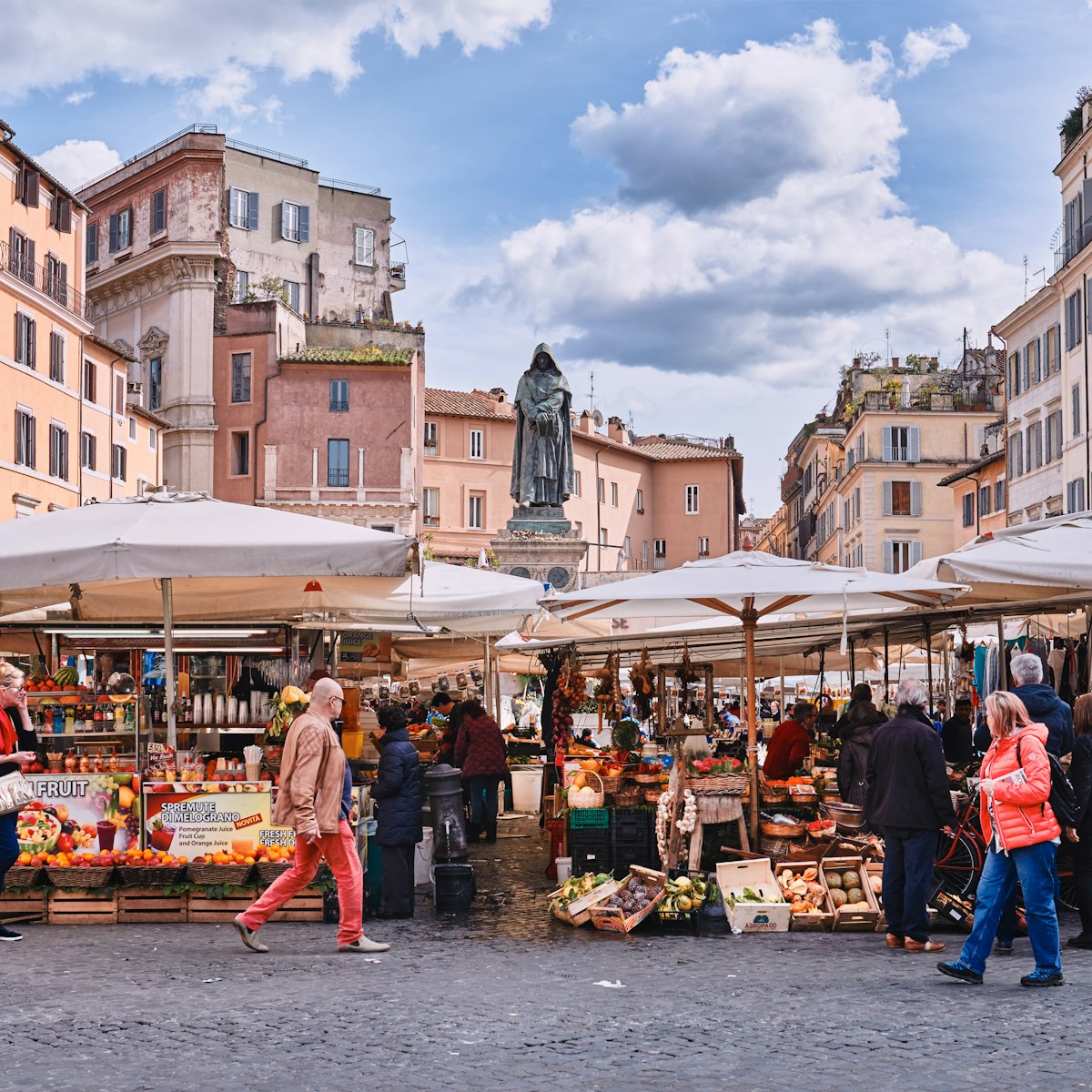
Campo de' Fiori
Il Campo is a major focus of Roman life: by day it hosts one of the city's best-known markets; by night, people come for its lively bars and restaurants.
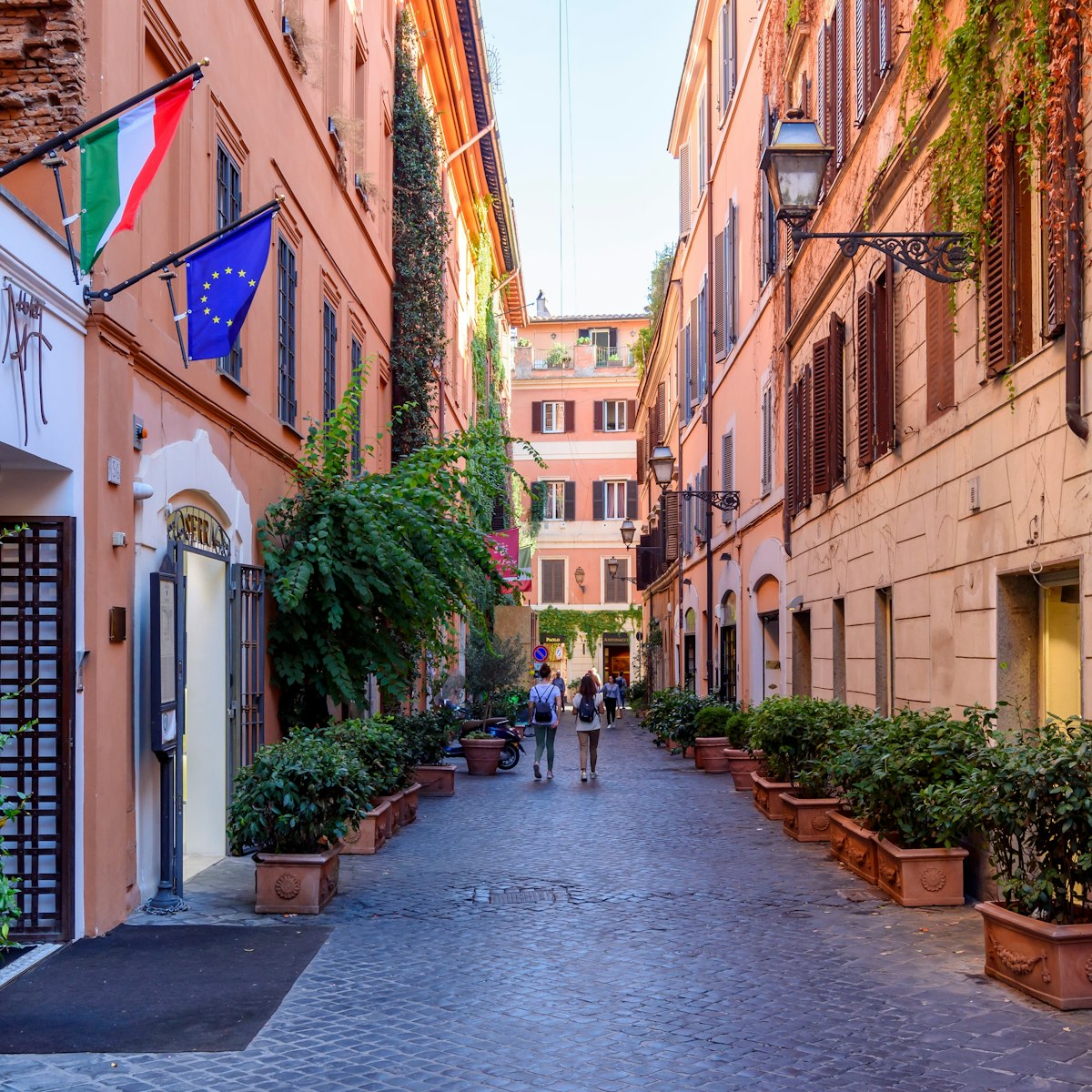
Via Margutta
Visit the antique shops, commercial art galleries and artisanal boutiques of Via Margutta, one of Rome's prettiest pedestrian cobbled lanes.
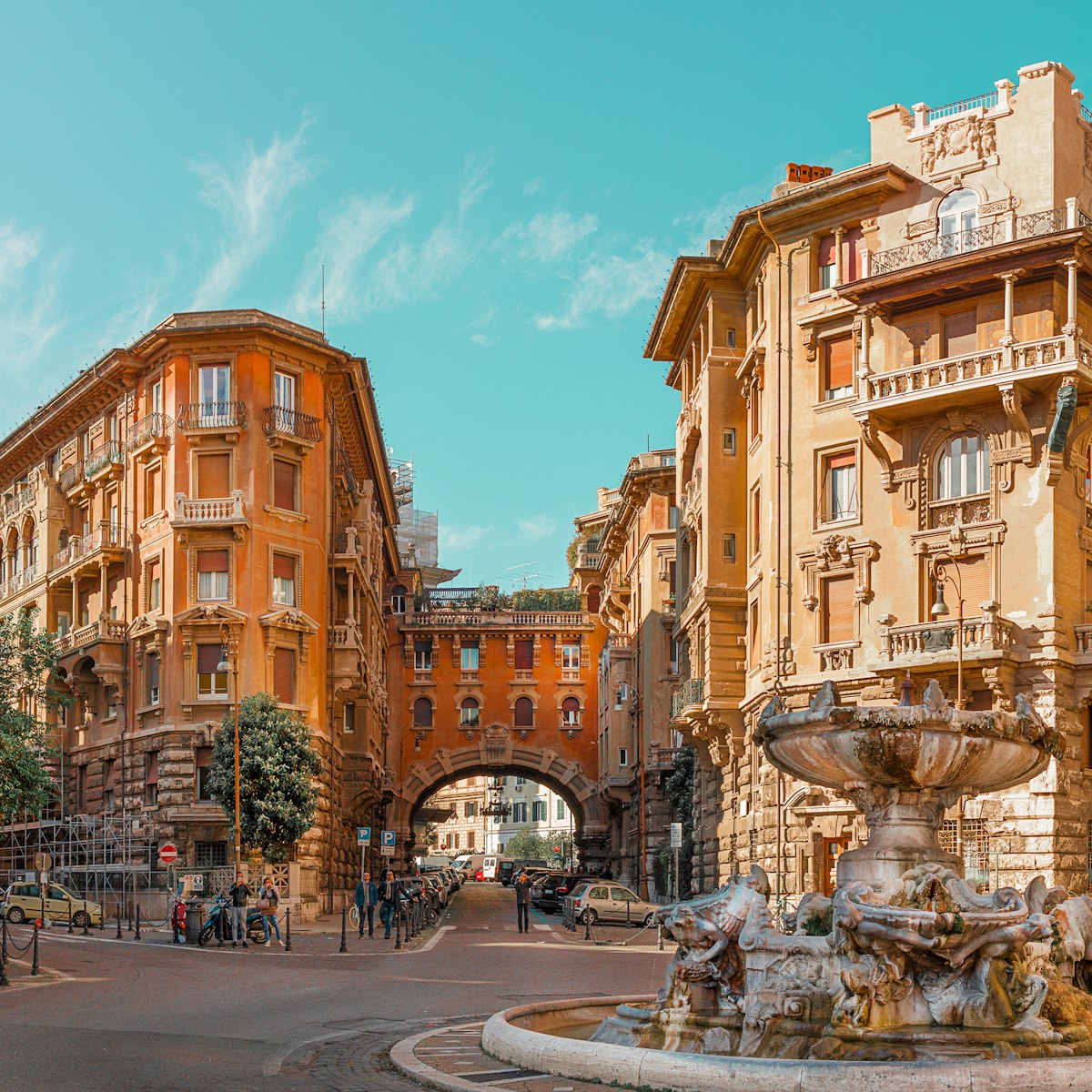
Quartiere Coppedè
The compact Quartiere Coppedè, centering around the magnificent Piazza Mincio, is one of Rome's most extraordinary neighbourhoods. Conceived and built by…
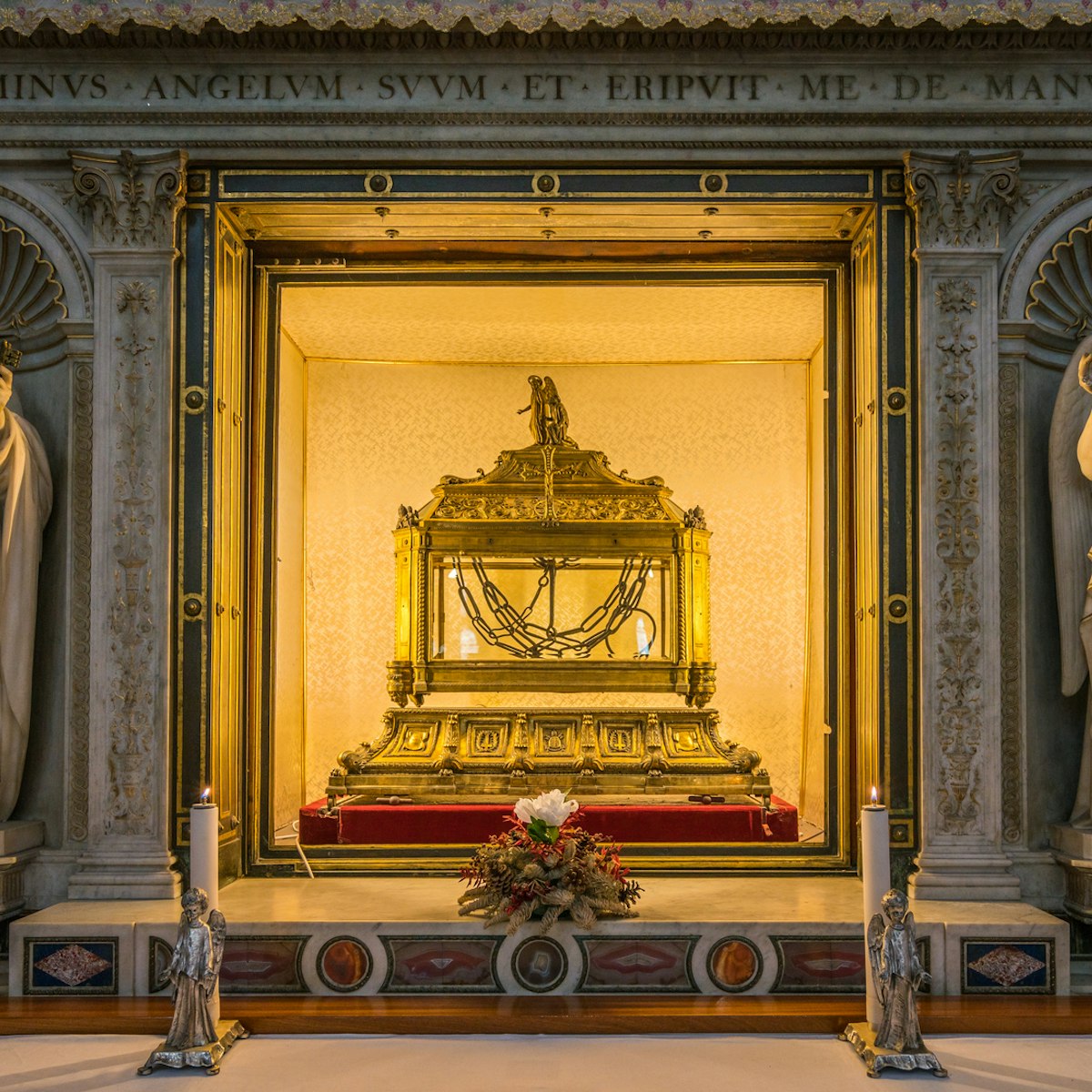
Basilica di San Pietro in Vincoli
This 5th-century basilica draws pilgrims and art lovers to marvel at its treasures.
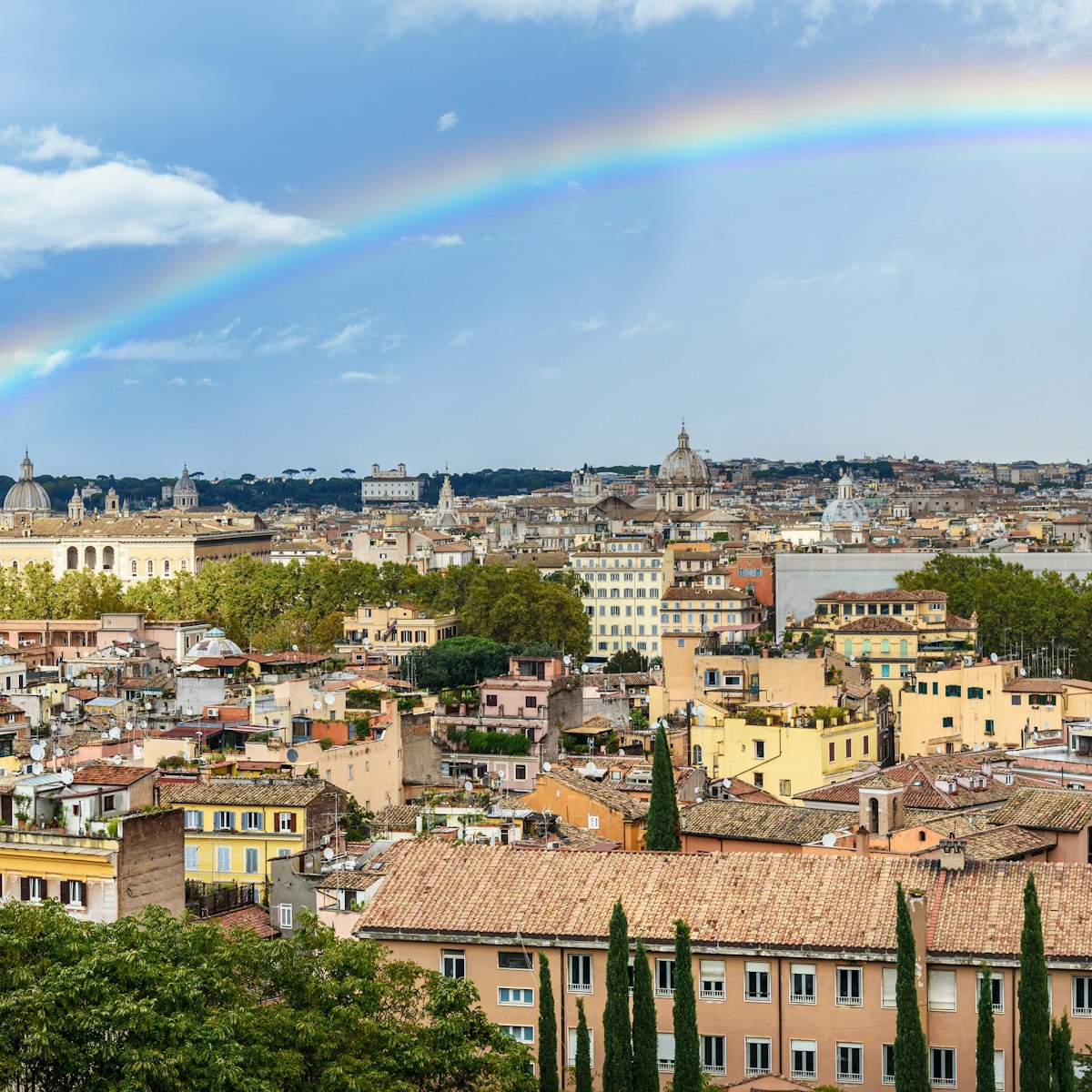
Explore monuments, fountains and gardens on the verdant hill of Gianicolo (or Janiculum).
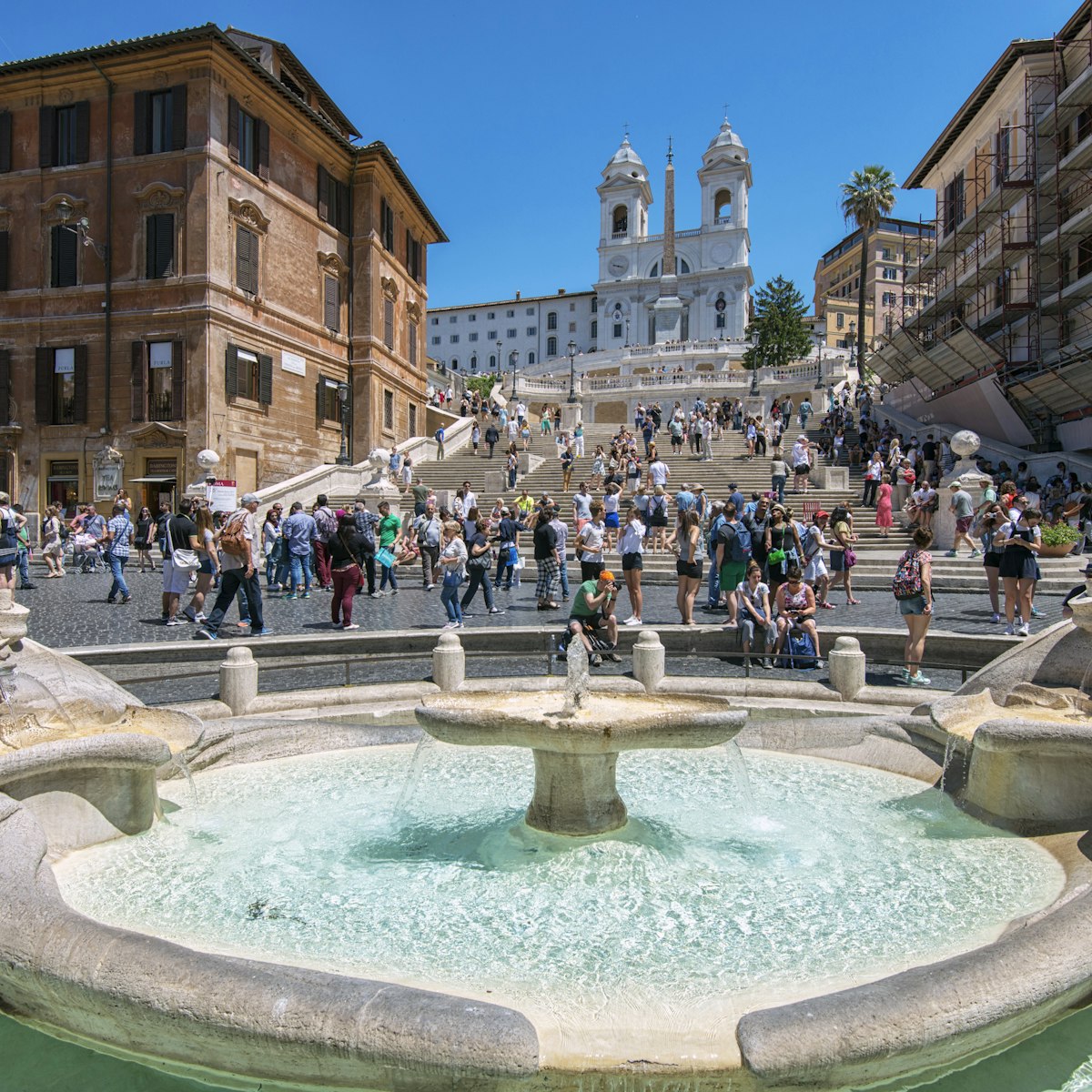
Piazza di Spagna & the Spanish Steps
The Spanish Steps are the perfect place for some people watching and great views over Rome.

Fontana dei Quattro Fiumi
Piazza Navona's flamboyant centrepiece, Gian Lorenzo Bernini’s Fontana dei Quattro Fiumi is an ornate, showy work. Completed in 1651, it features a…

The most dramatic approach to Piazza del Campidoglio is via this graceful staircase from Piazza d'Aracoeli. Designed by Michelangelo, it was built with…

Villa del Priorato di Malta
Fronting an ornate cypress-shaded piazza, the Roman headquarters of the Sovereign Order of Malta, aka the Cavalieri di Malta (Knights of Malta), boasts…

Chiesa della Trinità dei Monti
Sitting in majesty above the Spanish Steps, this landmark church was commissioned by King Louis XII of France and consecrated in 1585. Apart from the…

Imperial Forums
The forums of Trajan, Augustus, Nerva and Caesar are known collectively as the Imperial Forums. They were largely buried when Mussolini bulldozed Via dei…
Planning Tools
Expert guidance to help you plan your trip.
Things to Know
Rome is a sensory overload in the best way but that can also make it overwhelming for first-time visitors. Here's what you need to know before you go.
Best Neighborhoods
A trip to Rome is as much about lapping up the dolce vita lifestyle as gorging on art and culture. Here's a look at the city's top neighborhoods.
From Rome's surrounding Lazio region to Florence, Naples and Pompeii, amazing sights are all within day-trip range of Italy’s capital.
Money and Costs
There’s no need for the Eternal City to leave you eternally broke. The city offers myriad ways to visit in style while saving money.
Transportation
Find your way around in Rome with this guide to transportation and tickets.
Free Things to Do
Visiting Rome on a budget? These are the best free experiences in Italy's capital city.
Traveling with Kids
From the Colosseum to the catacombs, and sprawling parks to virtual time travel, Rome promises a memorable trip for the whole family.
Discover architectural jewelry, local design, vintage finds, and tiny treasures in Rome's independent shops and markets.
Plan with a local
Experience the real Italy
Let a local expert craft your dream trip.

Latest stories from Rome
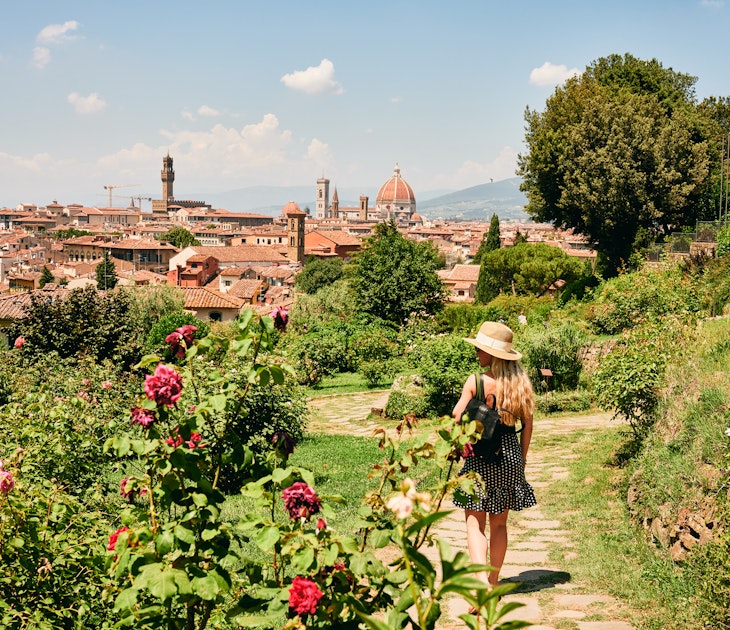
Mar 27, 2024 • 5 min read
Want to travel from Rome to Tuscany on a day trip? Lonely Planet writer, Paula Hardy, tells you how to make that happen.

Mar 15, 2024 • 10 min read
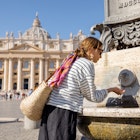
Feb 29, 2024 • 13 min read

Feb 27, 2024 • 9 min read
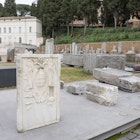
Jan 15, 2024 • 3 min read
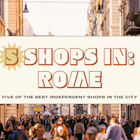
Jan 3, 2024 • 4 min read
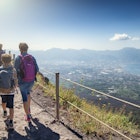
Dec 13, 2023 • 10 min read
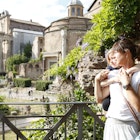
Oct 18, 2023 • 9 min read
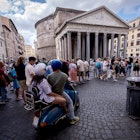
Jul 7, 2023 • 2 min read

Jun 29, 2023 • 8 min read
in partnership with getyourguide
Book popular activities in Rome
Purchase our award-winning guidebooks.
Get to the heart of Rome with one of our in-depth, award-winning guidebooks, covering maps, itineraries, and expert guidance.
Rome and beyond
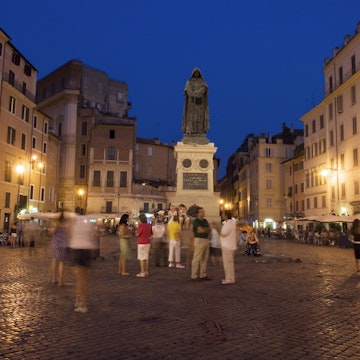

Art & Culture Travel Blog
My travel diary: four days in rome.
- Tea Gudek Šnajdar

My travel diary: Four days in Rome blog post was first published on Culture Tourist on 14 February 2017 and updated on 16 May 2023.
Last month I spent four days in Rome. The city was busy, loud, and filled with cars, but also calm, monumental and beautiful at the same time. It was my first time in Rome, so I wanted to see everything: Roman ruins, museums, beautiful architecture. But I also wanted to get a glimpse of the everyday life in the Eternal City and enjoy wandering its streets, meeting some locals and tasting delicious Italian food.
Four days in Rome
This post contains some affiliate links. Read our Privacy Policy for more info.
During my four days in Rome, I managed to experience all of that. It’s a beautiful city and, for a reason, one of the most popular places in Europe.
Day one in Rome

My four days in Rome started rough. The night before, there was a massive storm in Amsterdam, so I was worried about our flight. But everything was more than perfect in the end. It was a calm flight, and we came to Rome around 2 pm.
After checking in at our hotel, we went for a short walk towards one of the most famous sites in Rome, the Colosseum. It’s always exciting to see those very famous buildings for the first time in your life. I felt like a child, remembering when I saw that fantastic building for the first time in my school book. And how far and distant it looked to me back then.
⤷ TIP : If you’re planning to spend four days in Rome as I did, getting Roma Pass Card is a good idea. It includes free public transport and free or discounted entrances to many museums and attractions. You can check out the Roma Pass card on this link .
Learning how to cook like an Italian
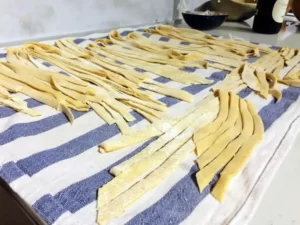
Oooh, Italian food… It’s my favourite cuisine! I could eat pasta every day and finish every single meal with tiramisu .
We wanted to learn more about Italian food during our trip to Rome, so we booked a cooking workshop for that evening. First, we made the pasta dough, and our teacher Roberto taught us which flour combination works best. I expected making pasta to be much more complicated, but it was pretty easy. We also made a matriciana sauce for pasta, tomato bruschetta, some antipasti as a starter and a nice dessert – c iambelle al vino . And I am very proud of us because everything was delicious!
⤷ Read more : Exploring Rome with the Urbs App
Day two in Rome
Exploring vatican city.
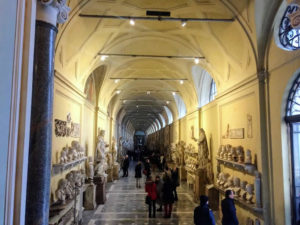
After a delicious Italian breakfast and a coffee, we walked towards the Spanish steps, Trevi Fountain, Pantheon and Piazza Navona. Rome is filled with beautiful architecture, so you stumble to fantastic masterpieces around each corner.
We planned to visit Vatican City in the afternoon to see its famous museums and St. Peter’s Basilica. Since it’s such a fantastic piece of art and home to numerous paintings and statues, we decided to have a guided tour there and learn as much as possible about it.
After a long search, I booked this small group tour in the Vatican . And it was such a wonderful experience! Our guide Alessia took us on a three-hour-long walk around the Vatican museums, Sistine Chapel and St. Peter’s Basilica. The Vatican is so huge and filled with incredible artwork it would be completely impossible to see it on our own.
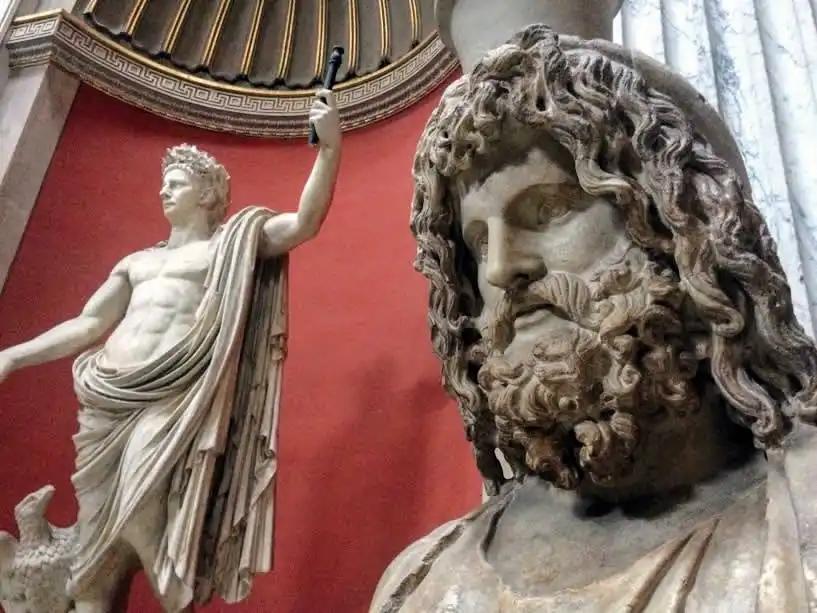
Vatican Museums is undoubtedly one of the best museums in Europe , treasuring so many masterpieces from Antiquity to the Renaissance time. I especially liked the mosaics and the gallery with frescoes depicting old maps of Italy. And the stories behind them – stories about artists, popes and aristocratic families of that time.

At Sistine Chapel , we were amazed by Michelangelo’s persistence and artistic talent. And St. Peter’s Basilica is a masterpiece itself. It really is the Cathedral of the World. Every detail in it is beautiful, from Michelangelo’s Pieta to Bernini’s Baldacchino.
⤷ TIP : If you’ll visit the museum on your own, get your online ticket in advance and avoid long queueing that way. You can get your Vatican Museums and Sistine Chapel skip-the-line ticket on this link .
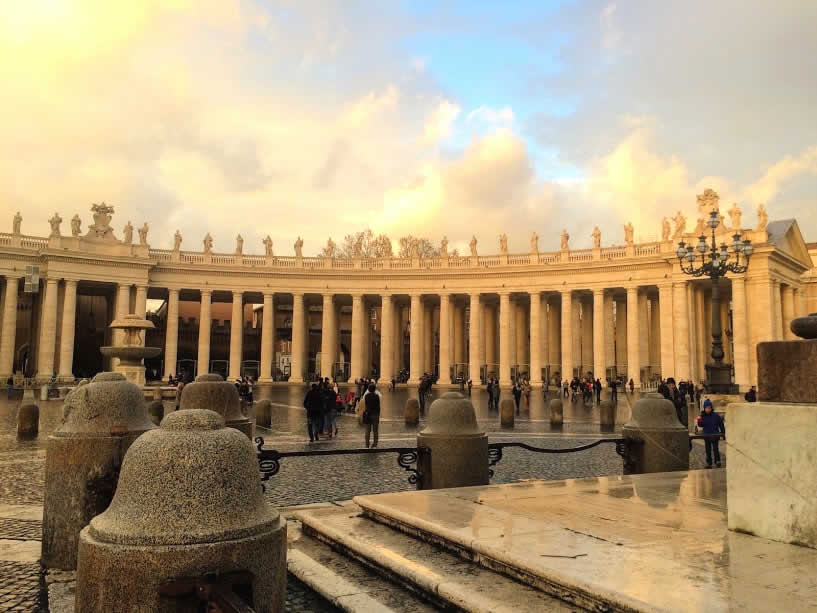
After our tour, we went to St. Peter’s Square. While looking at the famous Basilica, I was overwhelmed with the feeling of appreciation and respect for all the people working on those masterpieces I’ve just seen. Standing there and looking at the sky just cleared from the rainy clouds gave me the feeling of standing in a special sacred place. It was one of the moments I will remember forever!
⤷ Read more : What to see in Vatican City
Day three in Rome
Ancient rome.

Rome is best known for its old Roman architecture and archaeological sites. Colosseum and Roman Forum are the most famous places from the Classical Antiquity. We wanted to see both, so we arrived right after breakfast, and it was already quite busy.
Although the place could use a lot of organisational improvements, it is still stunning! It is a massive archaeological site with triumphal arches, columns and old temples. We should have bought tickets in advance before we got there. Because we didn’t do that, we had to wait for quite some time to get inside. However, I’ll get there with a guided tour if I revisit it.
⤷ TIP : To avoid repeating my mistake, here is the Colosseum and Roman Forum online ticket . And here is the three-hour-guided tour around them.

We spent the whole morning exploring this interesting area of Rome. So, after that, we were ready for a nice Italian lunch!
We listened to the recommendation we got from our guide and went to Trattoria Luzzi , which is close to Colosseum. It had everything a typical Italian restaurant in Rome should have. A long line of people was waiting to get inside, the waiters were loud and entertaining, and the food was terrific! I just loved it! The food was so delicious that I didn’t have time to take any photos of it.
⤷ Read more : 20 Archaeological sites you have to visit in Europe
Afternoon in Trastevere

If you’ve been following the Culture Tourist blog for some time, you know how I love to explore local residential areas of the cities I’m visiting. It always gives me a great insight into the local culture and everyday life of people living there.
That’s why we spent one afternoon exploring the charming Trastevere neighbourhood during our four days in Rome. It’s a colourful area with narrow streets, clothes drying on the balconies and plenty of small cute cafés and restaurants.
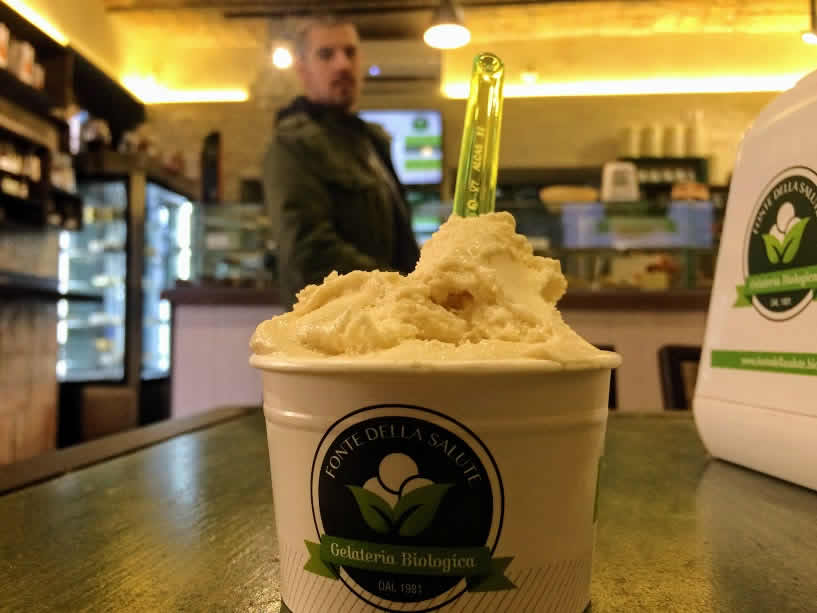
As a massive fan of ice cream, I didn’t want to miss the opportunity to try some gelato during our four days in Rome. We went to an excellent biological patisserie at Trastevere, where I treated myself to a delicious scoop of ginger-honey gelato!
Well, I am really craving it right now…

It was a beautiful sunny afternoon, so we wandered alongside the Tiber River. There are so many beautiful buildings next to it, with Castel Sant’Angelo being my favourite. The bridge in front of it, with all those sculptures of angels, is just stunning. It would make a perfect setting for some exciting thriller movies.
With a combination of beautiful Roman architecture and golden hour, we couldn’t resist taking our cameras out and trying to capture that beauty. We definitely understood why Rome is called the Eternal City.
Day four in Rome
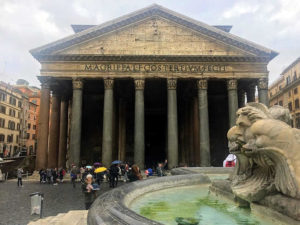
It was our last day in Rome, and since we had a few hours left before catching our flight, we met the Angel Tours again to join their short free Pantheon tour . Everyone knows that building well, but I started to look at it with a new pair of eyes after our guide explained its architecture, symbolism and significance. It’s such a magical place.
⤷ TIP : Get your Pantheon entrance ticket on this link .
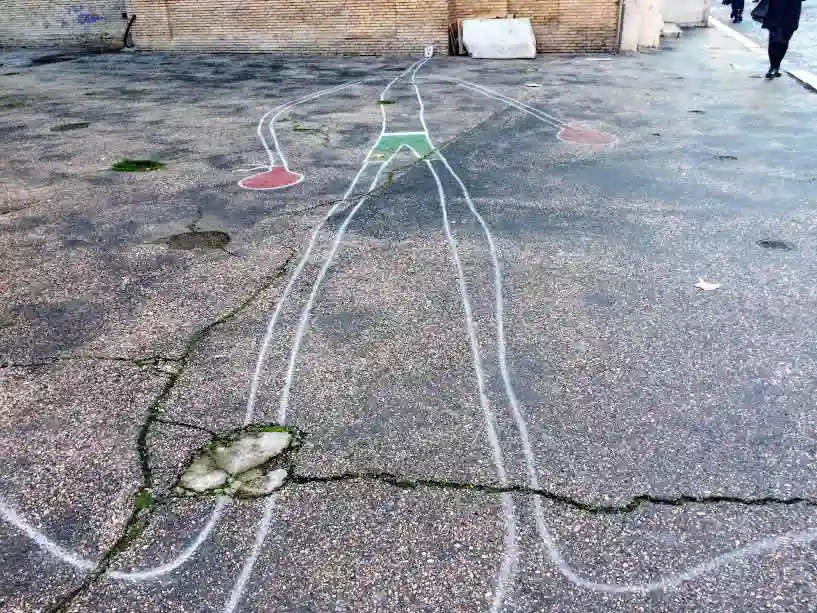
After I spent four days in Rome, I realised it is not an easy city. You can feel it has its own problems. But it is an eternal city! The one that will always inspire people and the one to which they will always return. Read about it before your trip, buy the tickets for museums and archaeological sights in advance, and learn about it during the guided tour! And then just wander around it for the rest of your trip.
And in the end, don’t forget to throw a coin to the Trevi Fountain, so you’re sure you’ll come back!
Finally, I recommend Angel Tours and our great tours with them in Rome. I am not related to them, and this is not a sponsored post. I am just genuinely amazed by their work, the great guides we had and their professional approach. So, a big shout-out here for the Angel Tours! Thanks for the lovely time we had in Rome with you!
Would you like to explore more of Italy?
10 Cultural spots to visit in Florence
How to travel around Tuscany on public transport?
North Italy road trip: Milan, Lake Como, Trento & Verona
Three days at Lake Como
Quick Verona Guide
Four days in Rome , Italy , rome , Travel diary

What Is a Human Environment Interaction in Rome?
By Michael Ferguson
Human Environment Interaction in Rome
Rome, the eternal city, is a place where history and modernity converge. The human environment interaction in Rome is fascinating, as this ancient city has evolved over centuries to adapt to the needs of its inhabitants. Let’s delve into the various aspects of human environment interaction in Rome and explore how people have shaped their surroundings.
The Architecture of Rome
One cannot talk about Rome without mentioning its iconic architecture. From the mighty Colosseum to the grandiose Vatican City, the cityscape of Rome is a testament to human creativity and ingenuity.
The Colosseum: The Colosseum, also known as the Flavian Amphitheatre, stands as one of the most impressive examples of Roman architecture. This massive structure was built for gladiatorial contests and other public spectacles. Its design allowed for efficient crowd control and showcased the engineering prowess of ancient Romans.
The Vatican City: Home to St. Peter’s Basilica and the Sistine Chapel, Vatican City is an architectural marvel within Rome. The grandeur of these structures leaves visitors awestruck, reflecting centuries of human devotion and artistic expression.
Aqueducts: Engineering Marvels
The Romans were pioneers in constructing aqueducts that brought water from distant sources into cities like Rome. These engineering marvels transformed the landscape by providing a reliable water supply for daily activities, such as drinking, bathing, and irrigation.
Some notable aqueducts include:
- Aqua Appia: The first Roman aqueduct constructed in 312 BCE.
- Aqua Claudia: A monumental aqueduct spanning approximately 69 kilometers.
- Aqua Virgo: Still in use today, this aqueduct supplies water to the famous Trevi Fountain.
Urban Planning and Public Spaces
Rome’s urban planning has been instrumental in shaping the human environment interaction. The city’s layout is a mix of narrow winding streets and spacious public squares, creating a unique atmosphere.
Piazzas: Rome is renowned for its piazzas, which serve as meeting points and social gathering spaces. Piazza Navona, with its stunning Baroque architecture, and the lively Piazza di Spagna are just a few examples of these vibrant public spaces.
The Roman Forum: In ancient times, the Roman Forum was the heart of political, commercial, and religious life. Today, it stands as a historical site where visitors can explore the ruins of temples, basilicas, and arches that once defined Roman civilization.
Modern Challenges and Sustainability Efforts
In contemporary times, Rome faces various challenges related to human environment interaction. Urbanization, pollution, and preservation of cultural heritage are among the issues that require attention.
Sustainability efforts:
- Waste Management: Rome has implemented recycling programs to reduce waste generation and promote sustainable practices.
- Pedestrianization: Certain areas of Rome have been pedestrianized to encourage walking and decrease reliance on vehicles.
- Preservation: Efforts are being made to protect historic buildings and maintain the city’s architectural heritage.
In Conclusion
The human environment interaction in Rome is a captivating blend of ancient wonders and modern challenges. The architectural marvels such as the Colosseum and Vatican City stand as testaments to human creativity and devotion.
The aqueducts and urban planning of the city have shaped its landscape, providing essential resources and creating vibrant public spaces. As Rome continues to evolve, sustainability efforts are crucial in preserving its cultural heritage for future generations to admire.
8 Related Question Answers Found
What is the weather and climate like in rome, what is the physical landscape of rome, what is the culture like in rome, what is the geography and climate of rome, what was life like for the average person in rome, what ever happened to rome, what climate zone is rome italy, what was the weather like in rome, backpacking - budget travel - business travel - cruise ship - vacation - tourism - resort - cruise - road trip - destination wedding - tourist destination - best places, london - madrid - paris - prague - dubai - barcelona - rome.
© 2024 LuxuryTraveldiva

Rome, as they say, was not built in a day. Nor can travelers really experience the Eternal City in a day—or even a year. Rome’s numerous and diverse neighborhoods require some time to fully explore. The best place to start? With a stroll through the city’s ancient wonders, including the Forum, the Colosseum, and the Pantheon, followed by a perusal of the food vendors at the “new” Testaccio Market--the location changed in 2012 but, this being Rome, it will always be the “new” location--and a tour of the traditional restaurants and watering holes of the Centro Storico. But no matter how brief your trip, be sure to save time for the old Jewish ghetto, the boutique and wine bar–rich Monti neighborhood, and the broad avenues leading to the Spanish Steps. And, of course, stopping for a shot of espresso and a few scoops of gelato is practically a requirement.
- Copy Link copied

ROME, ITALY - MAY 05, 2015 : Unidentified people at street restaurant in Rome, Italy.
Photo by Boris B/Shutterstock
When’s the best time to go to Rome?
Although summer is peak tourist season, it’s also the time of year when much of city life is lived outdoors, and the warm temperatures and long days can be worth the crowds. However, if you’re looking for a less crowded experience and milder weather, the months of March, April (except for Holy Week), and October are your best bets.
How to get around Rome
From Rome’s Leonardo Da Vinci-Fiumicino Airport—the largest in Italy—there are many ways to get to the center of the Eternal City, including by taxi. (They all charge a city-mandated flat fare of €48 for trips within the bounds of the ancient city walls.) It helps to familiarize yourself with your hotel’s location before arrival. You can also come by train; national rail connections arrive at Stazione Termini, while the privately owned Italo Train service arrives at Stazione Tiburtina.
Rome is a very walkable city and also has several public transportation options, including a limited metro system and dozens of bus lines. Taxis are readily available, but they must be caught from a taxi stand or booked by phone—it’s not customary to hail cabs in the street.
Can’t miss things to do in Rome
Don’t miss Rome’s best pizza by the slice (and, therefore, the world’s), at Pizzarium just north of the Vatican Museums. Gabriele Bonci celebrates traditional ingredients and produce, yet combines them in a modern—and delicious—way.
Food and drink to try in Rome
Italy’s 20 regions have diverse food and wine cultures shaped by climate, terrain, and conquest. In Rome, expect to find dishes driven by cured pork, Pecorino Romano DOP, and offal. Pasta is taken very seriously here, and some dishes are specific to Rome, such as tonnarelli cacio e pepe (fresh pasta with cheese and black pepper), spaghetti alla carbonara (a rich dish, sauced with raw egg, cheese, black pepper, and guanciale or pancetta), and, for the adventurous, rigatoni alla pajata (rigatoni with lamb’s intestine). When it comes to meat dishes, lamb is very popular, especially around Easter, and is often roasted, as are offal dishes such as trippa alla romana , tripe stewed with tomatoes and mint. Travelers should not miss the traditional fried artichoke dish, carciofi all giudia (Jewish style), in season from February to May. Participate in a Savoring Rome Food Tour with AFAR’s partner, Context Travel, and get a taste of the ancient city’s cuisines, from gelato to pizza and from the daily open-air markets to artisanal shops to the restaurants of the Jewish Ghetto.
Culture in Rome
Of course, Rome’s culture is heavily steeped in history and tradition, and yet the city retains a youthfulness and vivacity that makes it one of the hippest destinations in Europe. In Rome, life is lived outdoors and thoroughly enjoyed, at a human pace. The ruins of the ancient city serve as a constant reminder to live in the moment, and the Roman passion for love and life is unique. During the summer, there are special evening events in Rome’s cultural sites, such as after-hours visits to the Vatican Museums on Fridays and opera performances at the Baths of Caracalla.
Rome hosts a tremendous number of festivals throughout the year, including Settimana della Cultura (Cultural Heritage Week) in the spring, and the Cinema Festa Internazionale di Roma (Rome’s film festival) in the fall. Also of interest is the Giornate FAI, when owners of historical homes open their doors to the public.
Local travel tips for Rome
Tipping is always appreciated but never required, though many restaurants in central Rome will expect outrageous tips from American travelers. As a rule of thumb, if you were very happy with the service at a restaurant, leave a couple of euros per person; at a pizzeria one euro per person is acceptable. No tipping is necessary at cafés with table service, though it is a Roman custom to leave 10 cents per coffee when it is taken standing at the bar. There is no need to tip taxi drivers, but hotel porters expect one to two euros per piece of luggage.
Practical Information
- Americans can travel in Rome (and the rest of Italy) up to 90 days as long as your passport is valid for six months after the date you’ll depart Italy. For trips longer than 90 days, you must get an Italian visa. - A member of the European union, Italy uses the Euro. - Italian standard voltage runs at 220v to 230v, and uses a two- or three-prong plug.

- International
- Hotel Reviews
- Product Review
- Restaurant Reviews
- Travel Tips
- Travel Stories
- Video Blogs
- Inspiring Travelers
- UNESCO World Heritage Sites
- Inditales In Media
- Print Publications
- Talks & Teaching
- Privacy Policy

- Andhra Pradesh
- Arunachal Pradesh
- Chhattisgarh
- Dadra & Nagar Haveli
- Daman & Diu
- Himachal Pradesh
- Jammu & Kashmir
- Madhya Pradesh
- Maharashtra
- Pondicherry
- Uttar Pradesh
- Uttarakhand
- West Bengal
- United Arab Emirates
- Czech Republic
- Netherlands
- United Kingdom
Rest Of The World
- New Zealand
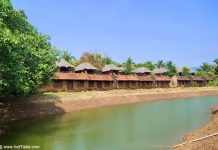
Holistic Living At Swaswara, Om Beach In Gokarna

Where To Stay In Shekhawati? Consider Piramal Haveli
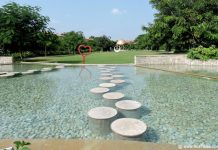
Westin Pushkar Resort & Spa – Luxury Travel in Pilgrim’s city

Living The Lucknow Life With Clarks Awadh
Roman holiday: travel tales from historical city of italy.

The city of Rome was etched in my heart when Audrey Hepburn enchanted me as a young princess. She escaped the royal life for a day of adventure with Gregory Peck in the Hollywood movie “A Roman Holiday.”
Sightseeing on Roman Holiday
As we stroll through its ancient streets, the city of Rome unravels layers and layers of history like a palimpsest, transporting us back in time. The city has existed across different periods – ancient Republican, imperial, medieval, Renaissance and modern. It symbolized the inner structure of the human mind for the psychologist Sigmund Freud. To the historian, it is “Roma Aeterna or the eternal city”. It evokes images of a glorious classical past of the European civilization. To the pilgrim, it is the center of the Christian world and the Roman Catholic Church as it encloses the independent state of the Vatican.
The foundation of Rome

The Tiber river snakes through the city whose earliest settlements grew on the seven hills that dot the eastern side of the river. Roman poets such as Virgil, Horace, and Ovid emphasized the primacy of these seven hills as a political and sacred focal point for “Roma Aeterna” during its development. Across the river, on its western side, lies the elevated land of the Vatican. The Vatican, of course, draws millions of pilgrims and tourists every year. The ruins and monuments of ancient and imperial Rome lie mainly to the east of the river. The muraglio or thick embankments of travertine rock built along the river in the 19 th century protect the city from flooding.

Myth of Birth
The Palatine hill is the geographical heart of Rome around which the city grew. The foundation myth of Rome credits a pair of twins –Romulus and Remus-for founding the city. It is here in the “Lupercal” (cave of wolf) that the twins of Mars and Rhea who were abandoned on the Tiber were nurtured by a she-wolf and raised by a shepherd. According to this legend, they later went on to become the founders of Rome but a quarrel between them resulted in the slaying of Remus by his brother.
Rome the City of Fountains
Rome is a city of piazzas (large town squares) and Fontana’s (fountain). The large open squares characteristic of European cities are centers of social life where people meet, share experiences and forge bonds. They symbolize the culture, heritage, and identity of the community and foster a sense of belonging to its citizens. Decorative fountains often adorn the piazzas of Rome reinforcing the soothing power of water in Roman life. Moving around the city, we pass through so many piazzas and fountains that we lose count of them!

Fontana di Trevi
We began our tour of Rome by walking to the largest sculpture of Baroque art in the world – Fontana di Trevi . Yes, it is the same fountain that was immortalized by Federico Fellini in his film “La Dolce Vita”. This fountain was cleaned and restored by the designer house Lendi in 2015. As one approaches the Piazza di Trevi , the sound of the gushing water grows louder. The narrow street with its red brick buildings – via del Lavatore- dramatically opens out into a large space with a spectacular fountain which nestles in the junction of three roads or trevie. The imposing marble palace Palazzo Poli forms the backdrop. The curved rows of seats in front of the fountain give it a theatrical touch.

In ancient times, this was the terminal point for Aqua Virgo, the aqueduct built by Augustus to provide water for the thermal baths. According to legend, thirsty Roman soldiers were led to this spring by a young roman girl. In the 18 th century, Pope Clement XIII commissioned its restoration to the Italian designer Nicola Salvi. It was completed by Pietro Bracci.
The central figure is the bearded Oceanus. He is the powerful god of the seas, standing astride a chariot in the shape of a shell. Tritons control the hippocampus or mythical sea-horses which burst out of the fountain symbolizing the waves, the rough and the calm waters of the sea. Different species of plants are carved on the marble rocks which seem to merge seamlessly into the water creating a sense of movement. Allegorical figures of Abundance holding the cornucopia (the horn of plenty) and Health holding a cup from which a snake drinks, are sculpted in the niches on either side of Oceanus.

According to tradition, throwing a coin into the fountain over one’s right shoulder ensures a revisit to Rome. Throwing two coins will mean a new romantic person in your life! Throwing three coins will lead to marriage!
Altare Della Patria
Piazza Venezia is the central hub of Rome. Here an imposing monument of unified Italy rises as an ‘Altar to the Fatherland.’ Called “Il Vittoriano” it is dedicated to the first king of unified Italy Vittorio Emanuele II. Built with sparkling white Brescian marble instead of the beige travertine stone used in traditional Roman monuments, it was called “ la macchina da scrivere ” (the typewriter) by the American soldiers marching through Rome in 1944. It also earned the nickname “ la torta nuziale ” (the wedding cake) because of its appearance! Designed by Guiseppe Sacconi in 1885 it was completed after four decades. A medieval village with the Papal villa and fortifications on the Capitoline hill were razed to the ground to raise this gigantic structure symbolizing Italian solidarity under the imperialist regime.

At the bottom level is the central figure of Dea Roma clad in the traditional Roman toga with processions of Italian citizens flanking her on both sides. The Tomb of the Unknown Soldier with an eternal flame lies beneath the statue of the pagan goddess. An equestrian statue of Victor Emmanuel II dominates the second level as a personification of the Risorgimento or the resurrection of the new Italian state. The huge Corinthian columns of the monument imitate the past glories of ancient Rome. Two statues of goddess Victoria riding on quadrigas (chariots drawn by four horses) are perched atop the building. Under the fascist rule of Mussolini, this grandiose monument became the site for rallies, speeches and triumphal marches promoting his neo-imperialistic agenda.
The Colosseum visit during our Roman Holiday
Perhaps no other structure represents Roman power than this vast gladiatorial arena called The Colosseum. It was built by slaves brought from the sacking of Jerusalem by Emperor Vespasian. The invention of concrete by mixing the volcanic material po zzolana with sand, lime and rubble helped to accelerate the pace of construction. This oval Flavian amphitheater was inaugurated by his son Titus in 80 CE. Gory games that lasted for hundred days were held here. Gladiators fought lions and other wild animals while the crowd roared at the bloody combats!
Etymology & Architecture of Colosseum

The Colosseum or Coliseum gets its name from a giant statue of Nero or ‘Colosso di Nerone’. Vespasian built the amphitheater on the site of Nero’s palace. The structure has three stories of arched entrances supported by Ionic, Doric and Corinthian columns. A fourth-story has rectangular windows. An underground ‘hypogeum’ beneath the arena housed caged animals used in gladiatorial fights. There were 80 entrances known as ‘vomitoria’ so that huge crowds could be evacuated in 15 minutes! The arena was encircled by a three-tiered seating area called ‘cavea’ with numbered seats. It could hold more than 50,000 people at a time! A huge awning or ‘velarium’ held by masts protected the spectators from sun and rain.

With the fall of the Roman Empire in the 5 th century AD, the Colosseum was abandoned and plundered. The marble was quarried and used to build huge palaces and churches including St.Peter’s Cathedral. Weather and natural disasters like earthquake and lightning destroyed a large part of the structure. But restoration efforts began in the 18 th century making it an iconic symbol of Rome for tourists from all over the world.
To be continued – read part ii

For me, writing is a form of travel which allows me to journey out of my little world of everyday routine. Writing is also an inward journey which deepens my understanding of the places that I have visited and appreciate the diversity of different cultures. It’s like the music which I learned as a child. It gives wings to my imagination and nourishes my soul. My passion for reading led me to do my post graduation in English literature from Mysore University. After working as a lecturer for a brief period, I became a homemaker. It gives me space and time to do the things I love most – music, reading, surfing the net to learn about the things I do not know.
Recommended travel blogs on European Tourist attractions.
Walk around Dresden old town, Things to do in Dresden, Germany
Walking around Prague Castle, Czech Republic
Handsome Parliament of Hungary, Budapest
Wieliczka Salt Mine, Krakow, Poland – A UNESCO World Heritage Site
Strbske Pleso Lake & around – Slovakia Tourist Attraction
RELATED ARTICLES MORE FROM AUTHOR

Travel Medical Insurance: Know Key Inclusions of Travel Insurance

10 Must-See Things In Bucharest Romania

Dubai Travel Guide For Indian Travelers
11 comments.
They say Rome was not built in a day. I say, Rome cannot be seen in a day! In fact, even a week is not enough…there are sights to see at every inch!
Rome is right on top of my wish list – let’s see when do I get a chance to visit it. At the moment I can see – hope to see it one day.
Rome is just amazing. My highlight of this city was the Colosseum. I absolutely loved my tour of the interiors of the Colosseum. Vatican too is just amazing.
Tempt me as much as you can Ami 🙂
Rome is such a beautiful place ..Can’t wait to visit next year 🙂 Have bookmarked this page
I hope to visit it at leisure sometime. This is one place I can live for a while.
benvenuto, Rome is a beautiful place, glad you deceided to Visit us. if around tuscany do visit us, we run a Bed and Breakfast here , special service for our Indian Friend 🙂
I hope to visit Italy sometime – the stars have not yet aligned for that journey.
Thanks for sharing a great post! And the images are beautiful…
very good..appreciative..write more
Thanks for sharing the information, I got to know how beautiful Rome is…..
LEAVE A REPLY Cancel reply
Save my name, email, and website in this browser for the next time I comment.
Popular Posts

Kazakhstan – A Visual Introduction To The Beautiful Country

Kalidasa Natyashala Or Amphitheatre At Ramgarh

Srirangam Temple, Trichy – The Largest Living Temple

Qawwali At Yousufain Dargah, Hyderabad

Kurukshetra: Land Of Mahabharat War & Bhagwad Gita

Experience an unforgettable beach holiday in Tuscany
Over 6.780 Google reviews
Plan your holiday
Find the date of your next stay, just 800 metres from the beach, water park for children and grown-ups, entertainment for all ages, insurance with cancellation coverage, excursions and city of art, hu park albatros village.
hu Park Albatros village is the perfect tourist village for your beach holiday in Tuscany , located between famous archaeological sites throughout Italy and the pristine beaches of the Etruscan coast. Entertainment activities for children and teenagers, a giant water park with something for everyone, and a host of tours and excursions to discover the surroundings. That's just a sample of our what our family village in San Vincenzo has to offer! The beaches of Tuscany await for a fun-filled holiday in the sun.
Main details
Village opening dates.
20 April 2024 - 22 September 2024
Coverage available in the central area and swimming pool area
Nearest airports
Pisa: 94 km Florence: 146 km
Pet friendly
Pets are allowed in all accommodations, except the hu room
Nearest cities
San Vincenzo: 10 km Follonica: 25 km Livorno: 72 km
Open seven days a week

Show more photos
🌺 spring promo 🌺, huniverse card, explore our accommodation.
Our accommodation

The kitchen with everything you need to start the day with the smell of fresh coffee and the chirping of the birds. A space all of your own where y...

Dome or ridge tents, mini caravans or over-cab motorhomes. Whatever your style, you’ll find the right pitch for you and your family.

The authenticity of camping and all the comforts of home: this is our way of glamping in San Vincenzo , in the heart of the Etru...

The charm of the open air, the comfort of a hotel room. Right there, a stone’s throw from the village’s pools and restaurants, your open-air experi...

Right next to the sea
hu Park Albatros village is surrounded by a centuries-old typically Tuscan pine forest, located beside an unspoiled beach within the Val di Cornia natural parks and some of the most beautiful archaeological areas in Italy. Località Pineta di Torrenuova - 57027 San Vincenzo (LI)
Services and entertainment

- Entertainment

Food and market

Sport and Fun

HU NEWSLETTER
Sign up for our newsletter, we promise not to send you too many emails :), your next adventure starts here.

Our activities
A guided tour on the Island of Elba • Florence tour • Honey tasting and didactic farm •

Discover the area
Piombino, Follonica and San Vincenzo: 3 towns looking out to sea • Siena, things you absolutely have to see • What to see in Livorno •

Family holidays • Sports and activities at the beach •
All the services you'll find on arrival
Guests are crazy about..., restaurants, food & drink.
- T·POP Restaurant
- B·EAT Restaurant Take Away
- Bar Gelateria Italia
- Snack Bar and Disco
Equipped bathroom
- Private bathroom in mobile home and bedrooms
- Public bathrooms
Cleaning services
- Laundry - Additional charge
- Accommodation cleaning
- End-of-stay cleaning is available upon request
- Market Piazza Italia
- Herbal medicine counter
- Pets are allowed (except Hotel Mulinaccio). Charges may be applicable
Swimming pool area & facilities
- Swimming pool
- Free! Each accommodation has a parking space near.
- Guests at the Hotel Mulinaccio can park their car in the car park next to the hotel.
- Table tennis
- Pool tables
- Jungle Tour
- Sports area
- Bicycle and go-kart rental
Reception services
- Check-in and check-out
- Customer care (including telephone)
- General information about the tours
- Linen and bathroom set rental
- Luggage storage
- Early check-out or extension of stay
- Reporting technical problems and maintenance
- Map of the village
- Return of identification bracelet
- Car parking pass
- Baby set rental
- Lost property
- Sale of theme park tickets
Languages spoken
Entertainment and family services.
- Free! Coverage available in the central area and swimming pool area.
- Air conditioning
- Mobile home for disabled guests
- Fax and photocopy service
- Safety deposit box rental
Read before booking
The reception is open every day between 08:00 and 22:00. Check-in from 12:00 for the pitches, or from 16:30 onwards for the mobile homes.
The tourist tax must to be paid locally.
Check-out by 12:00 for pitches, or by 10:00 for mobile homes. Please note that with the check-out the use of services ends.
Refund of the penalty for stay cancellation also in case of cancellation due to positivity to the virus.
Children and beds
To see the correct price and availability information, please add the number of children and their ages to the search. Baby set (highchair, cot and bathtub) (€6.00 per day).
The minimum age for check-in is 18 years.
Pets are permitted in all hu openair accommodations (except the hu room), up to two pets per mobile home. If pets are brought to the accommodation, an additional payment is required at all accommodations for end-of-stay cleaning. For the pitches, there is no extra fee to bring your pet with you.
For group reservations please contact [email protected] for a quote.
Cards accepted at this hotel
hu Park Albatros village accepts VISA, MASTERCARD, MAESTRO, CARTASI, UNIONPAY and ATM CARD and reserves the right to temporarily hold an amount prior to arrival.
Discover the other structures in Italy
Lussemburgo.
- Fabulous village | Rome
Check-in - Check-out
Travel with pets?
Services of property
Gli ospiti vanno pazzi per..., important info, number of guests.
Who is traveling with you?
Italy Tours and Experiences
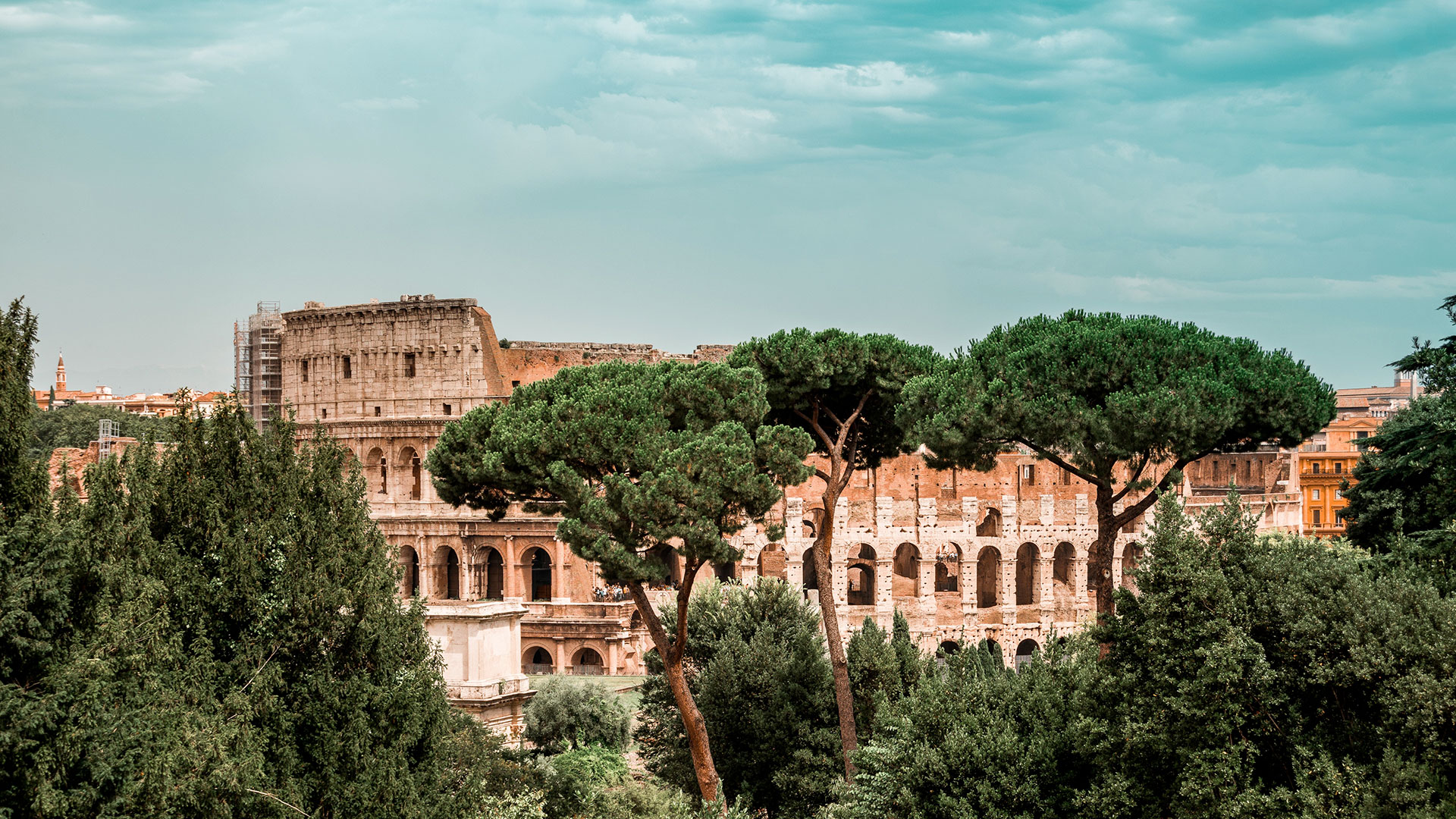
Choose your village below to start exploring the best attractions Italy has to offer.
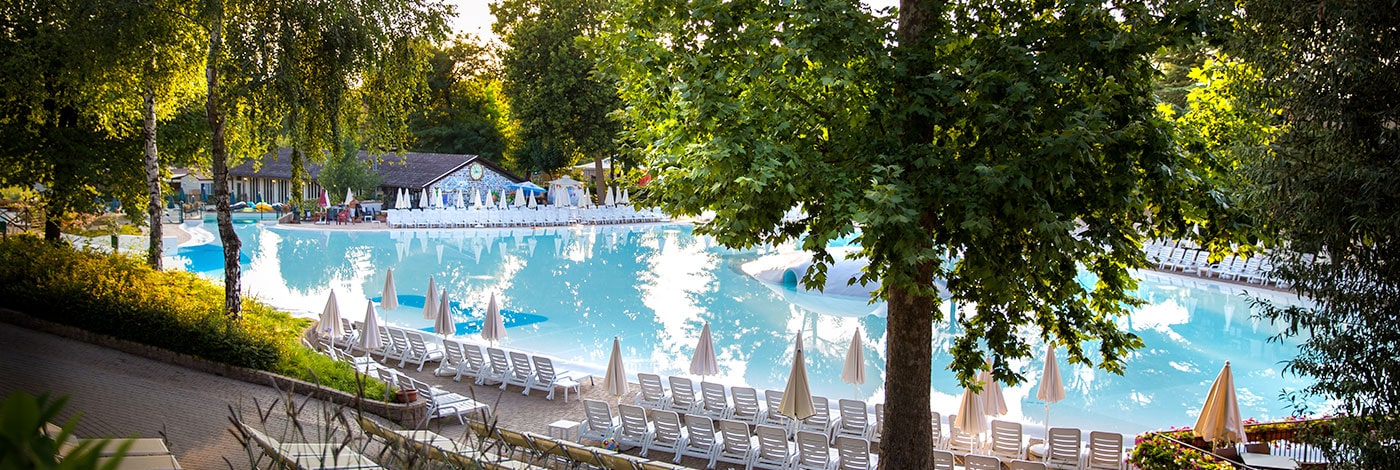
hu Altomincio village

hu Norcenni Girasole village

hu Park Albatros village
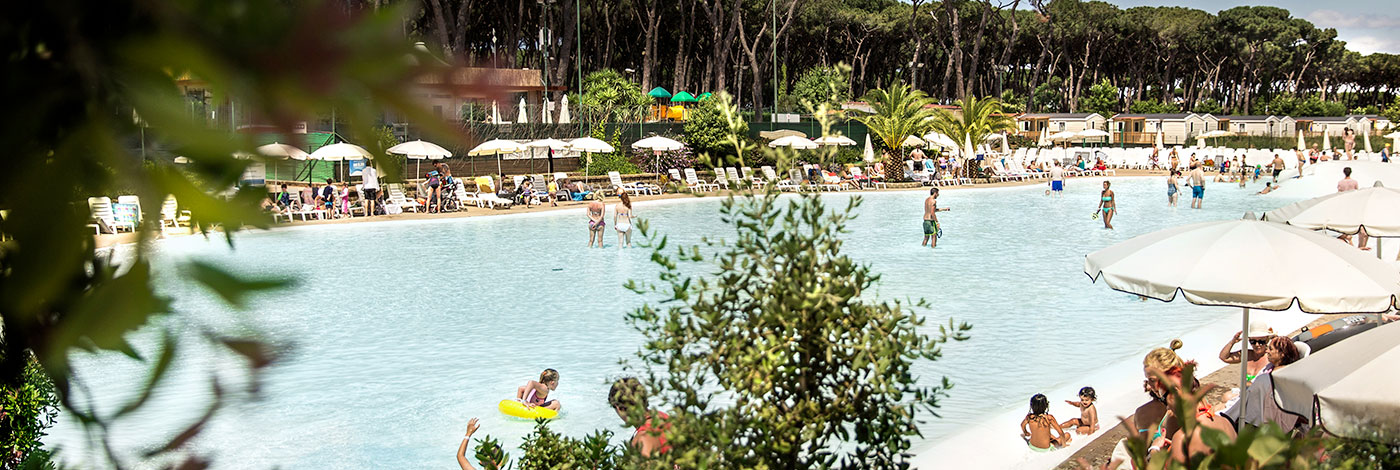
Fabulous village
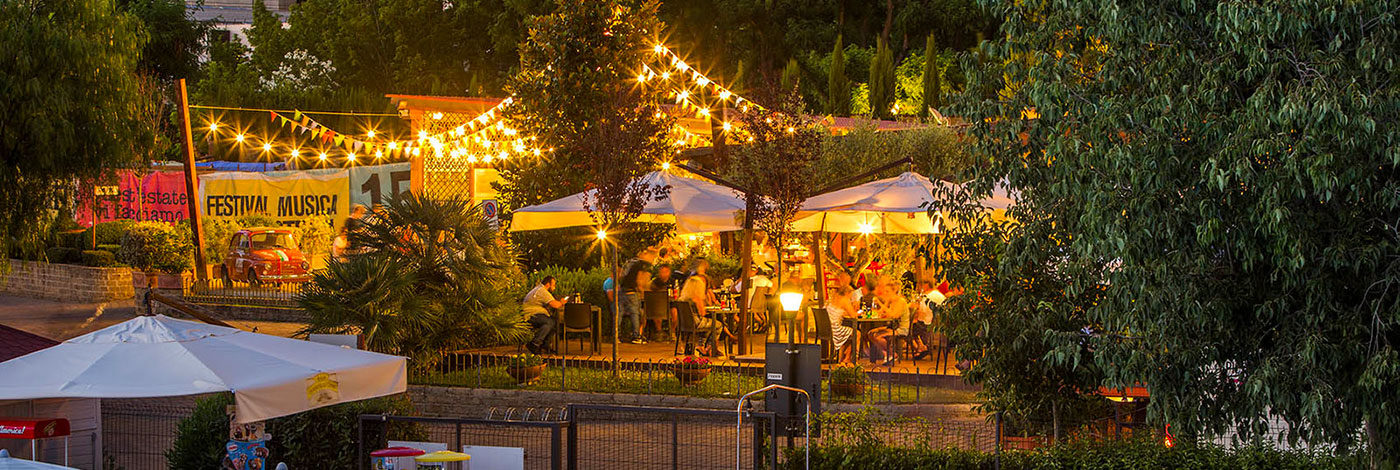
hu Roma camping in town

hu Firenze camping in town
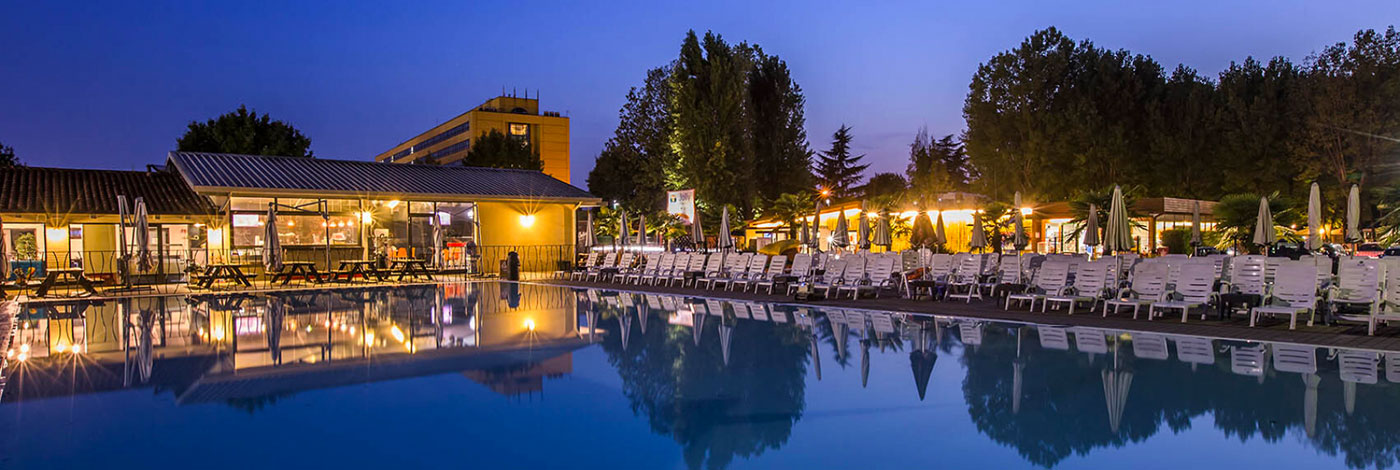
hu Venezia camping in town
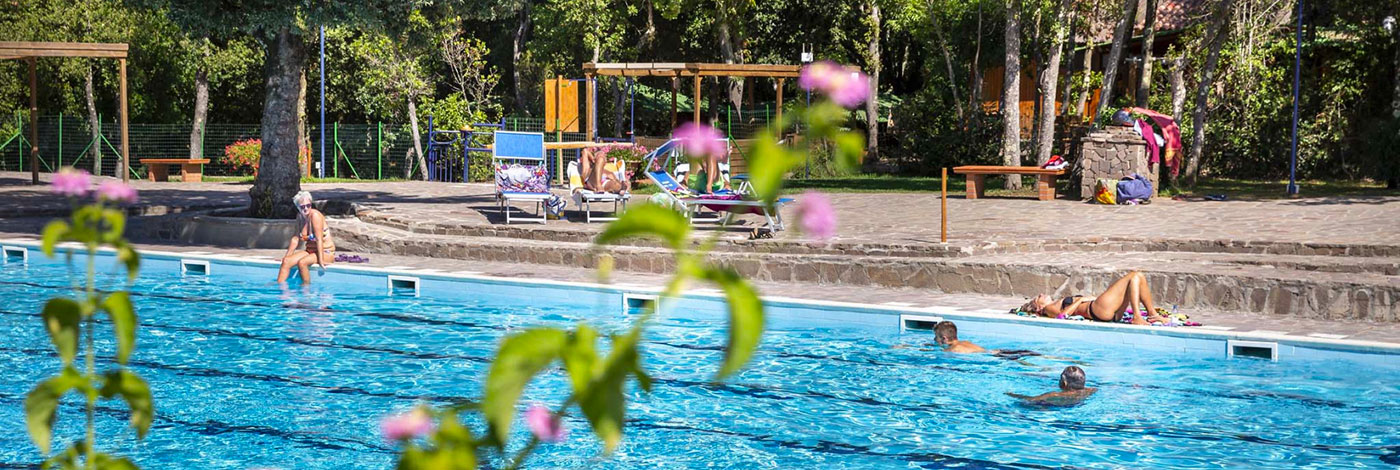
hu Montescudaio village
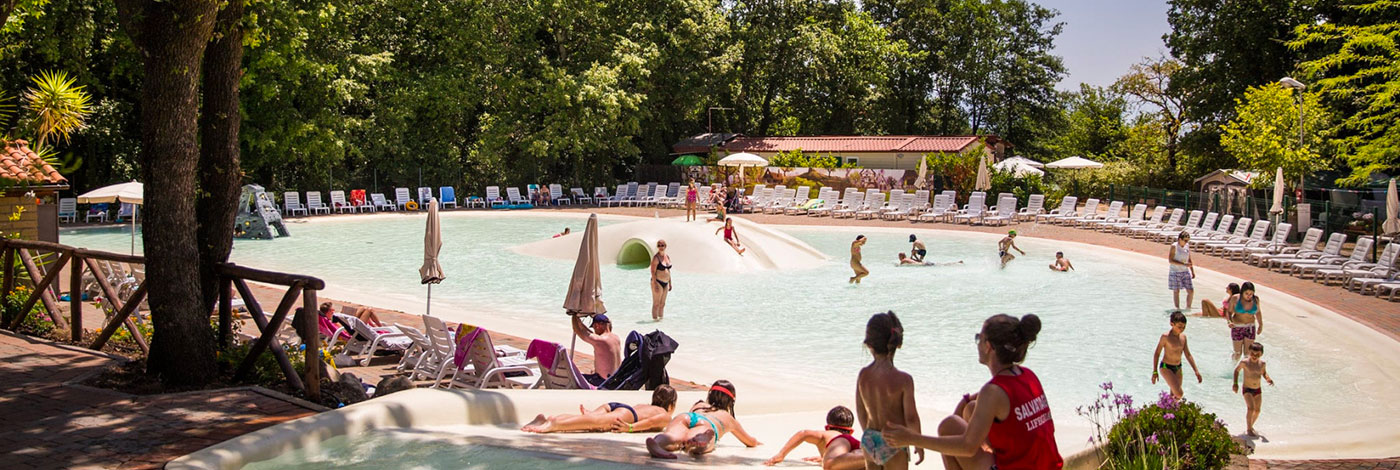
hu I Pini village
We’re sorry, this site is currently experiencing technical difficulties. Please try again in a few moments. Exception: request blocked
Who Are the Roma People? A History of Persecution, Displacement, and Resistance
By Anoushka Lal

“We were silent for thousands of years, But our hearts are full, Of unuttered sentences, Like a sea receiving Blue river waters, All its life long” — poem by Romani writer Dezider Banga
The Romani people, with a global diaspora exceeding 15 million individuals and numbering 1 million in the United States alone, represent Europe's largest ethnic minority . But their story is far from monolithic; Roma, or the Romani people, is an umbrella term for various groups identified as Roma, Gitanos, Sinti, Ciganos, and Romanichals located across the world. Often pejoratively referred to by the exonym “Gypsies” , these ethnolinguistically diverse Romani groups forge their own identity based on geography and ancestry. Every Romani family has a different story to tell.
Yet being forced to live on the fringes of mainstream society has been a consistency in the Roma experience. Since at least the 14th century , the Romani people have endured being marginalized, subjected to systemic prejudice, and even enslaved in the countries they inhabit. To this day, anti-Roma racism persists and Roma communities lack state adequate protections .
Each year, April 8 is observed as International Roma Day to commemorate the millions of Romani people who have suffered violence and prejudice throughout history, as well as those who continue to fight to preserve their culture and heritage today.
Music, in particular, is vital in Roma culture. As accomplished instrumentalists, the Roma have significantly influenced various music genres in Central and Eastern European countries, from jazz to bolero. In fact, the Spanish Roma (Gitanos) are credited with originating flamenco music and dance.
“Despite prohibitions, erasure, and punishments, many Romani groups and families across Europe also kept our native language, crafts, and identity,” Dr. Margareta Matache, director of the Roma Program at Harvard University’s FXB Center for Health and Human Rights, tells Teen Vogue. “Arguably, this is one of the Romani people’s oldest traditions and tactics of resistance as a collective, a people, and one that may teach the world that borders, distorted histories, and nationalism are not the only path for preserving cultures and languages.”
An Indo-Aryan ethnic group, the Roma originated in the northern Indian region of Punjab thousands of years ago. There are conflicting estimates on the timeline, but Britannica estimates they migrated to Europe around the 13th or 14th century . “Soon after our ancestors migrated to European territories, they encountered a distinct experience of being both cast and colonized within,” explains Dr. Matache. They were forced into slavery in Moldavia and Wallachia (present-day Romania) in the 14th century, and only emancipated in the mid-19th century.
At that point, some groups of Romani people migrated to other European countries and even to the United States, Cuba, and Brazil. Those who remained in Europe faced systematic depopulation and neglect across the continent. Undoubtedly, one of the most abhorrent of these persecutions was the Porajmo s , the Romani word for the Holocaust.
During World War II, the Nazis orchestrated a systematic genocide targeting the Romani community. Romani individuals, branded as impure and racially inferior, were confined to concentration camps, where they were subjected to forced labor and exterminated. An estimated 250,000 to 500,000 Romani were killed .
According to the United States Holocaust Memorial Museum, the crimes committed against Roma remained unacknowledged across Europe for several decades. By then, countless Roma families and networks had been decimated — an estimated quarter of European Roma had been murdered . They were rendered the forgotten victims of the Holocaust .
Anti-Roma racism persisted in the aftermath of World War II. In Czechoslovakia and the present-day Slovakia and Czech Republic, a shameful practice was implemented from 1966 to 2012 to forcibly sterilize Romani women . Only after a prolonged campaign for justice led by Romani women survivors did the Czech Senate finally take steps to compensate the thousands of victims.
Forced evictions were another tool used to oppress Roma. In 2016, a staggering 60% of Romani families living in France were forcefully removed from their homes . The stark reality is that many non-Roma Europeans endorse Roma segregation and oppression. A 2019 Pew Research poll found that the majority of citizens in over 10 European nations held unfavorable views of Roma, with overwhelmingly high percentages found in Italy (83%), Slovakia (76%), and Greece (72%).
The treatment of Roma has not been any fairer in the United States. In Dr. Matache’s 2020 study Roma Realities , two-thirds of the 363 Romani Americans interviewed reported experiencing discrimination based on their heritage. Dr. Matache emphasizes that anti-Roma sentiment is worsened by the perpetuation of negative portrayals and stereotypes of Roma in the media. “Four out of every 10 Romani interviewees experienced unfairness or disrespect from a teacher,” she says. "TV series like My Big Fat G*psy Wedding have negatively affected the school environment, leading teachers and other children to view Roma children as unworthy of education or protection.” Consequently, she adds, “Roma children feel compelled to conceal their identity, but in doing so, they have to endure stereotypes from teachers and peers in silence."
Lacking sufficient government support in basic housing, long term-employment, affordable healthcare, and desegregated education, many young Roma are often ensnared in a relentless cycle of adversity, poverty, and violence. This cycle extends to disproportionately high rates of incarceration and experiences of police profiling and brutality.
In an incident that the media and Roma activists compared to the 2020 murder of George Floyd, Stanislav Tomas , a Romani man in the Czech Republic, died in 2021 after multiple police officers pinned him to the ground and knelt on his neck for several minutes. (Police released autopsy results that claimed the cause of Tomas's death was unrelated to the manner of his restraint.)
In response to this persistent discrimination, many Romani empowerment organizations have are taking a stand. Phiren Amenca , a network of Roma and non-Roma volunteers, works to challenge stereotypes and racism, and also create non-formal education opportunities for Roma youth. Meanwhile, the Dikhlo Collective , with members based in the US and Hungary, champions “unapologetic identity” by distributing packages of art sourced from Roma artisans worldwide at no cost. Based in Romania, E-Romnja is a feminist organization committed to amplifying the voices of Roma women in society. It works toward reducing school dropout rates among Roma girls, engaging women in grassroots democracy activities, and hosting events like Romnja Power Month .

By Kara Nesvig

By Donya Momenian

By Liv McConnell
Several young women involved with E-Romnja speak with Teen Vogue via email about inheriting the challenges faced by their elders. Says Elisa Dinu, an E-Romnja youth worker and coordinator of Roma girls’ and boys’ groups from Valea Seacă, a village in Romania, “For me, being a young Roma means fighting every day for my rights. It means battling the prejudices of non-Roma people in institutions every day.”
Natalia Căldăraru, a youth worker from the southern Romanian city of Giurgiu, agrees: “Being a Roma girl, and especially being a visible Roma girl — having dark skin, coming from a traditional community, speaking the Romani language — all of these can be challenges. I have experienced them on my skin…. I have had moments when I tried to hide my Roma identity. But over time, I realized that I should not be ashamed of who I am; it is the racists who should be ashamed of discriminating.”
E-Romnja works primarily to instill self-empowerment in Roma women by providing them with community-organizing and employment opportunities. The hope, according to young women like Dinu, is that by standing united, change will come: She wishes “Roma girls around the world the courage and strength to fight against all oppressive systems! Opre Romnja! ( Stand up, Roma !)”
Stay up-to-date with the politics team. Sign up for the Teen Vogue Take
Want to read more Teen Vogue history coverage?
Helen Keller’s Legacy Has Been Sanitized
Punk Music Has an Unacknowledged Debt to Latinx Refugees
Why We’re Still So Obsessed With the Salem Witch Trials
Buck v Bell: The Supreme Court Case That Fueled the Eugenics Movement
These '90s Teens Fought the Minneapolis Police and the KKK

By Candice Norwood, The 19th

By Ben Tumin

By Anjana Pawa

By Maya Rupert

IMAGES
VIDEO
COMMENTS
• Colosseum • Altare della Patria (Victor Emmanuel II National Monument) • Campidoglio • Piazza Venezia. Let's start with the Colosseum, monument of Rome par excellence largest amphitheatre in the world and Rome's must-visit ancient sight.The area of the Imperial Forums tells the most ancient history of the city: temples, arches, basilicas will accompany you up to the Altare della ...
Let's create your open-air holiday together. We love to make you feel at home, surrounded by nature and friends and family. For a family experience, with your better half, with friends or - why not - even on your own.
Amazing water parks, houses surrounded by greenery, restaurants and bars: discover all available services in the village and in the city campsites! Services built for you!
Fabulous village. Situato al crocevia fra la città di Roma ed il mare del Lazio, a soli 18 minuti dal lido di Ostia, ogni mattina potrai scegliere tra la spiaggia e l'arte della capitale e dei suoi dintorni. Un soggiorno all'insegna del relax all'aria aperta, una vacanza in famiglia in casette indipendenti, con cucina e bagno privati e immerse nella natura: ecco cosa ti aspetta al ...
hu Roma camping in town. Just a stone's throw from hu Roma Camping in Town, what awaits you is the breathtaking discovery of the capital of Italy: the Rome of La Dolce Vita, a leap into its ancient glory, admiring the most beautiful monuments, all to be found scattered around this stunning art city.But Rome also means fun, tradition and food!
Halfway between the city and the sea. Surrounded by the Roman Coast Park, at the foot of a centuries-old pine forest, just outside the city of Rome. A strategic location to enjoy both the coast and capital. Via di Malafede, 205, 00125 Roma (RM) Show Directions. Fabulous village is.
Human Company offer is based on fundamental values such as innovation, quality, sustainability, familiarity and relevance of the territory. ... hu Roma camping in town, Rome Food in a hu open air Entertainment in a hu open air ANTS - Activity Nature Training Sense hu stay Premium Green - For an eco-friendly, sustainable holiday,
La pineta secolare nasconde un mondo di comode casette e piscine in cui divertirsi e rilassarsi. E in più, il centro di Roma e la costa laziale sono a due passi! Here, for hu: Casette sotto l'ombra della pineta. Il mare, gli ombrelloni, la spiaggia, a 10km. Tour a Roma e nei suoi dintorni. Piscine, idromassaggio e lagune.
Table of Contents Show. A Little Bit about this 3-Day Rome Itinerary. Where To Stay In Rome in 3 Days. Rome Itinerary Day 1: Ancient Rome and the Historic Quarter. Rome Itinerary Day 2: Vatican City. Rome Itinerary Day 3: The Other Side.
Rome. Lazio, Italy, Europe. A heady mix of haunting ruins, awe-inspiring art and vibrant street life, Italy's hot-blooded capital is one of the world's most romantic and charismatic cities. Best Time to Visit. Best Things to Do.
Roma, an ethnic group of traditionally itinerant people who originated in northern India but live in modern times worldwide, principally in Europe.Most Roma speak some form of Romany, a language closely related to the modern Indo-European languages of northern India, as well as the major language of the country in which they live. It is generally agreed that Roma groups left India in repeated ...
Roma Camping in Town Via Aurelia, 831 (km 8,2) - 00165 - (Rm) - Mostra sulla mappa. A pochi passi da Roma Camping in Town quello che ti aspetta è la scoperta della Capitale d'Italia: la Roma… Scopri; Plus Hostel Berlin Warschauer Platz 6 D -10245 - Mostra sulla mappa. Berlino è ancora sotto il cuscino?
Italy. My travel diary: Four days in Rome blog post was first published on Culture Tourist on 14 February 2017 and updated on 16 May 2023. Last month I spent four days in Rome. The city was busy, loud, and filled with cars, but also calm, monumental and beautiful at the same time. It was my first time in Rome, so I wanted to see everything ...
The human environment interaction in Rome is a captivating blend of ancient wonders and modern challenges. The architectural marvels such as the Colosseum and Vatican City stand as testaments to human creativity and devotion. The aqueducts and urban planning of the city have shaped its landscape, providing essential resources and creating ...
Choose a house for your outdoor stay: mobile homes in the countryside, glamping tents, pitches for tents and campers or even hotel rooms and apartments. Accommodation tailored to your needs.
Practical Information. - Americans can travel in Rome (and the rest of Italy) up to 90 days as long as your passport is valid for six months after the date you'll depart Italy. For trips longer than 90 days, you must get an Italian visa. - A member of the European union, Italy uses the Euro. - Italian standard voltage runs at 220v to 230v ...
Let the campsites and villages by Human Company in Italy inspire you. -+-+ a unique holiday. You can choose between Camping in Town, Village, Family Park and Plus Hostels. Many different formulas, in different locations: 9 holiday camps in Italy spread across Tuscany, Veneto and Lazio, plus 3 luxury hostels in Florence, Berlin and Prague ...
The Vatican, of course, draws millions of pilgrims and tourists every year. The ruins and monuments of ancient and imperial Rome lie mainly to the east of the river. The muraglio or thick embankments of travertine rock built along the river in the 19th century protect the city from flooding. Walls along the River Tiber - Roman Holiday ...
Discover the wonderful world of Human Company, from our campsites open all year round to our summer villages, perfect for your holidays in Italy and beyond! ... Roma camping in town | Rome; Località Pineta di Torrenuova - 57027 San Vincenzo (LI) - GPS 43.0278511 - 10.5351544. Secure Payments. Contacts ... Travel with pets? Coupon. Book now ...
hu I Pini village. Are you looking for a relaxing holiday with your family? Do you like travelling and discovering art cities, food and nature? Let the campsites and villages by Human Company in Italy inspire you.
Launched on the occasion of International Roma Day, the Romani Memory Map for the Americas aims to recognize and honour sites of memory of the Romani community in the Americas. Coordinated by UN Human Rights, the project builds on efforts to strengthen Roma inclusion, advance public memory of Roma history and combat anti-gypsyism, the specific form of racism facing Roma.
April 8, 2024. On behalf of the United States, I extend my best wishes to Romani communities everywhere on International Roma Day. We celebrate the rich culture, language, and heritage of Roma, including generations of Romani-Americans who have contributed to the United States. Roma continue to face racism, discrimination, and xenophobia in ...
Experience a tailor-made holiday, perfect for those who love sports or art cities. A holiday to discover the Chianti region or Rome. A family vacation, with your children or with your friends. Discover all our travel ideas.
Human Travel is joining the hu openair family! There are 5 more destinations offering access to the sea, the lake, the hills and a selection of Italy's historic cities.
But their story is far from monolithic; Roma, or the Romani people, is an umbrella term for various groups identified as Roma, Gitanos, Sinti, Ciganos, and Romanichals located across the world ...
5-star Deluxe Camping Resort: you deserve the best! A deluxe camping resort, ideal for those seeking a rejuvenating holiday. A stone's throw from Venice, hu at Union Lido Camping Village offers you a 5-star oasis of well-being and relaxation.